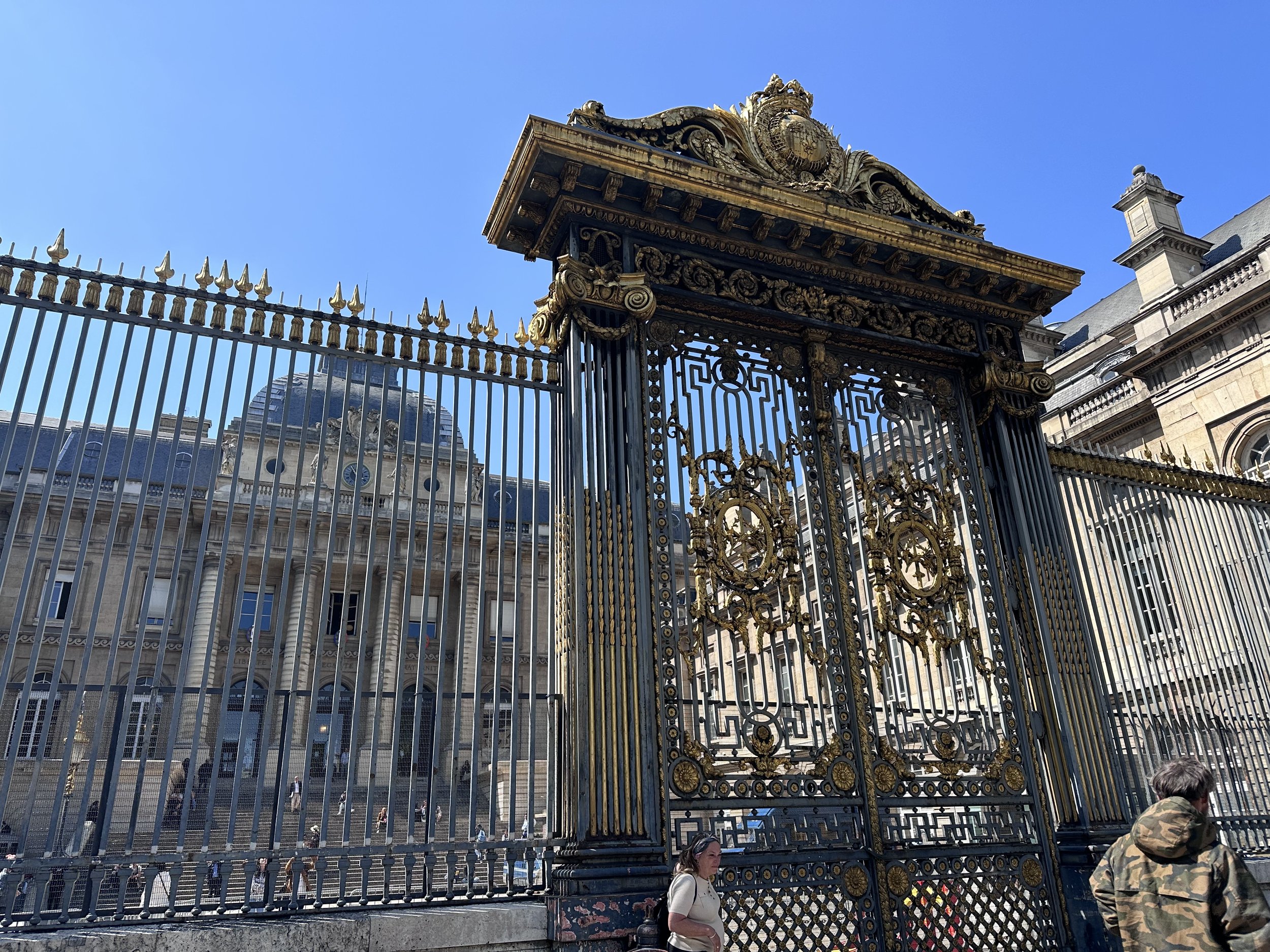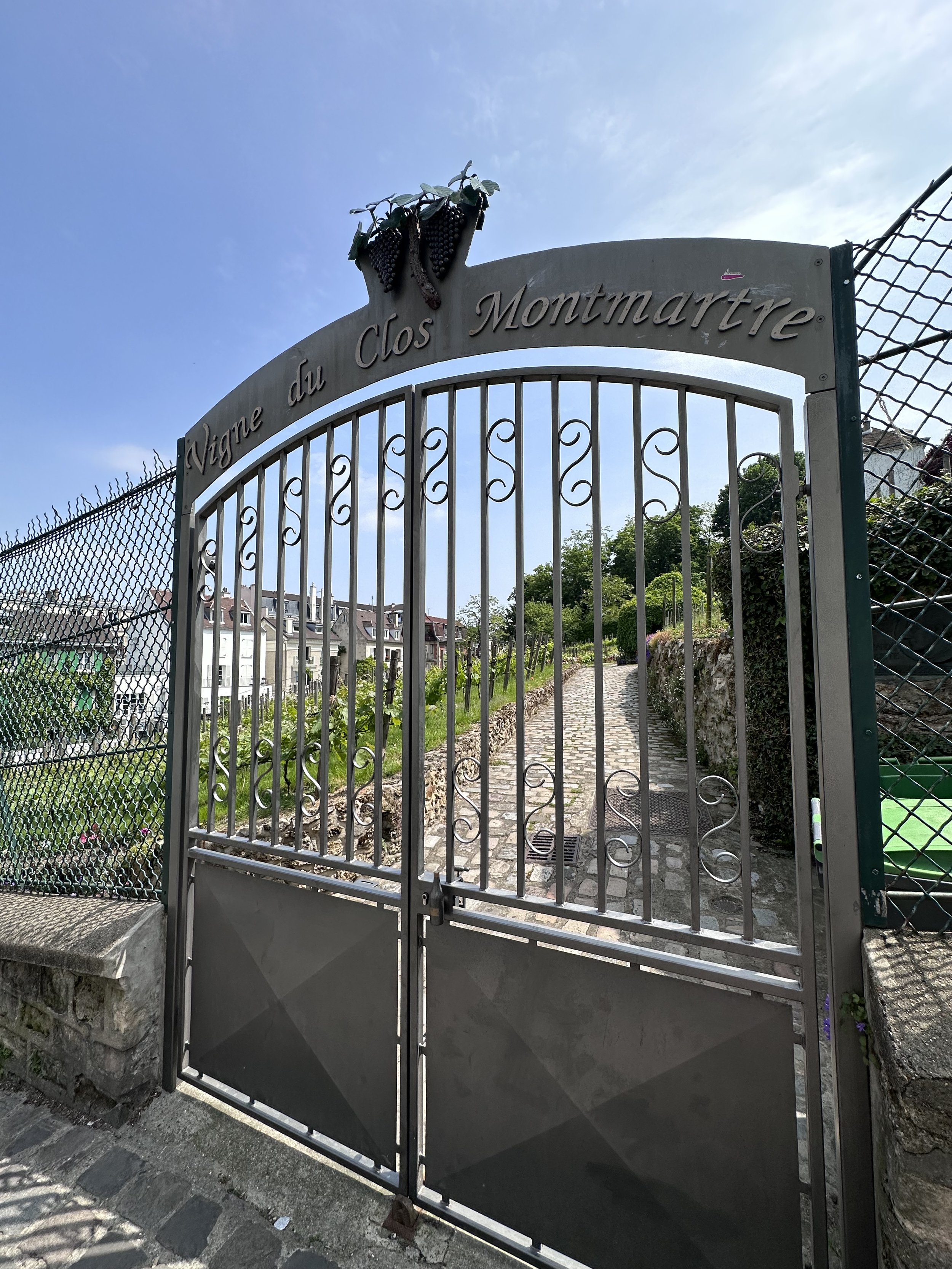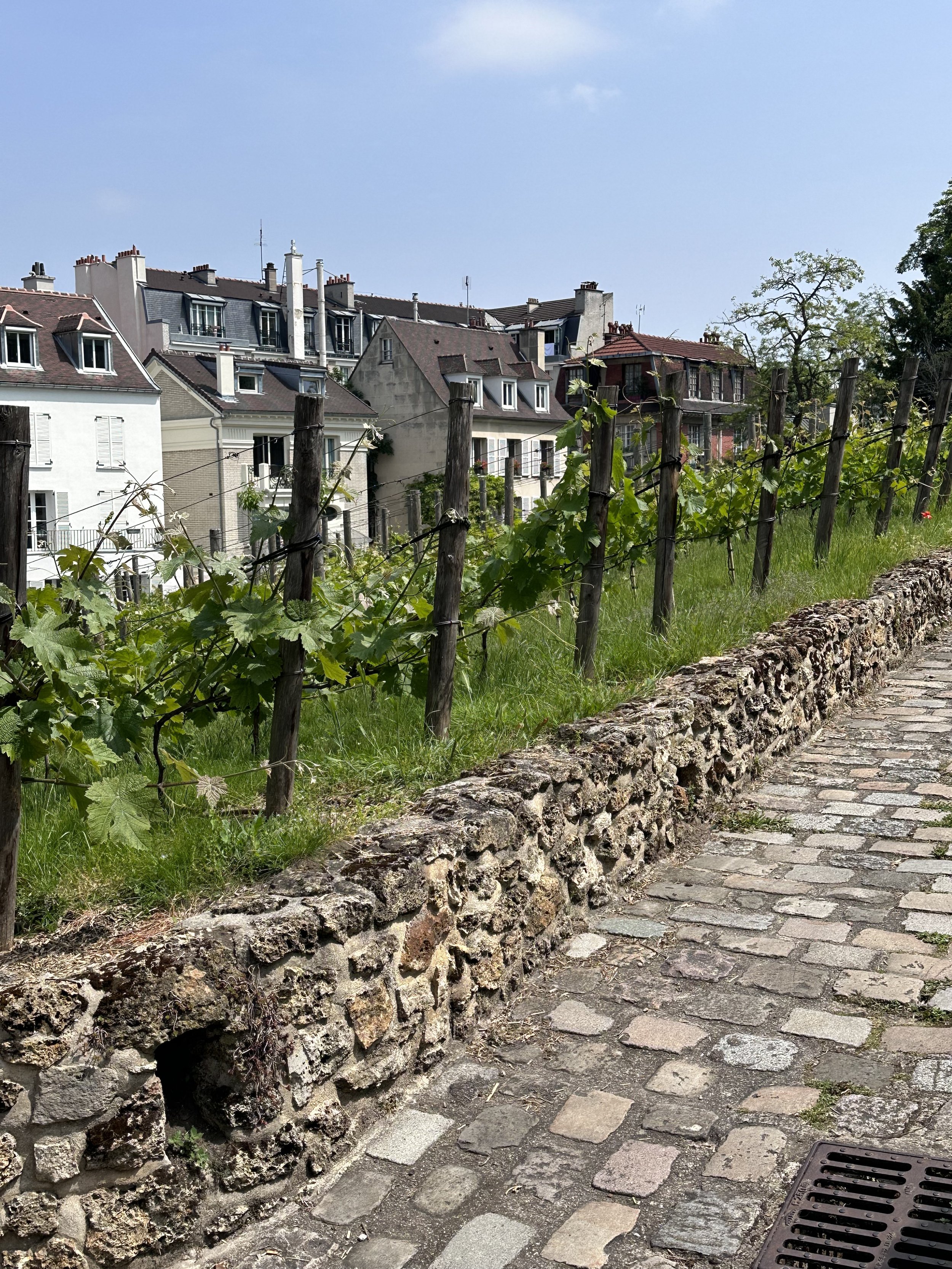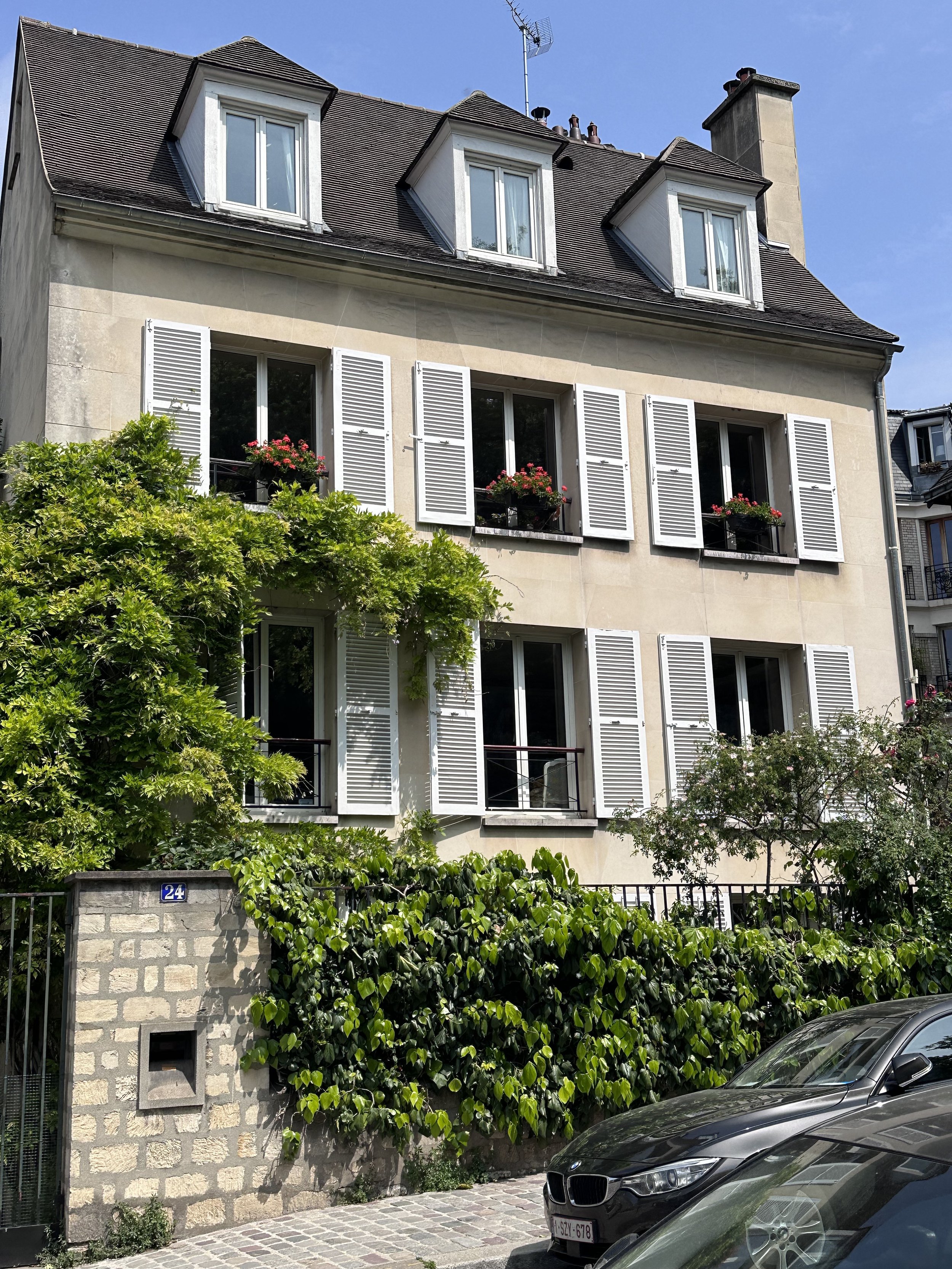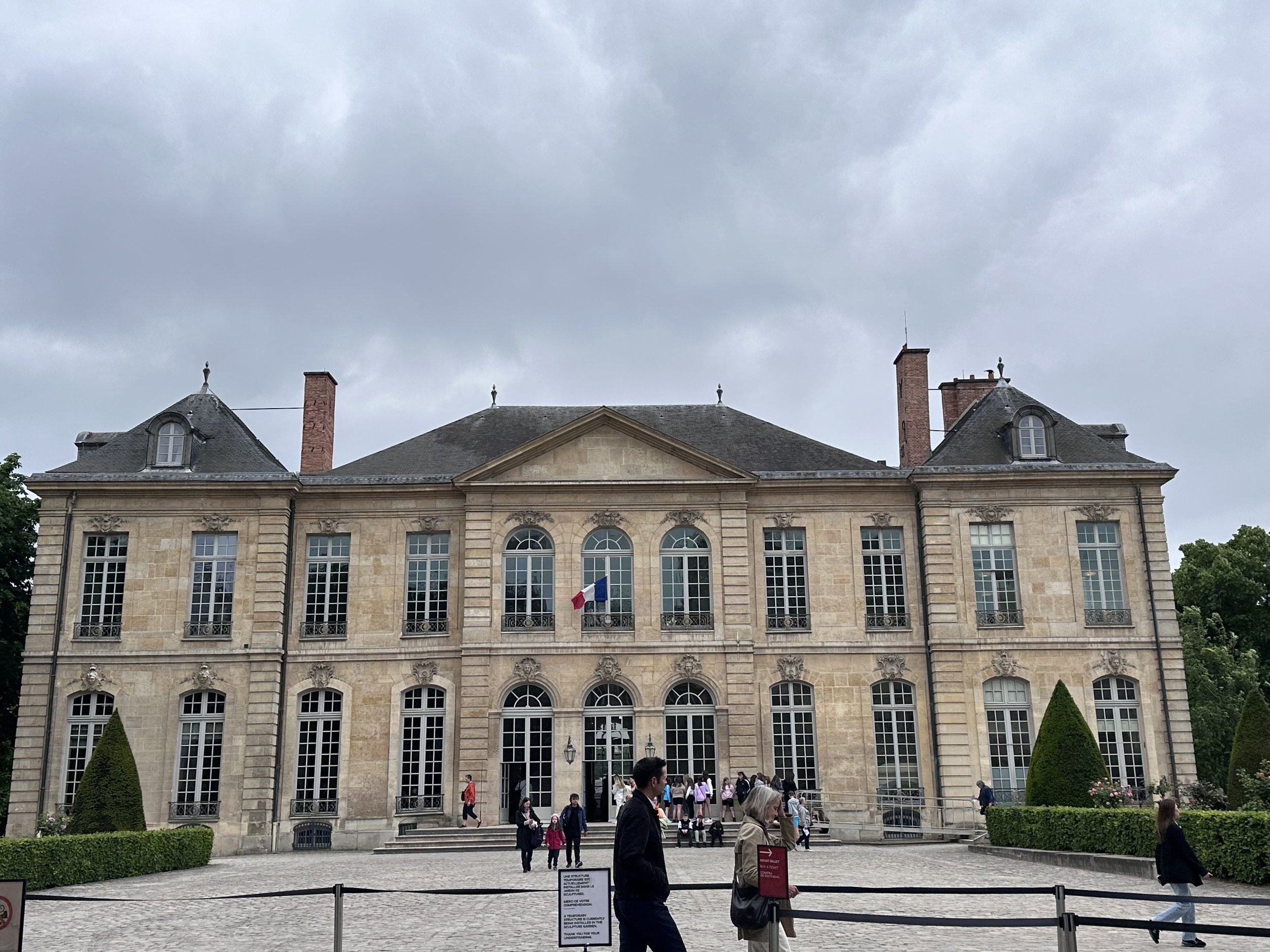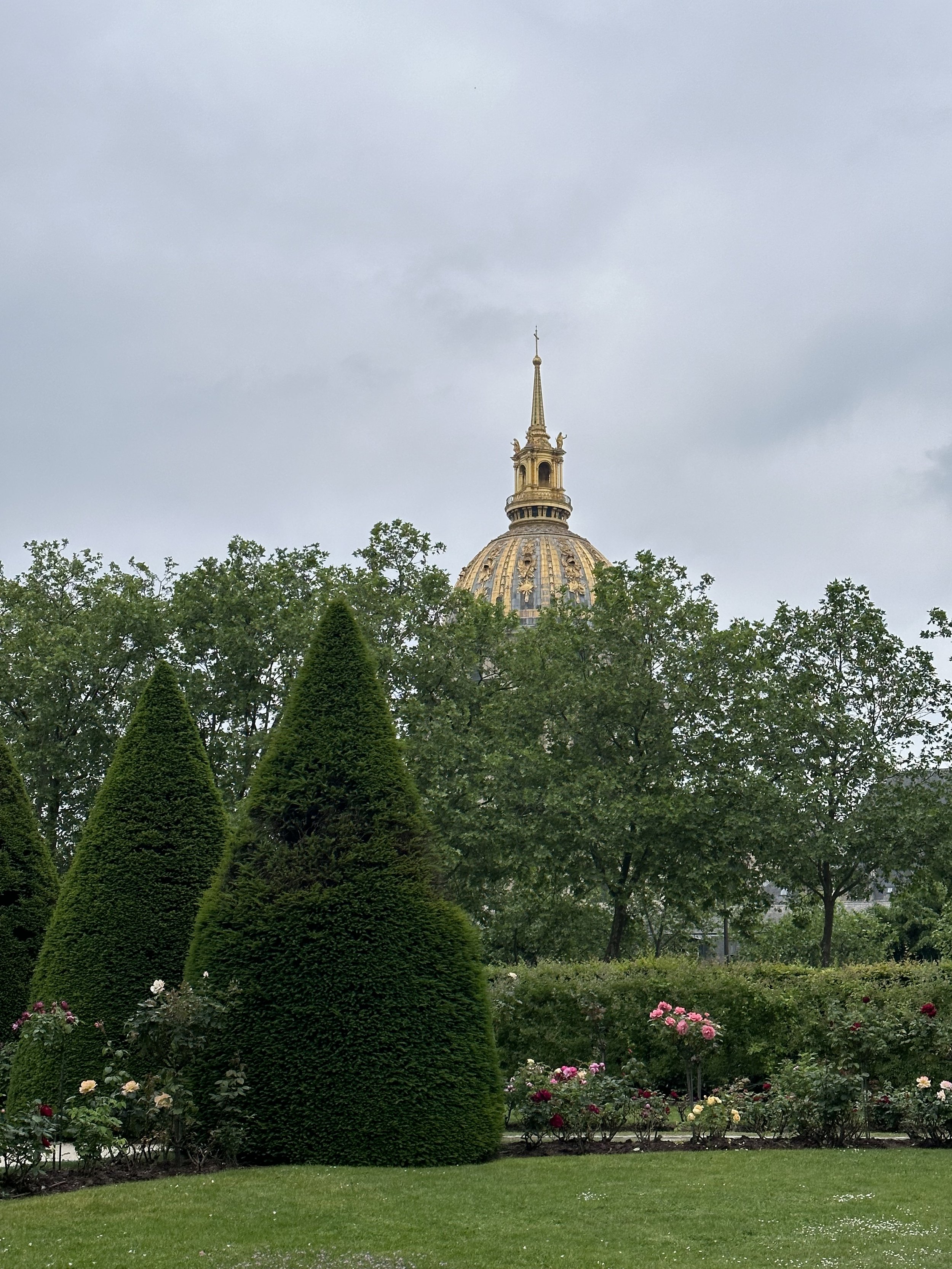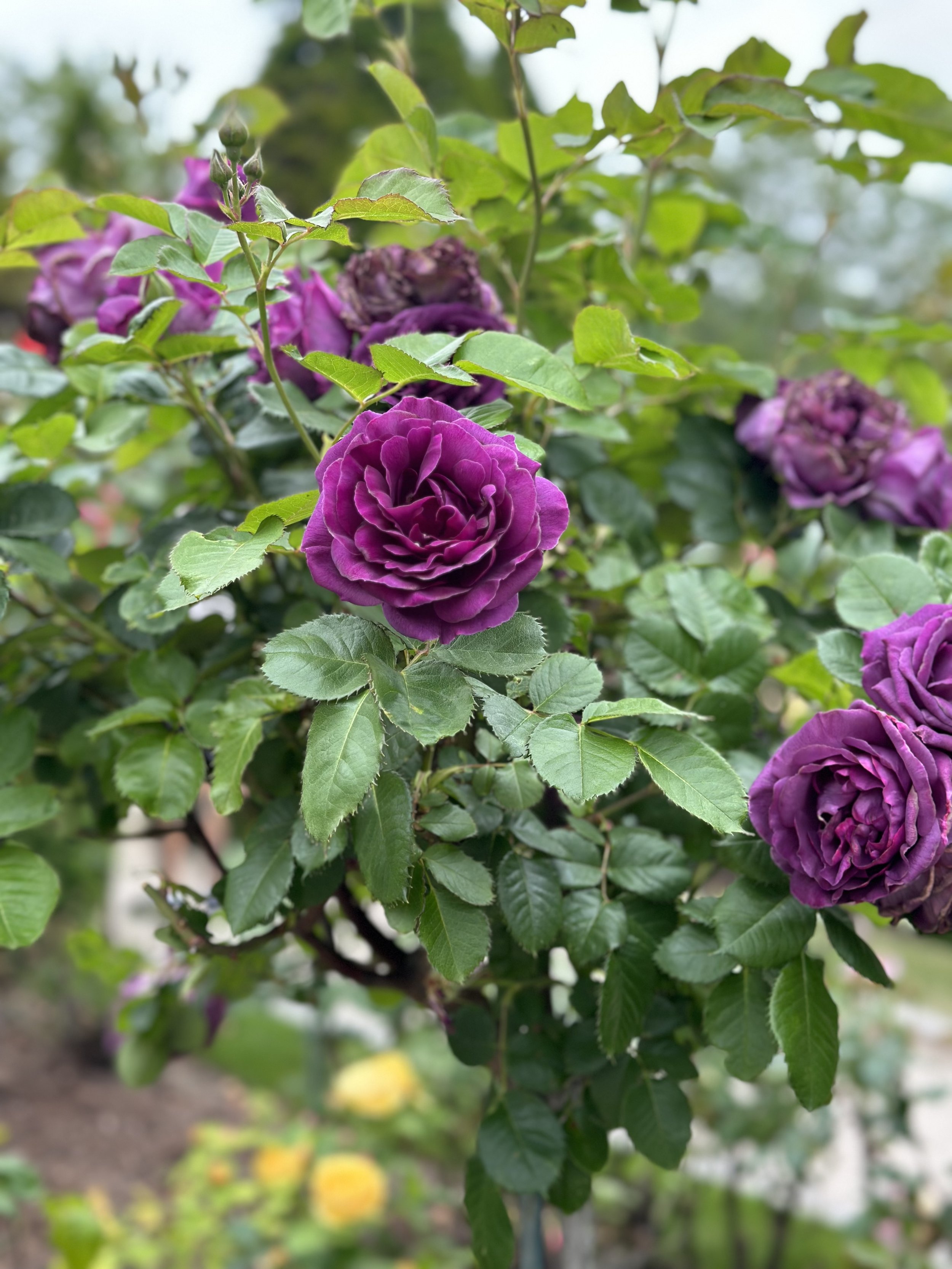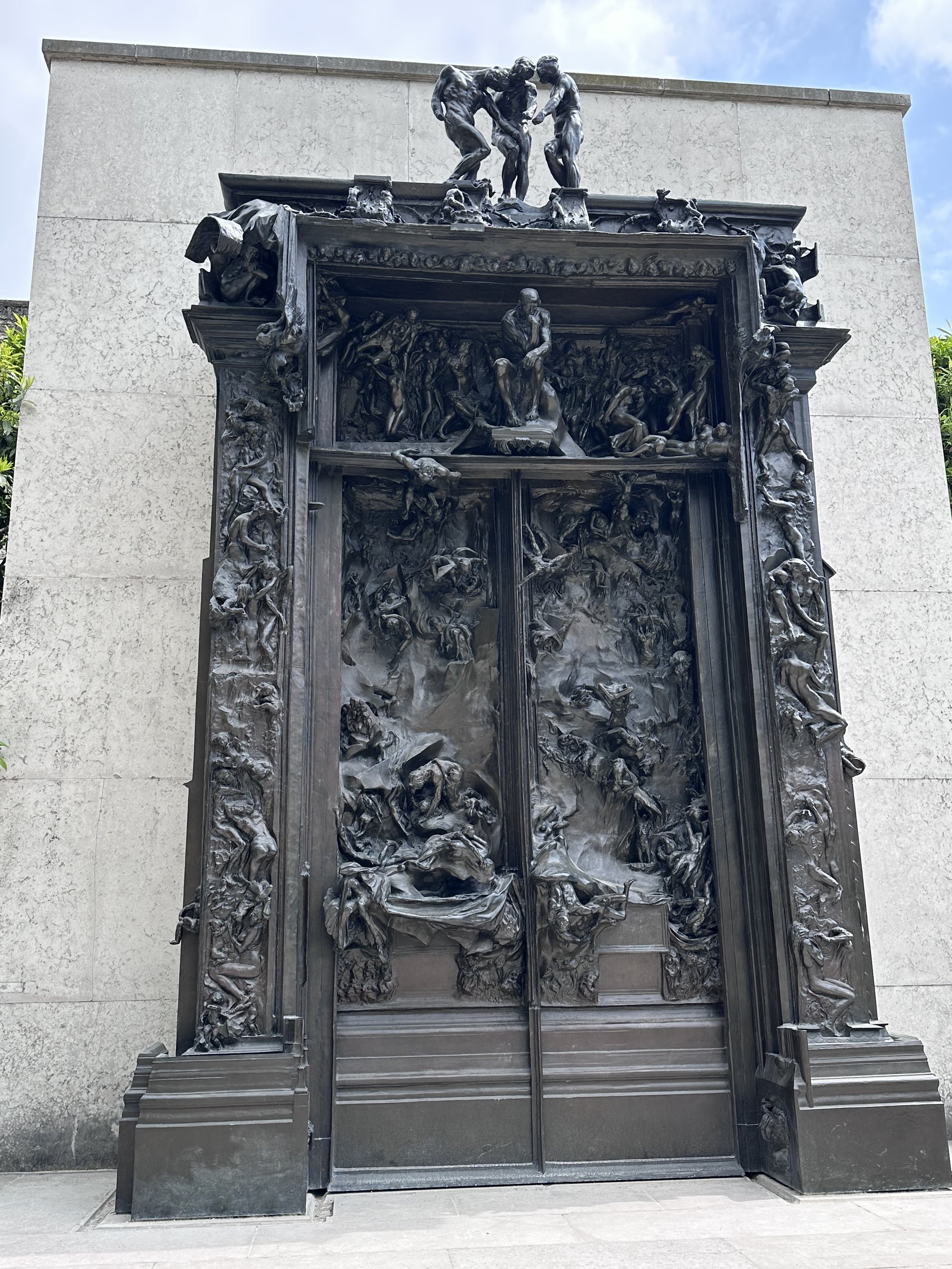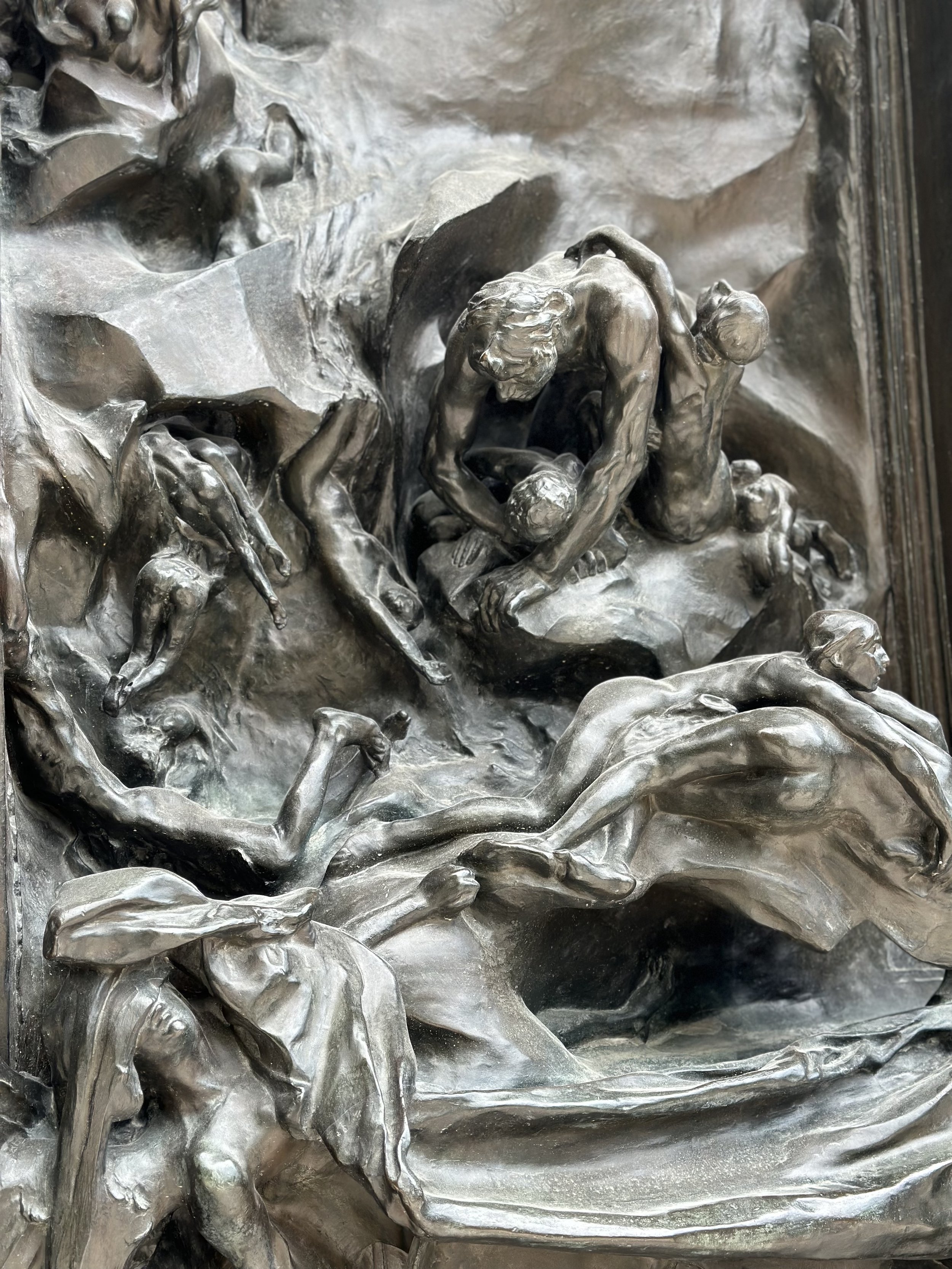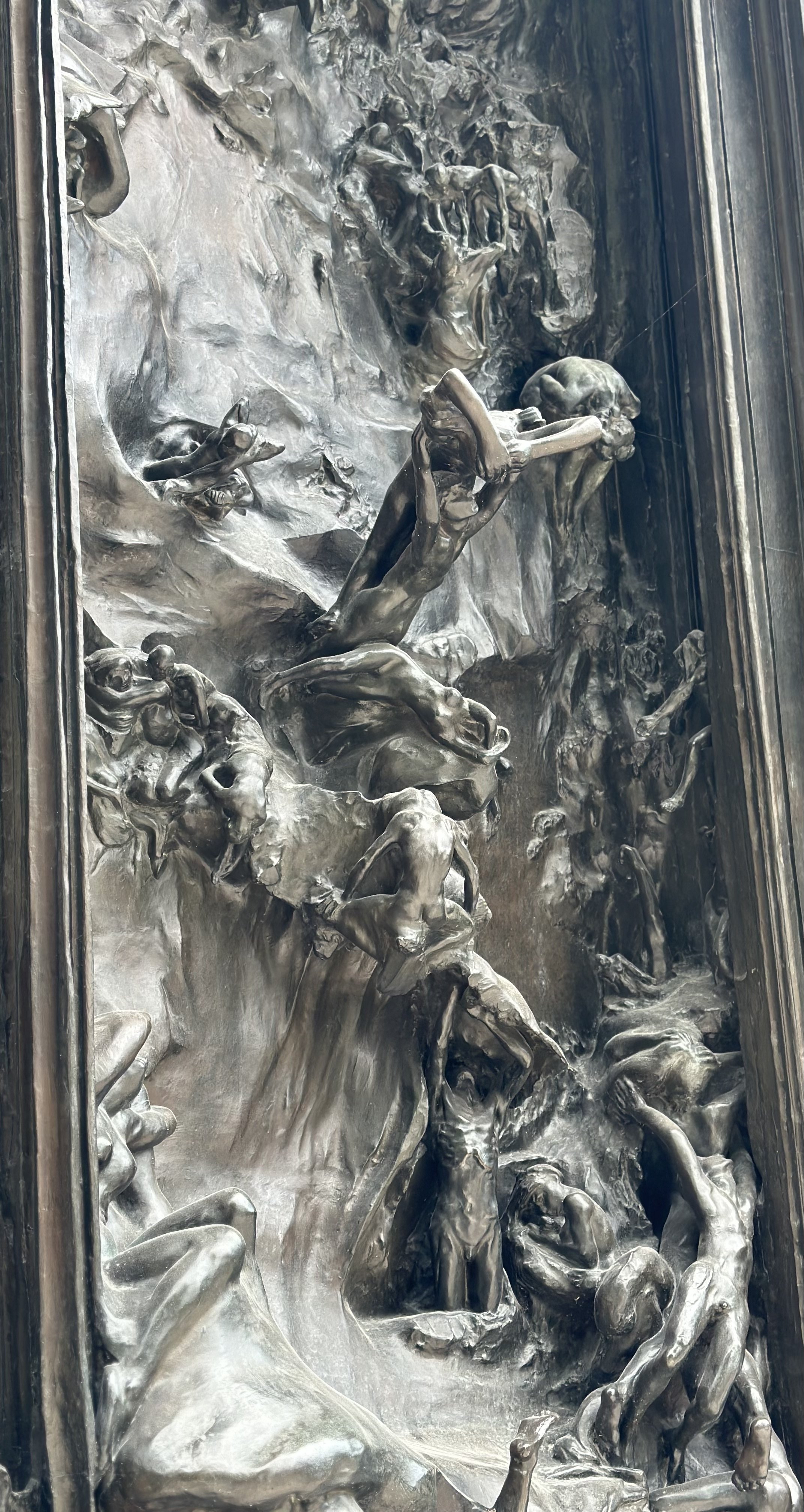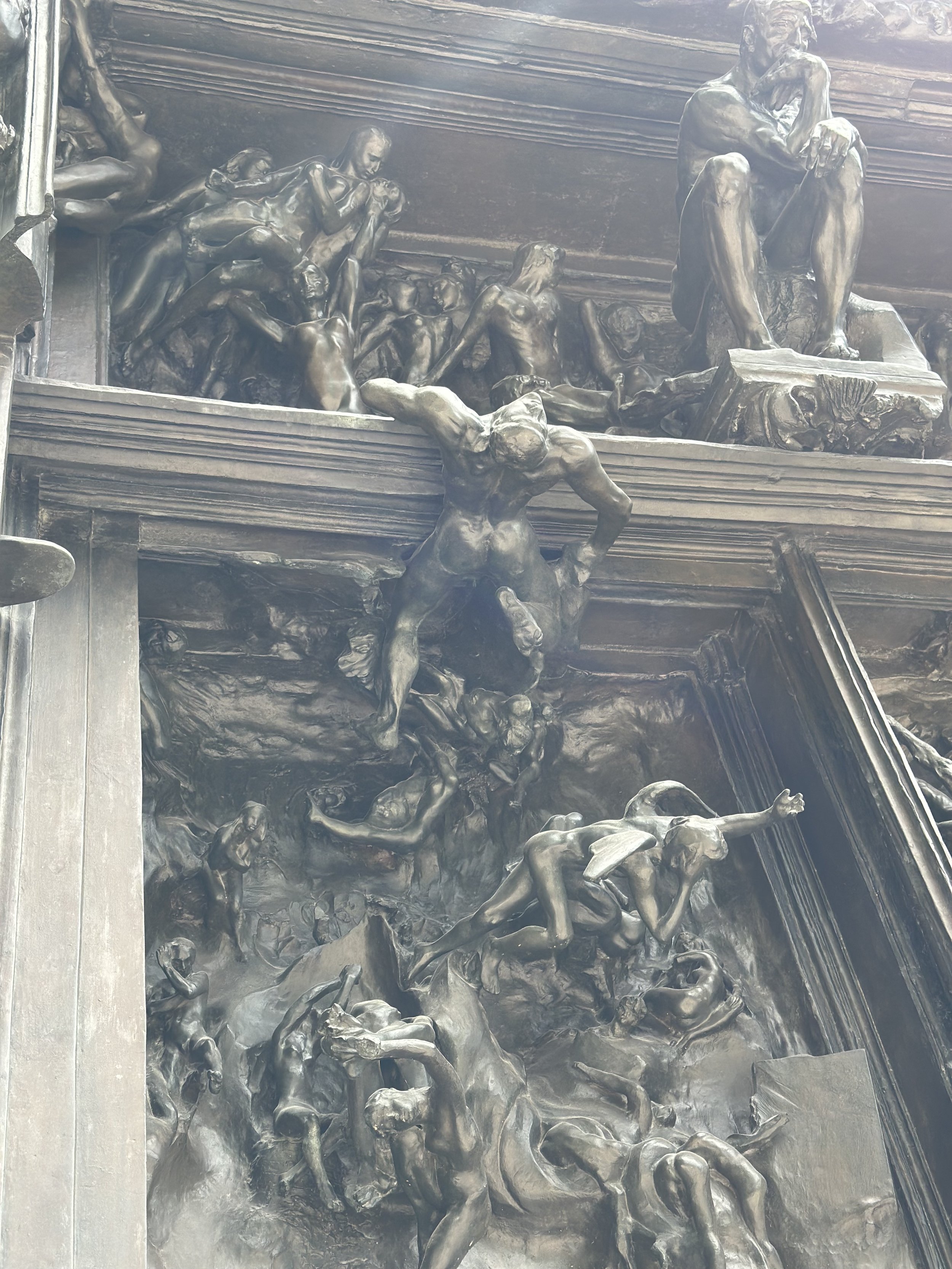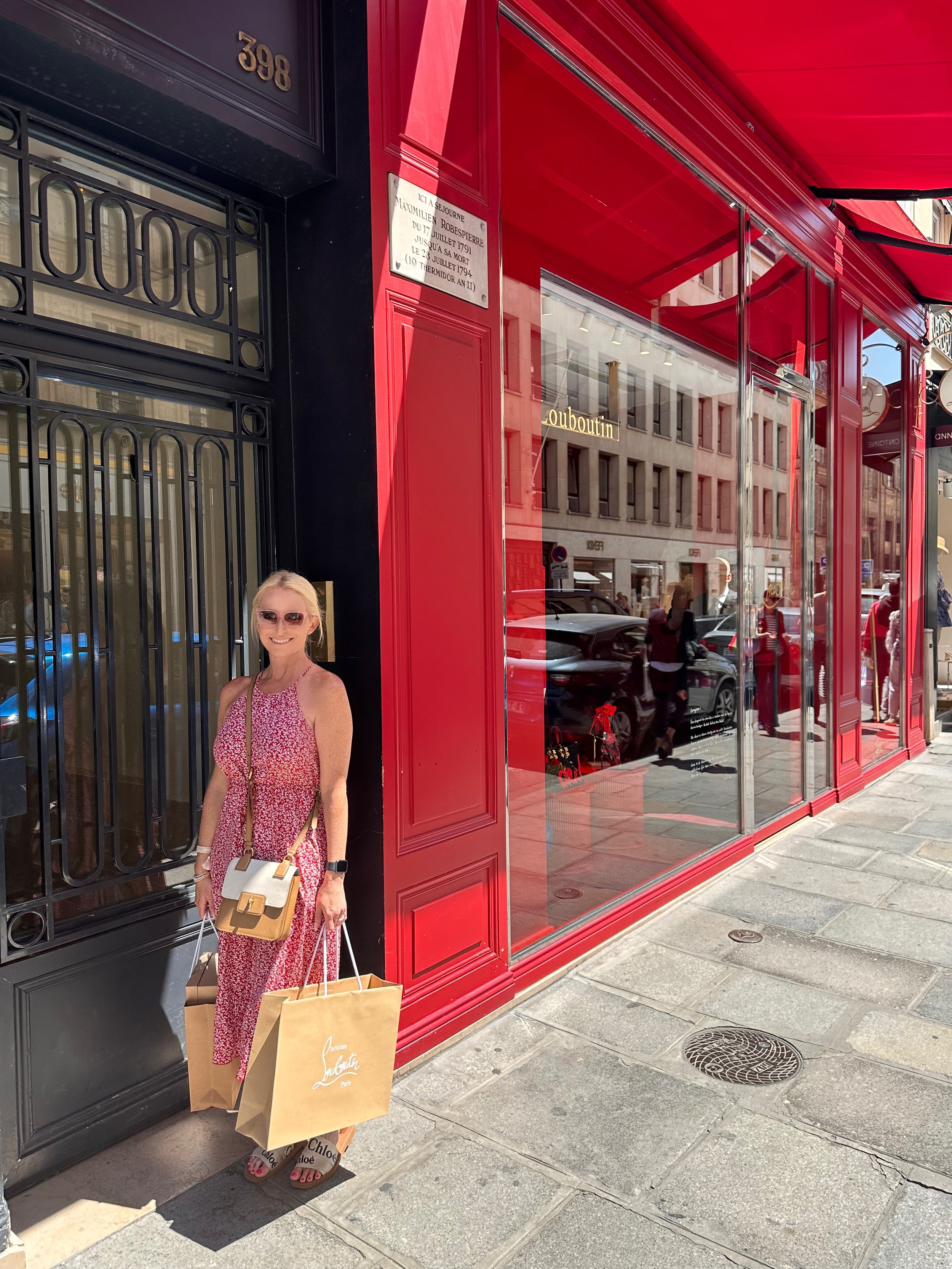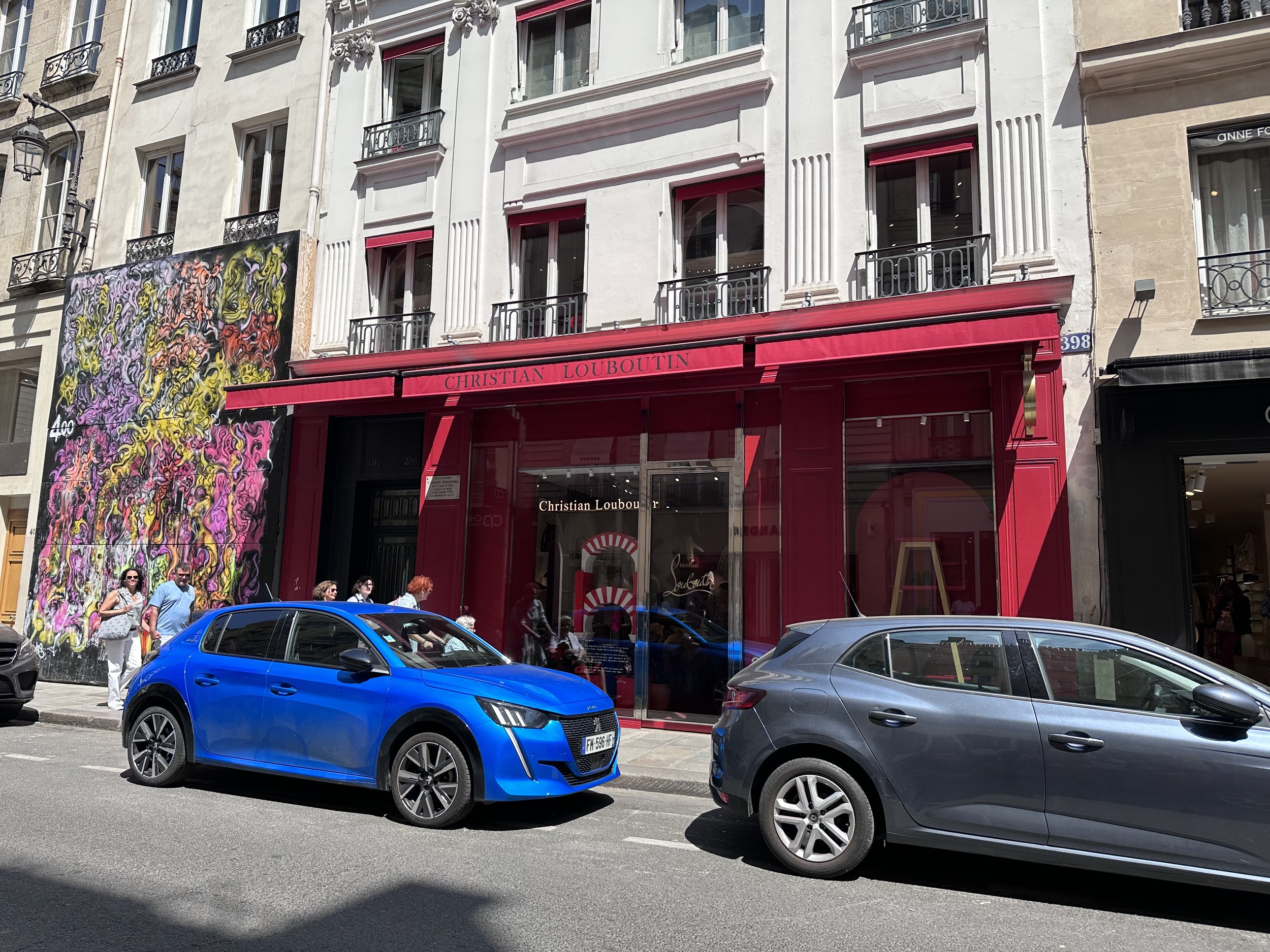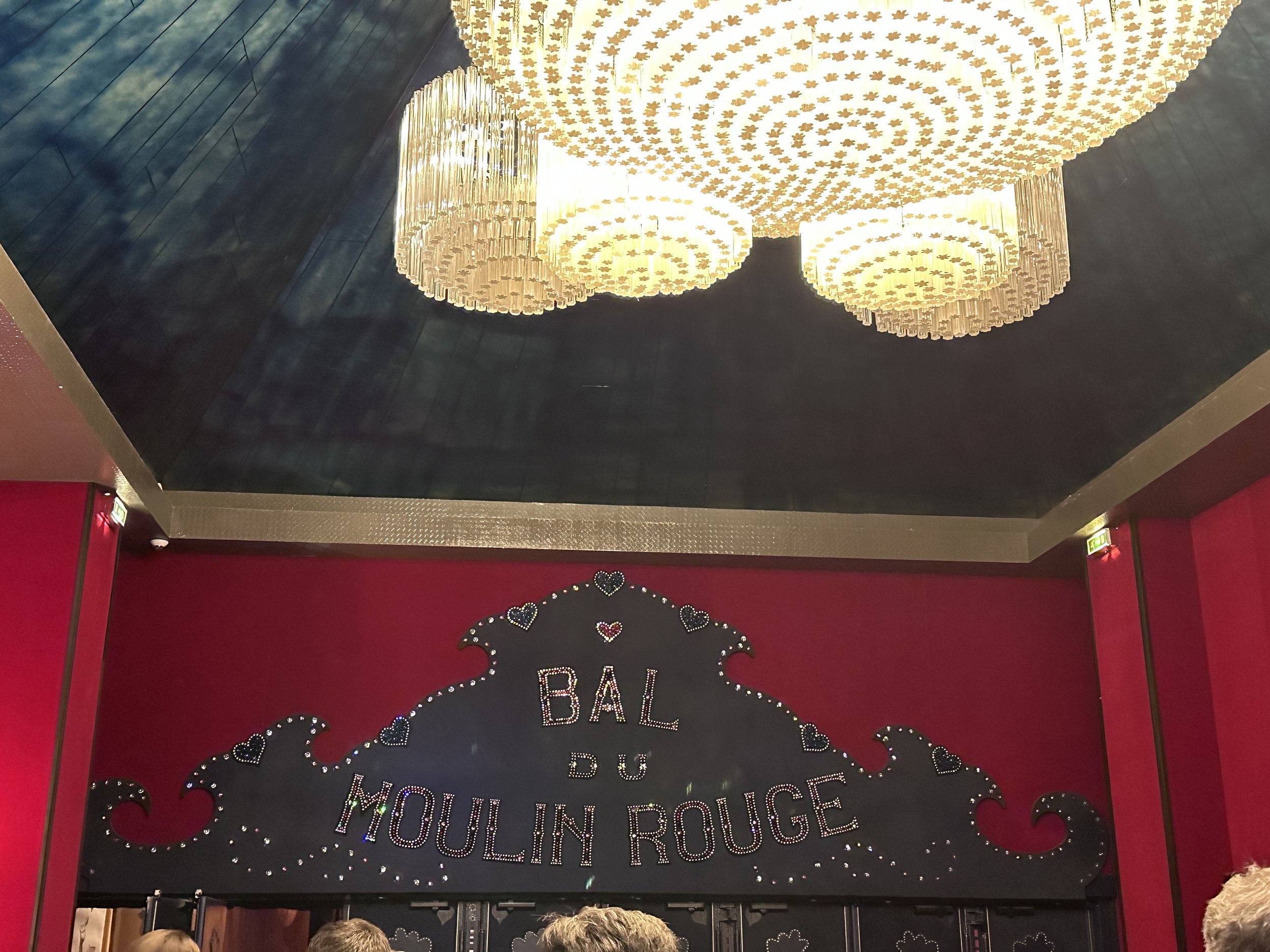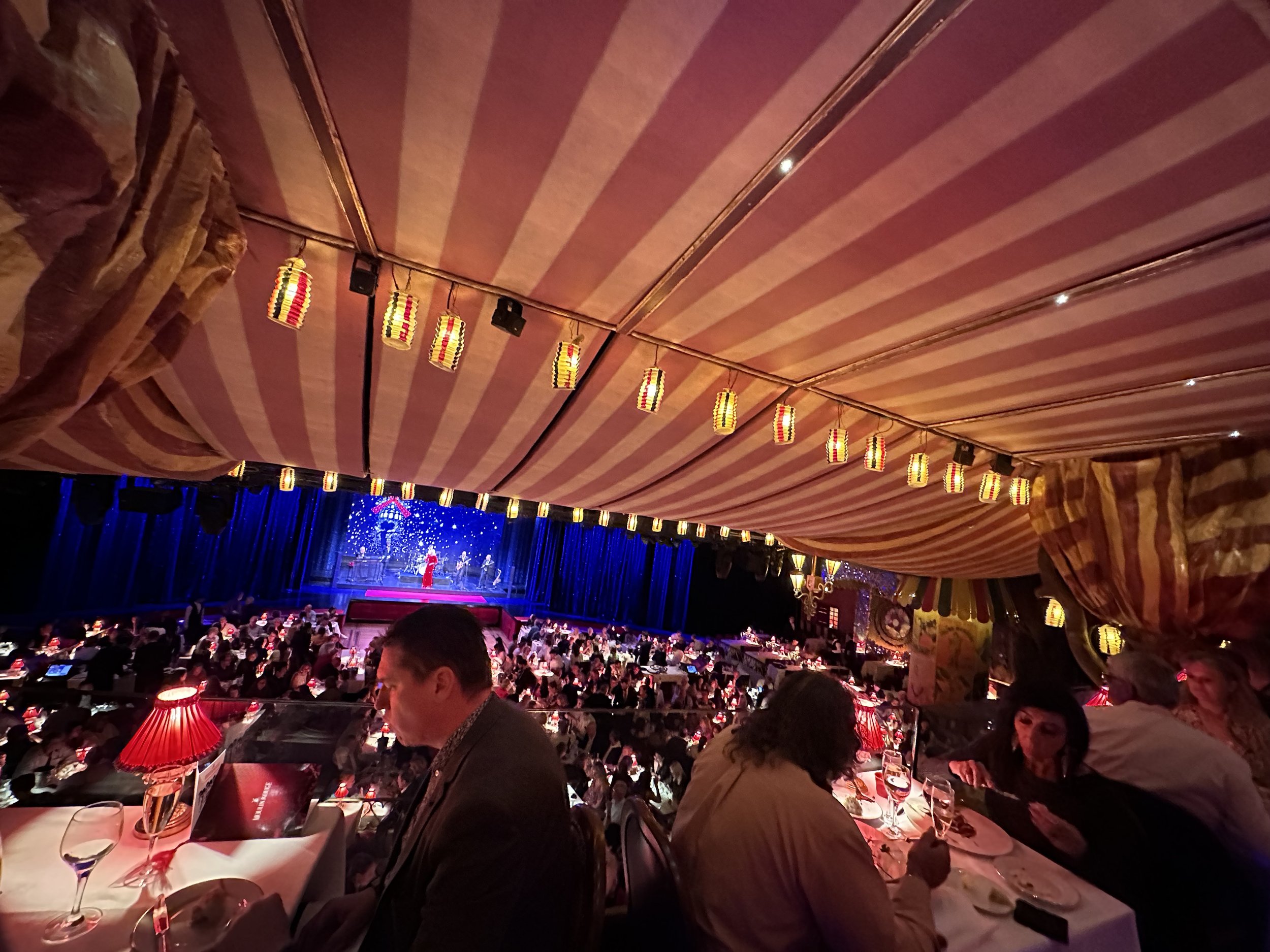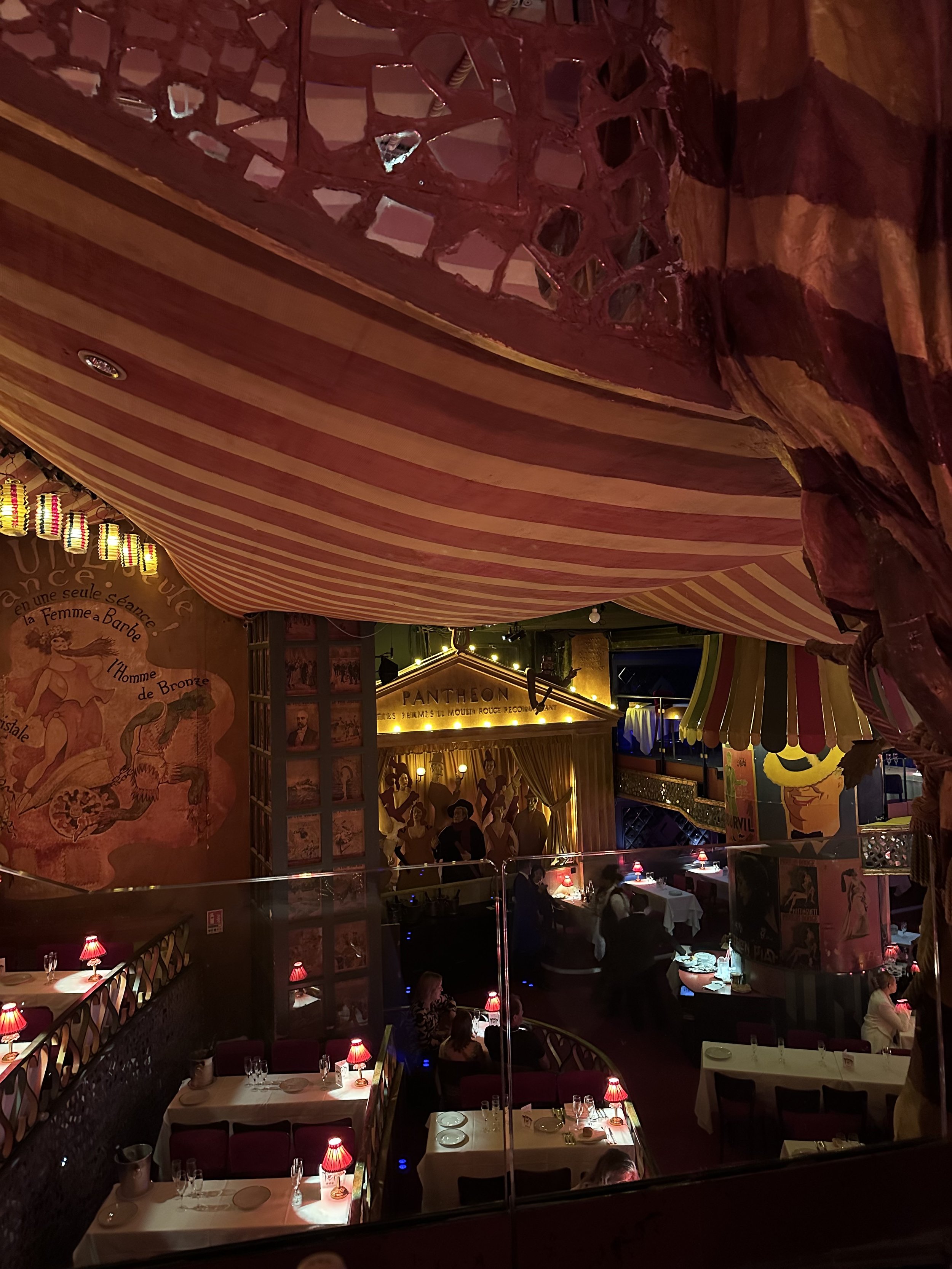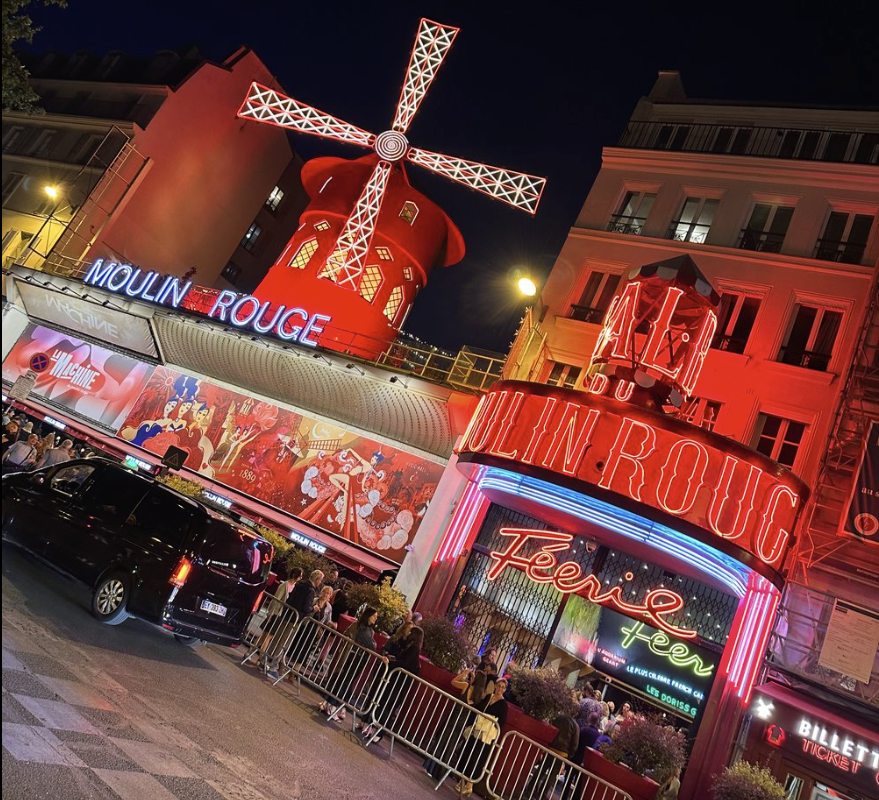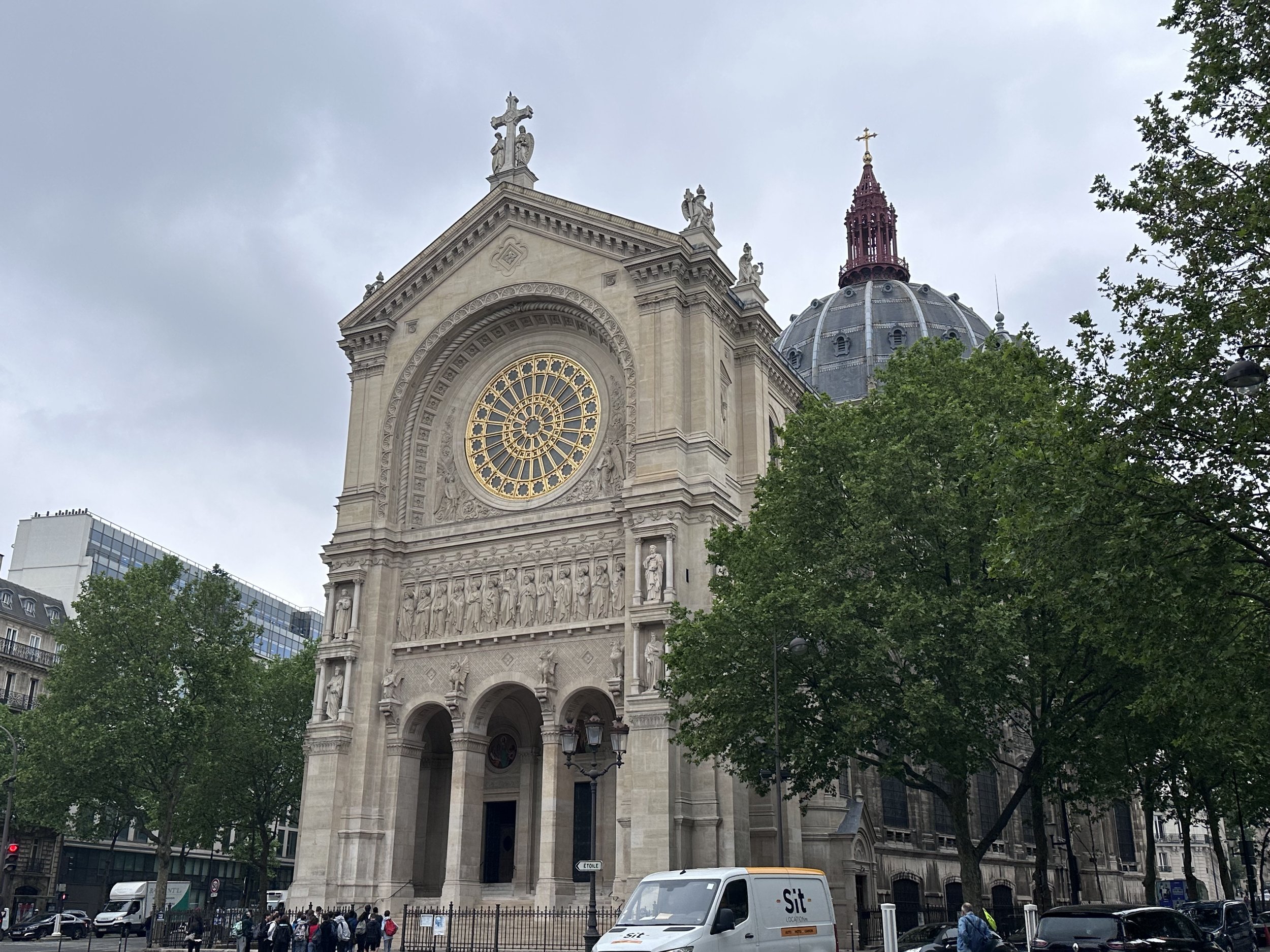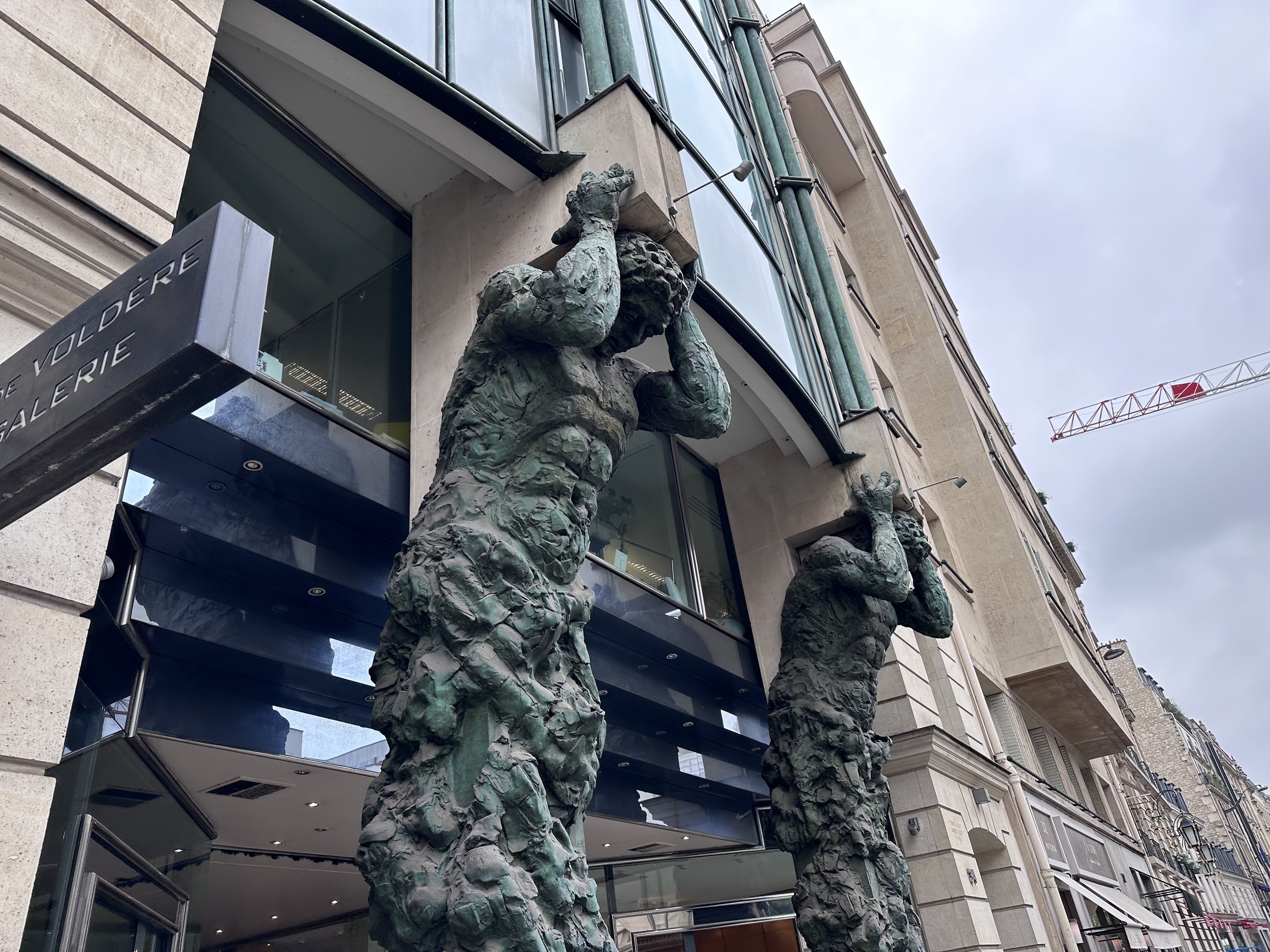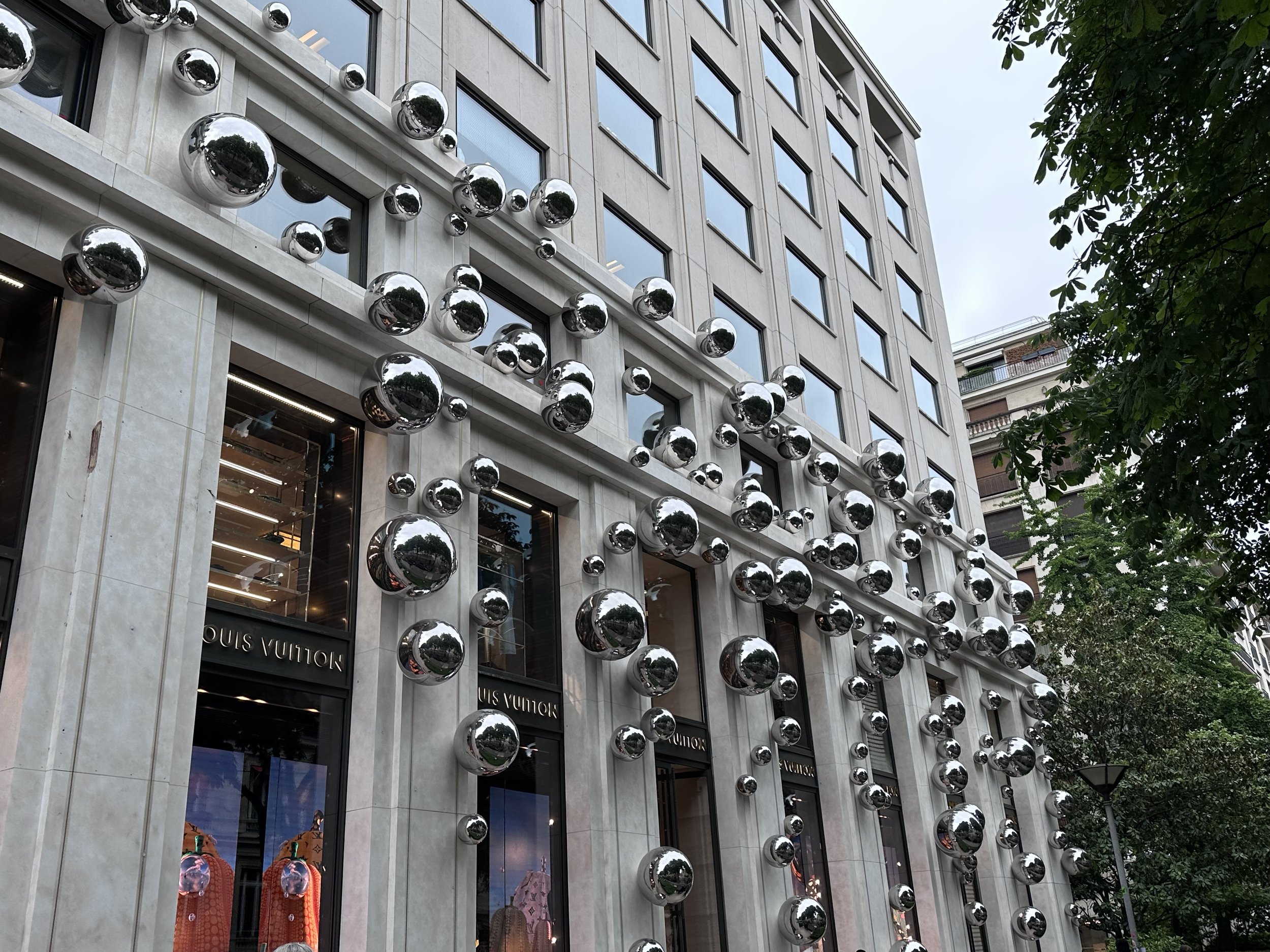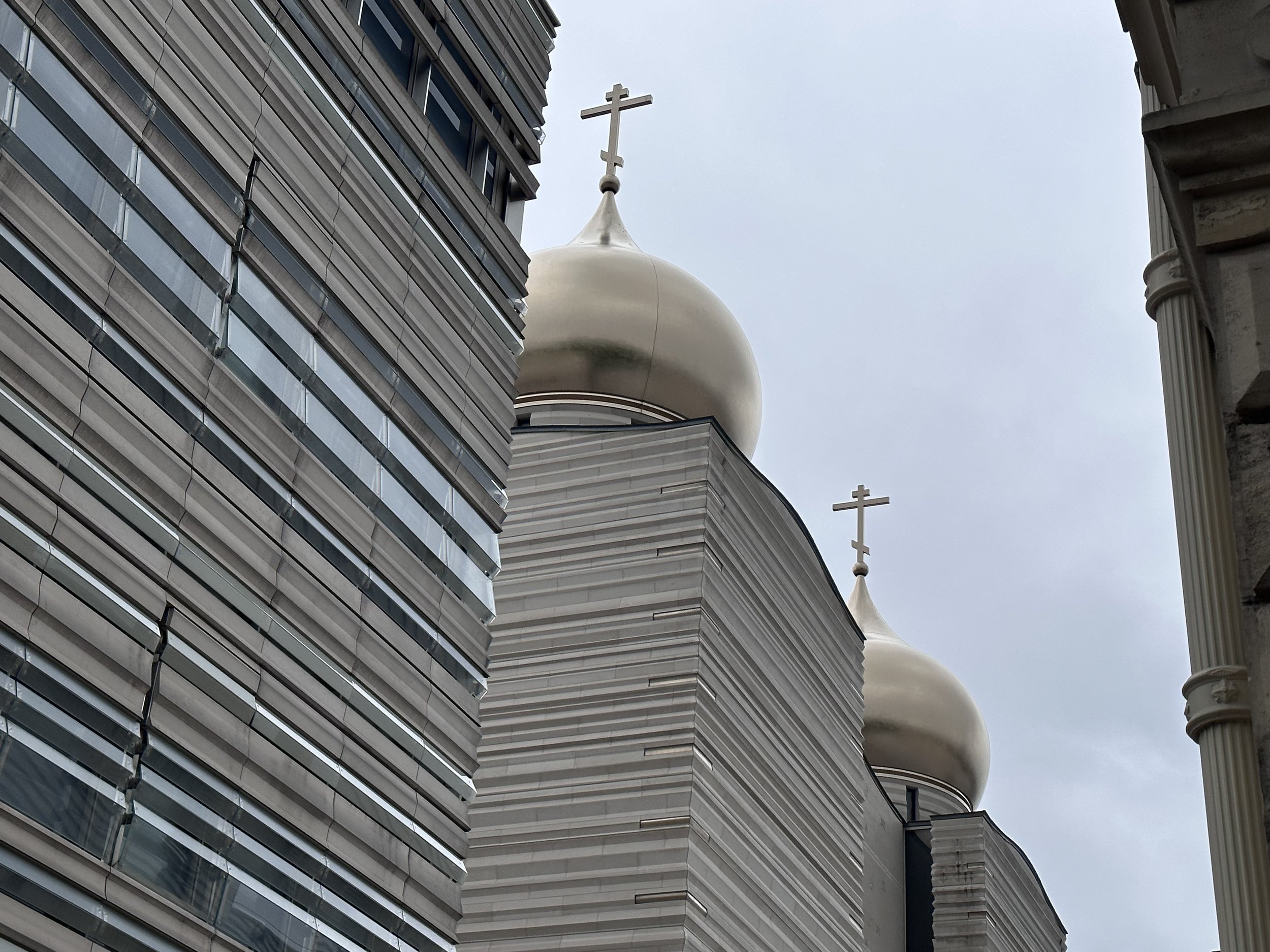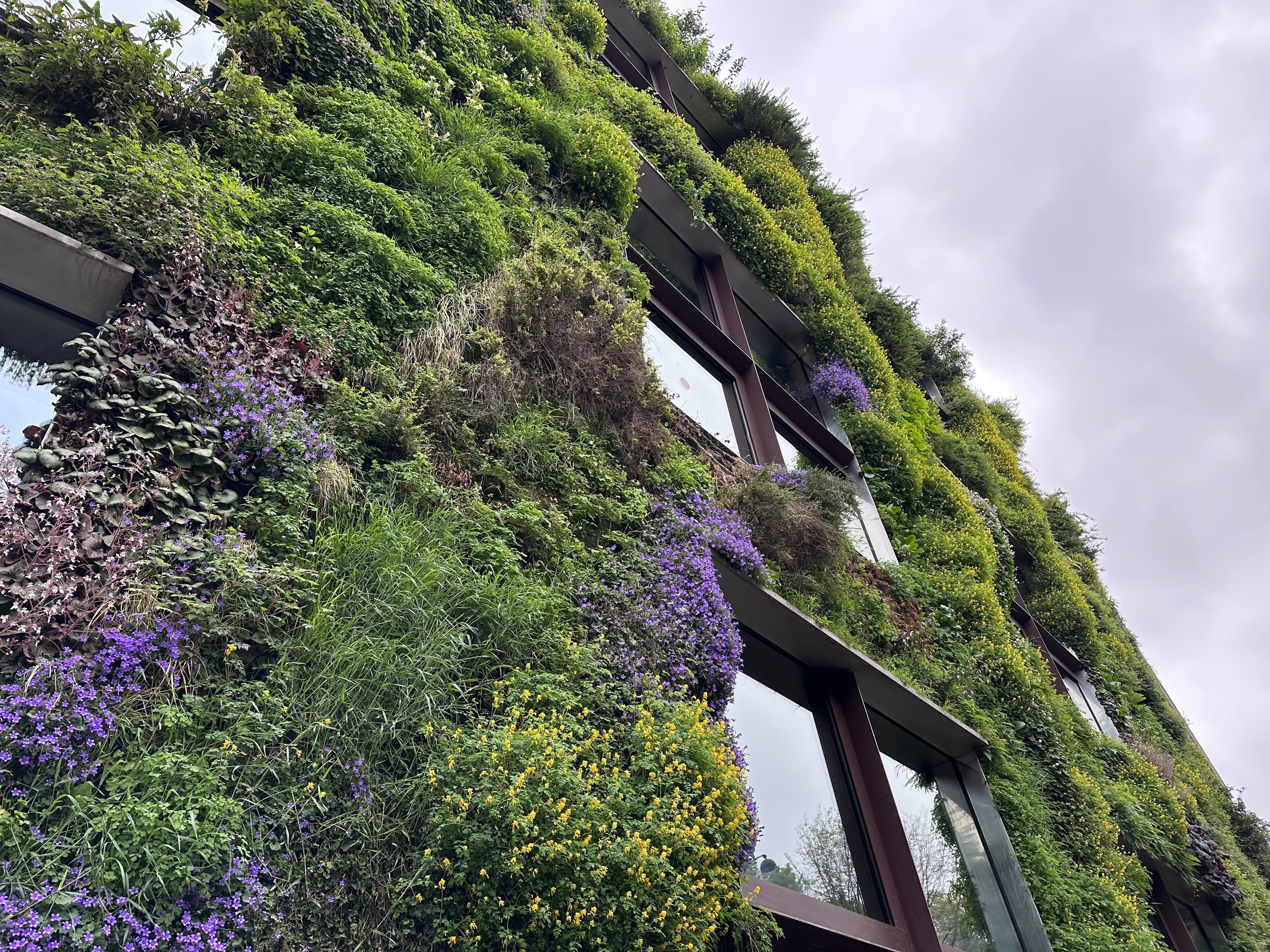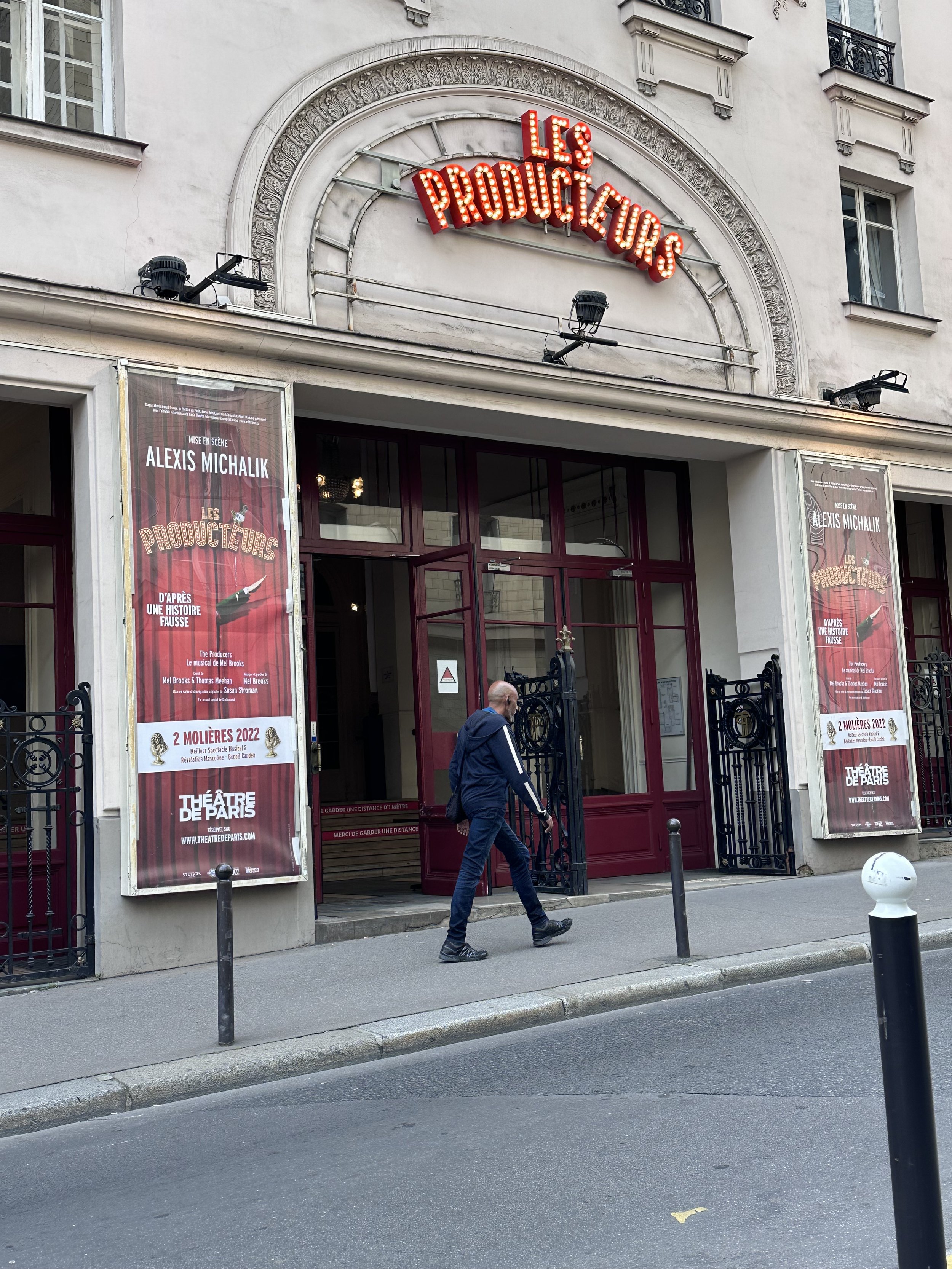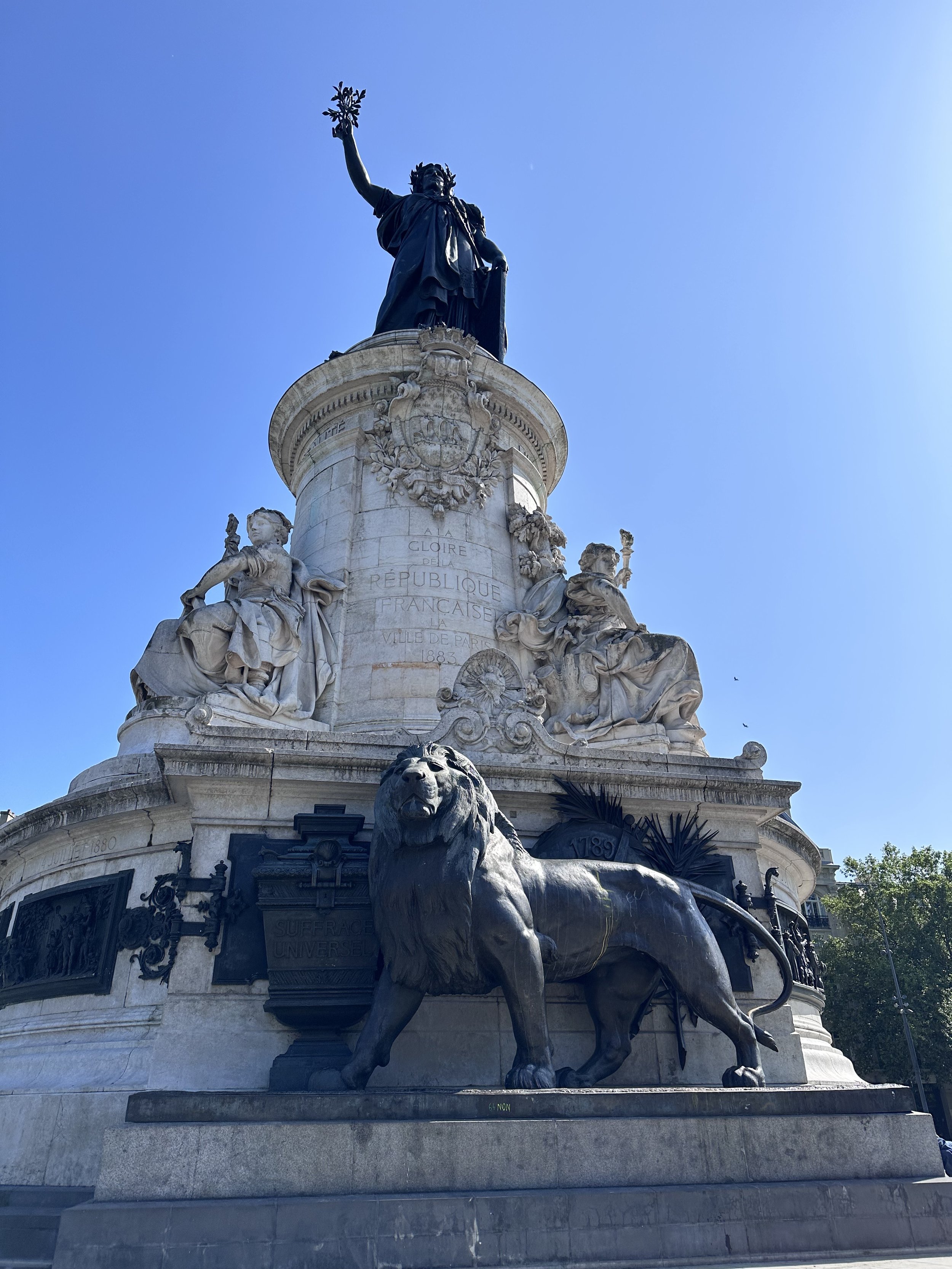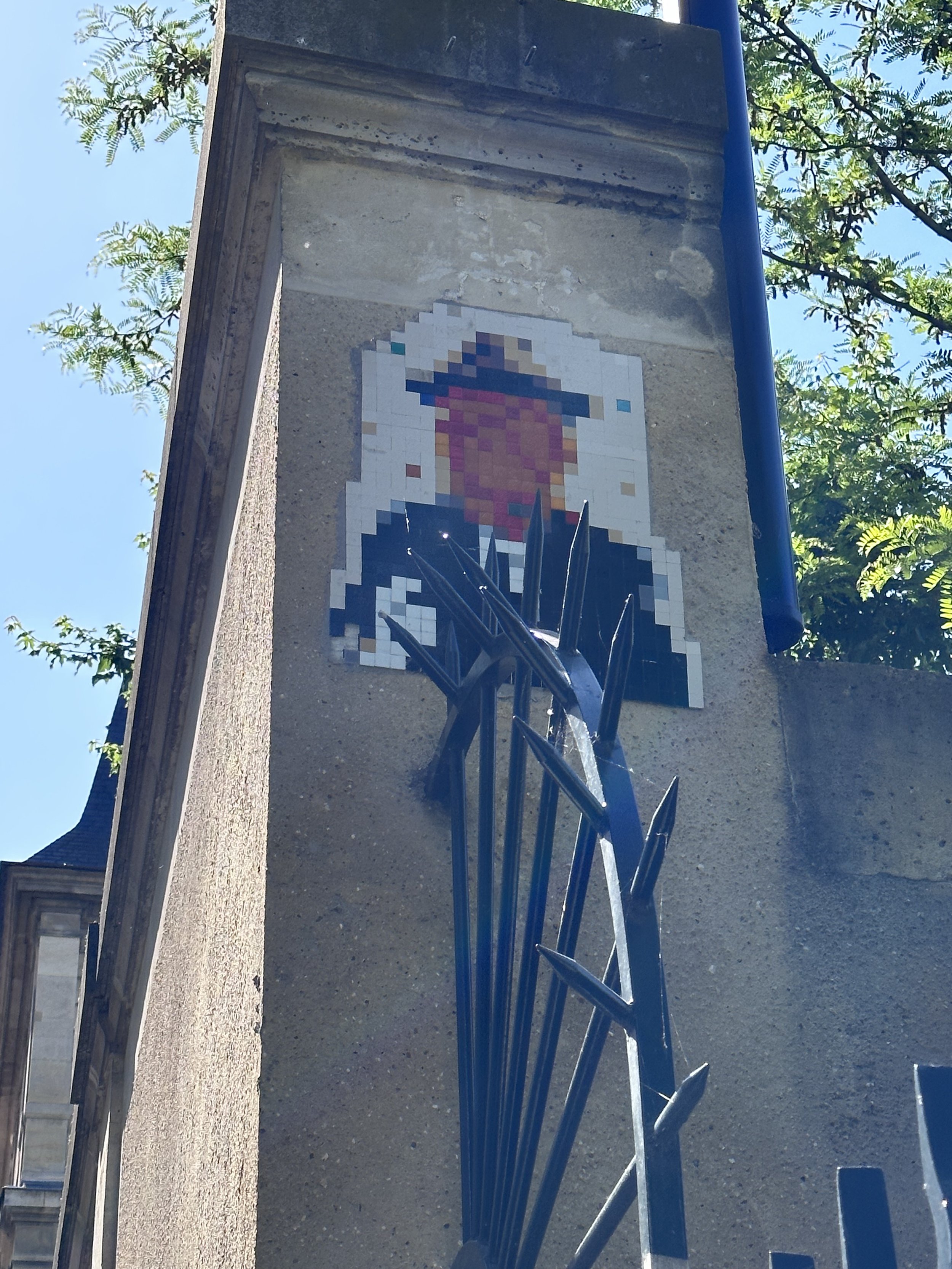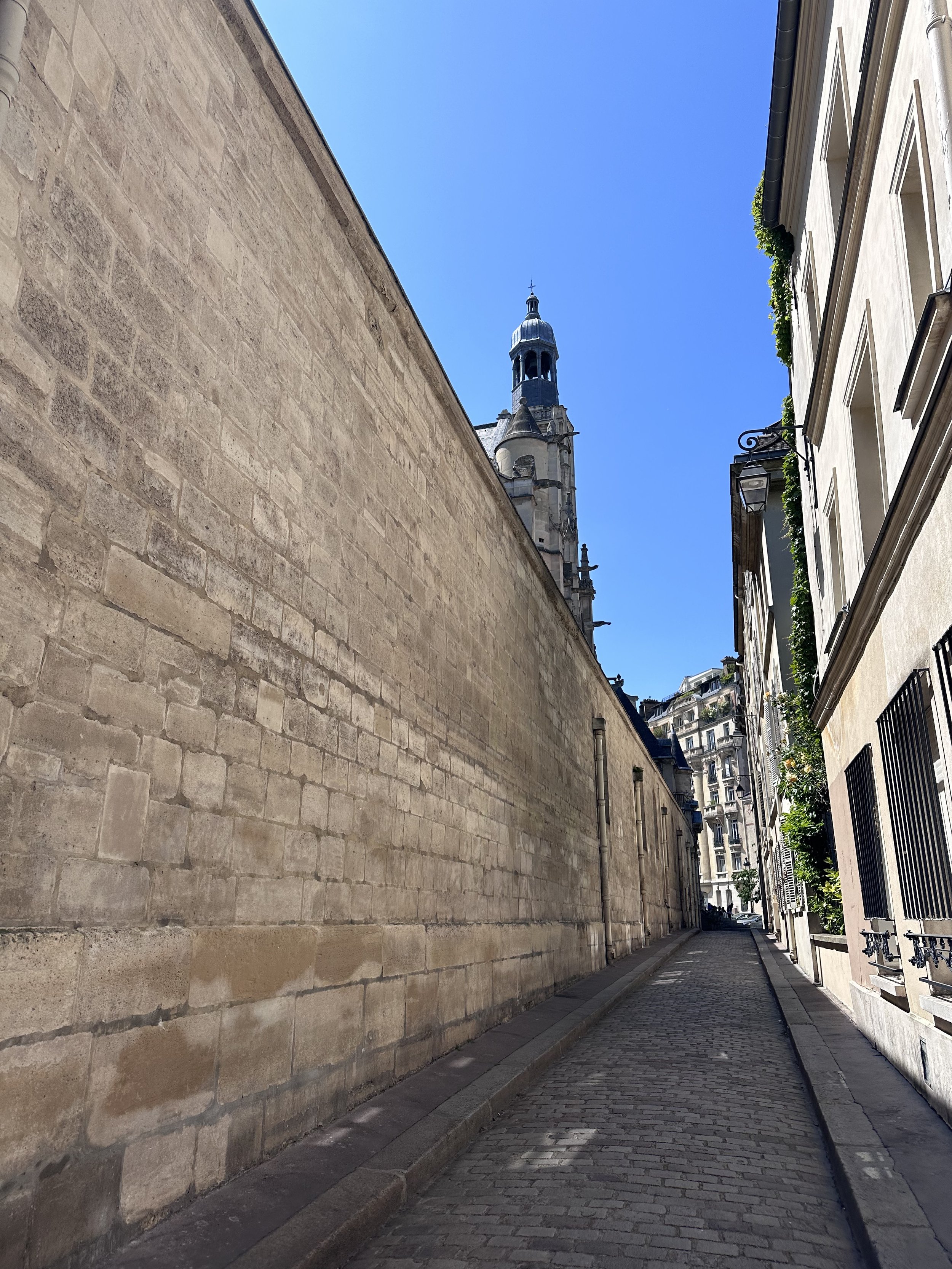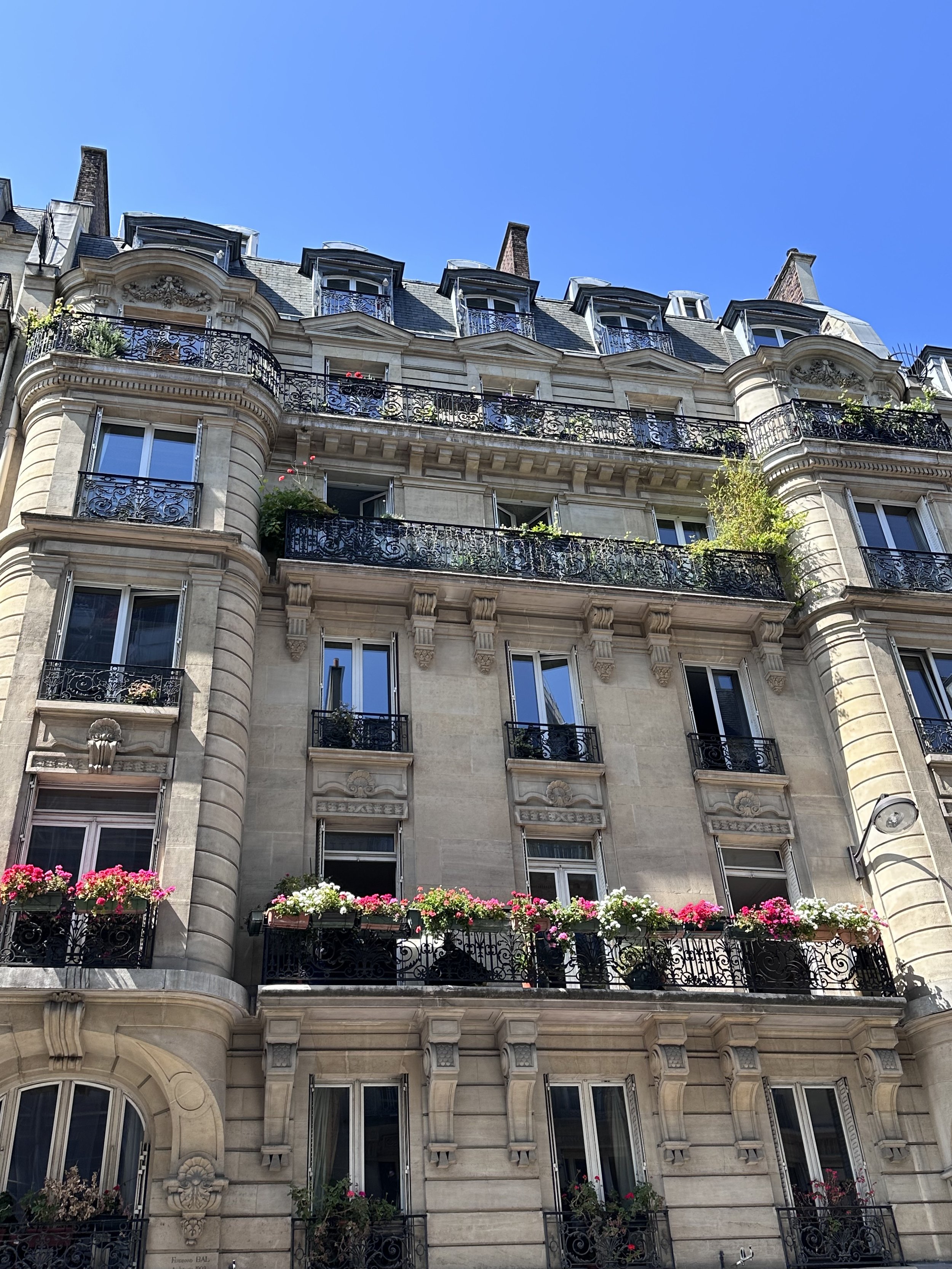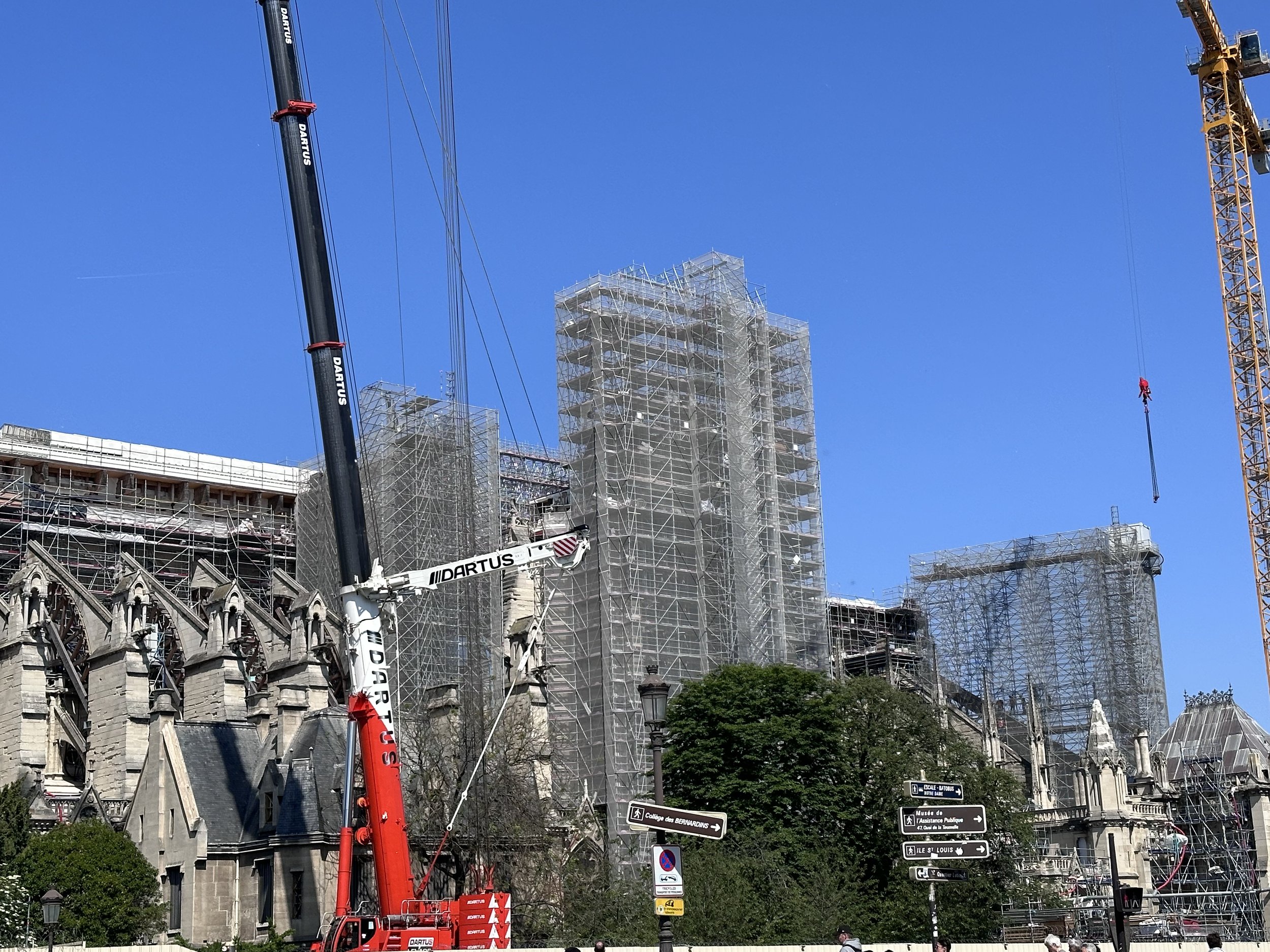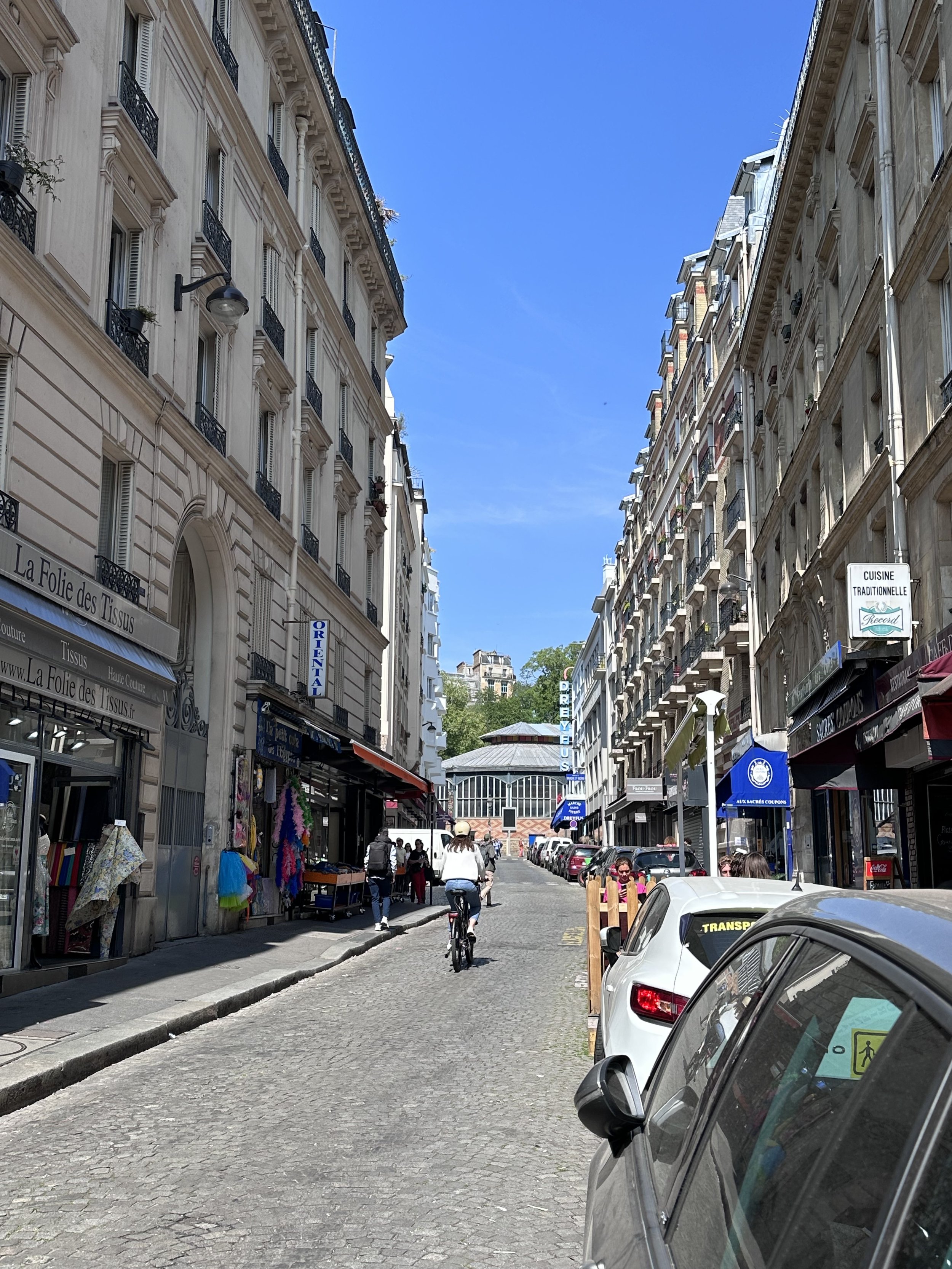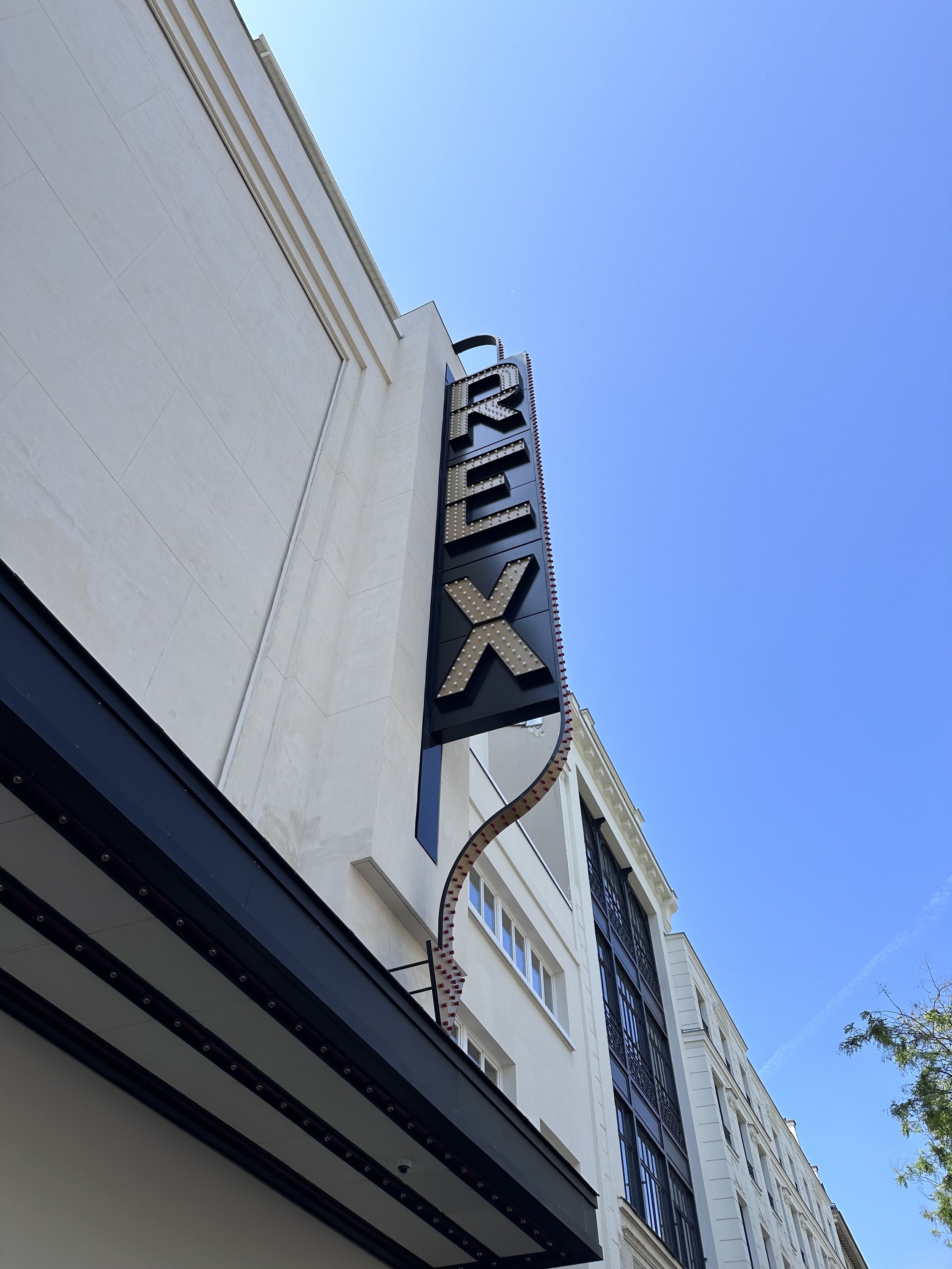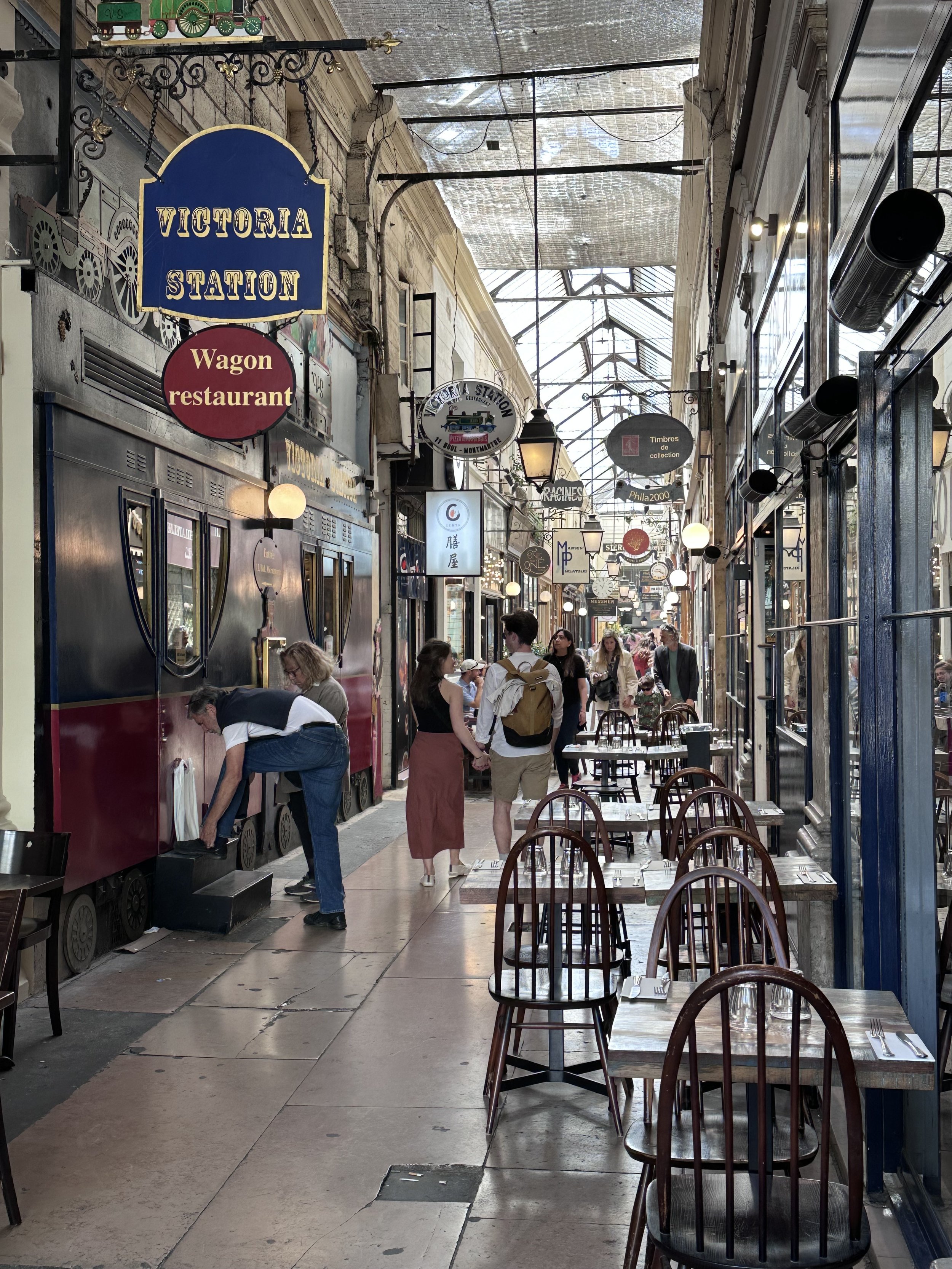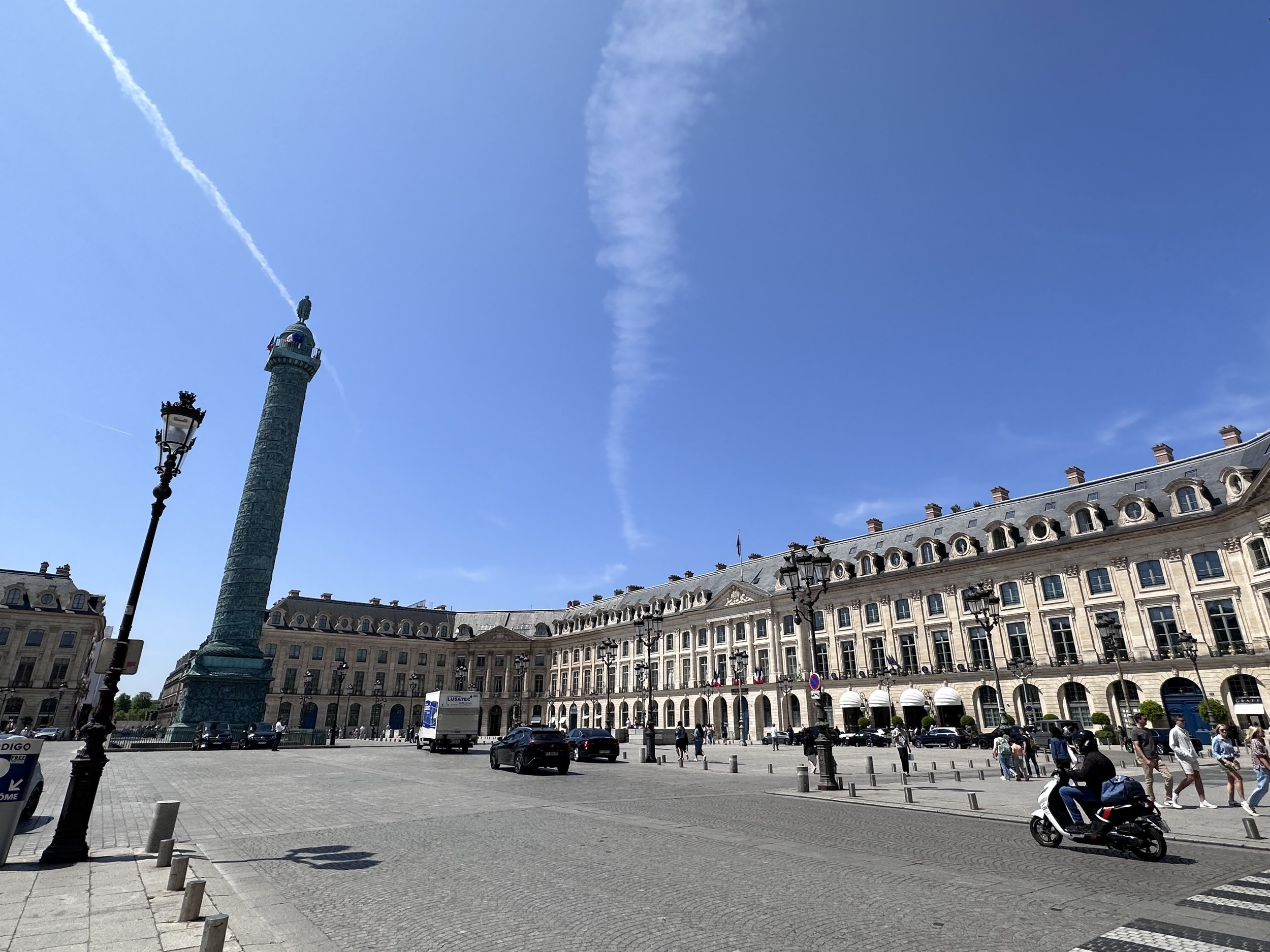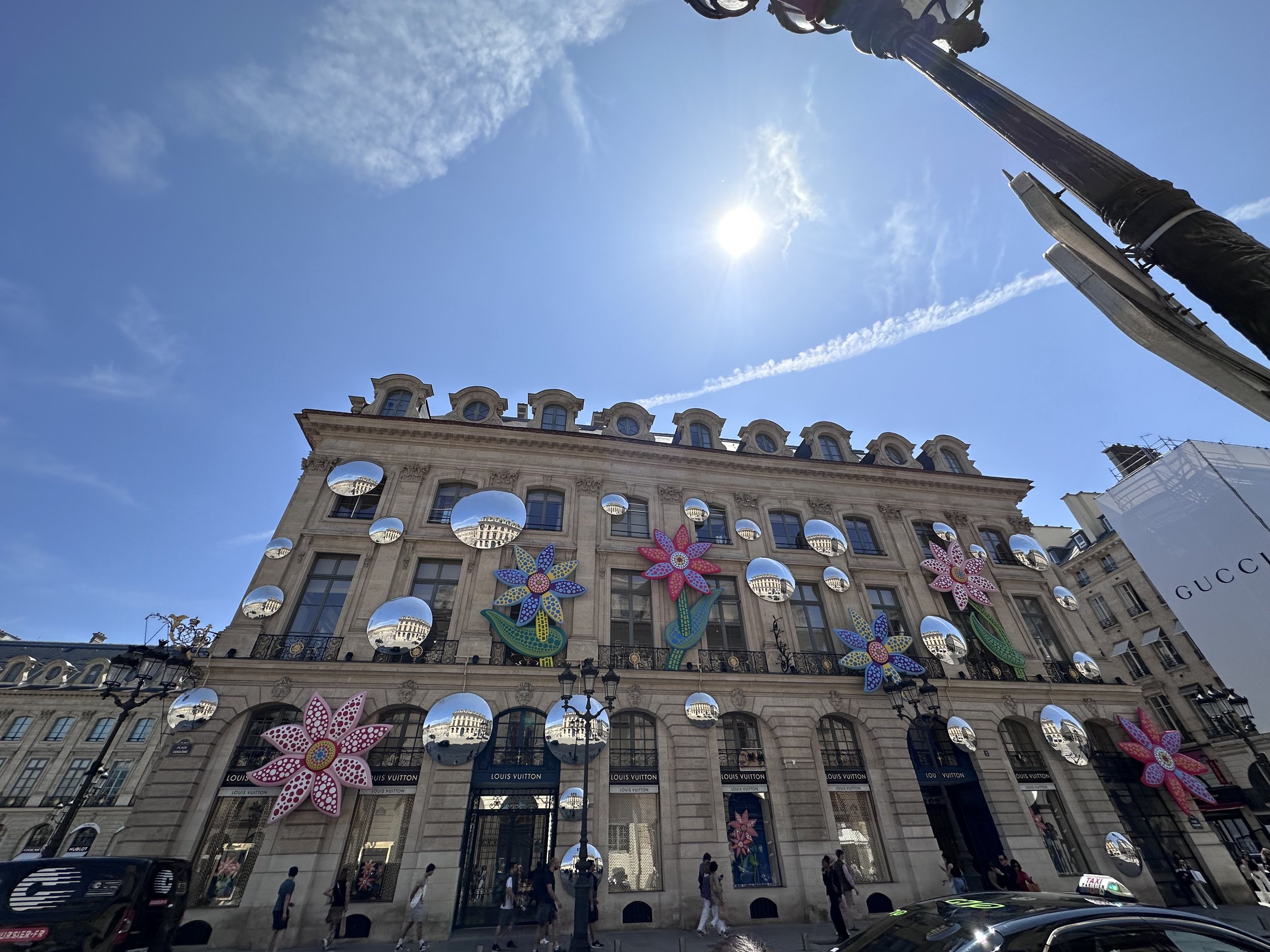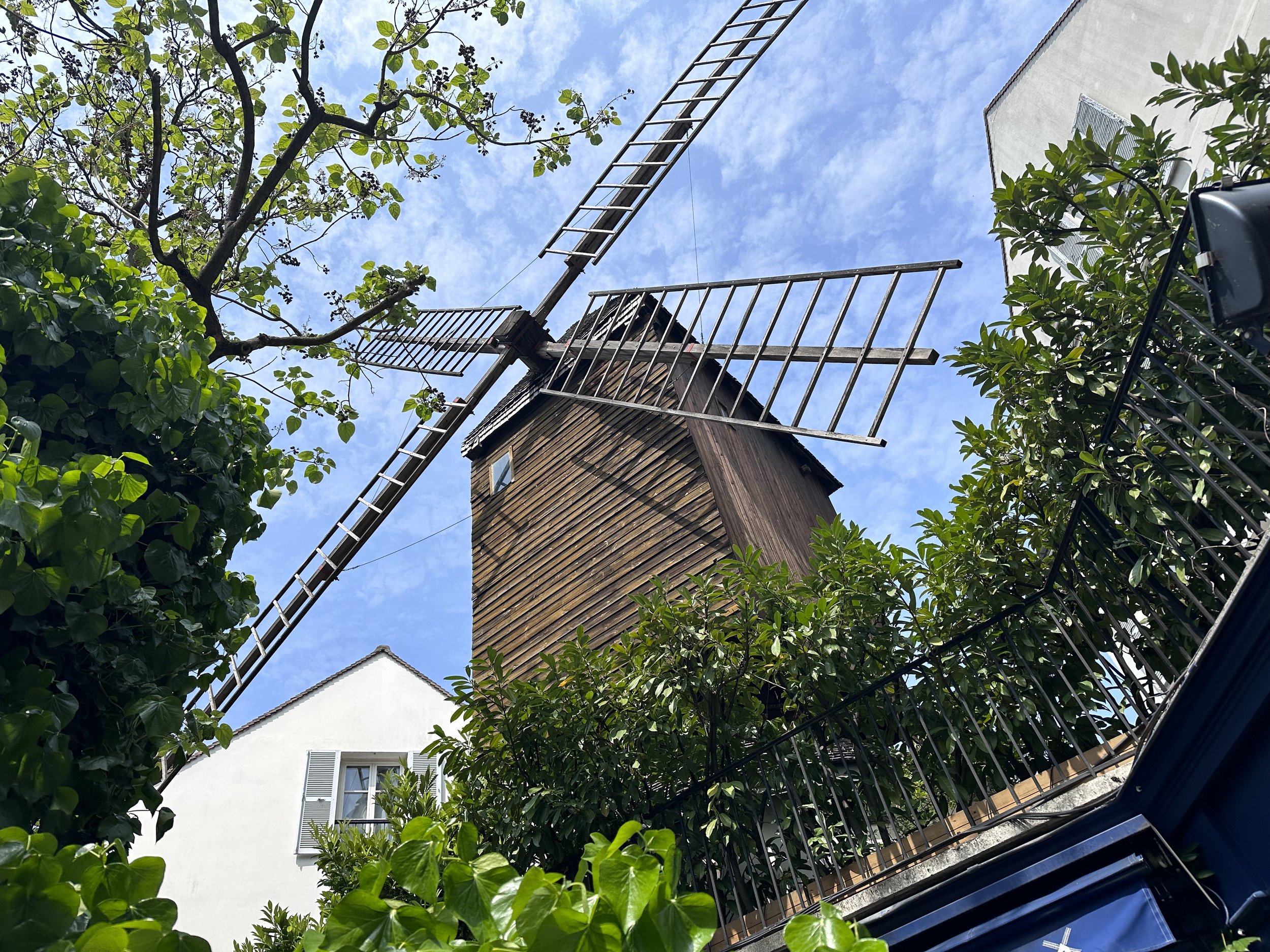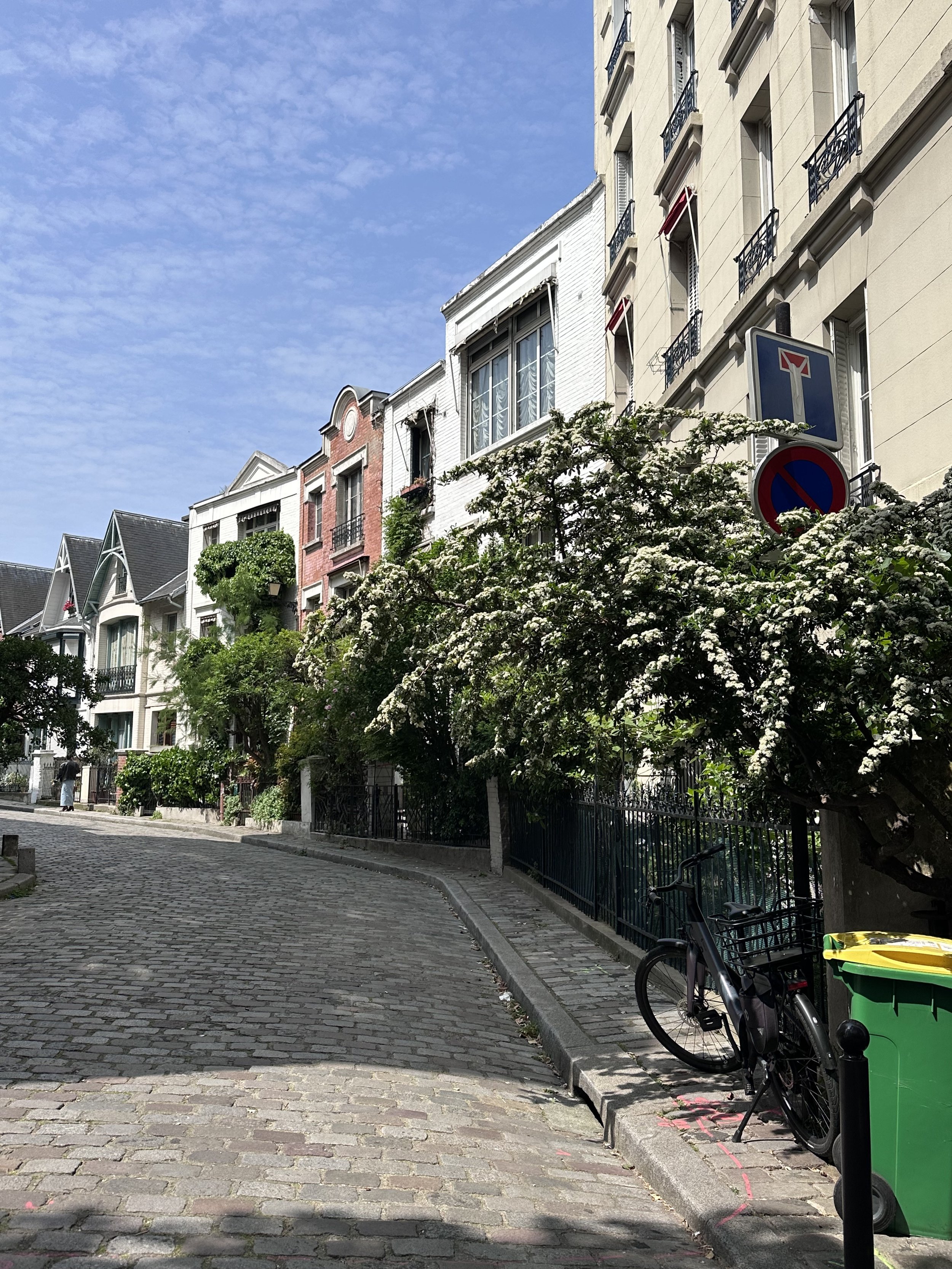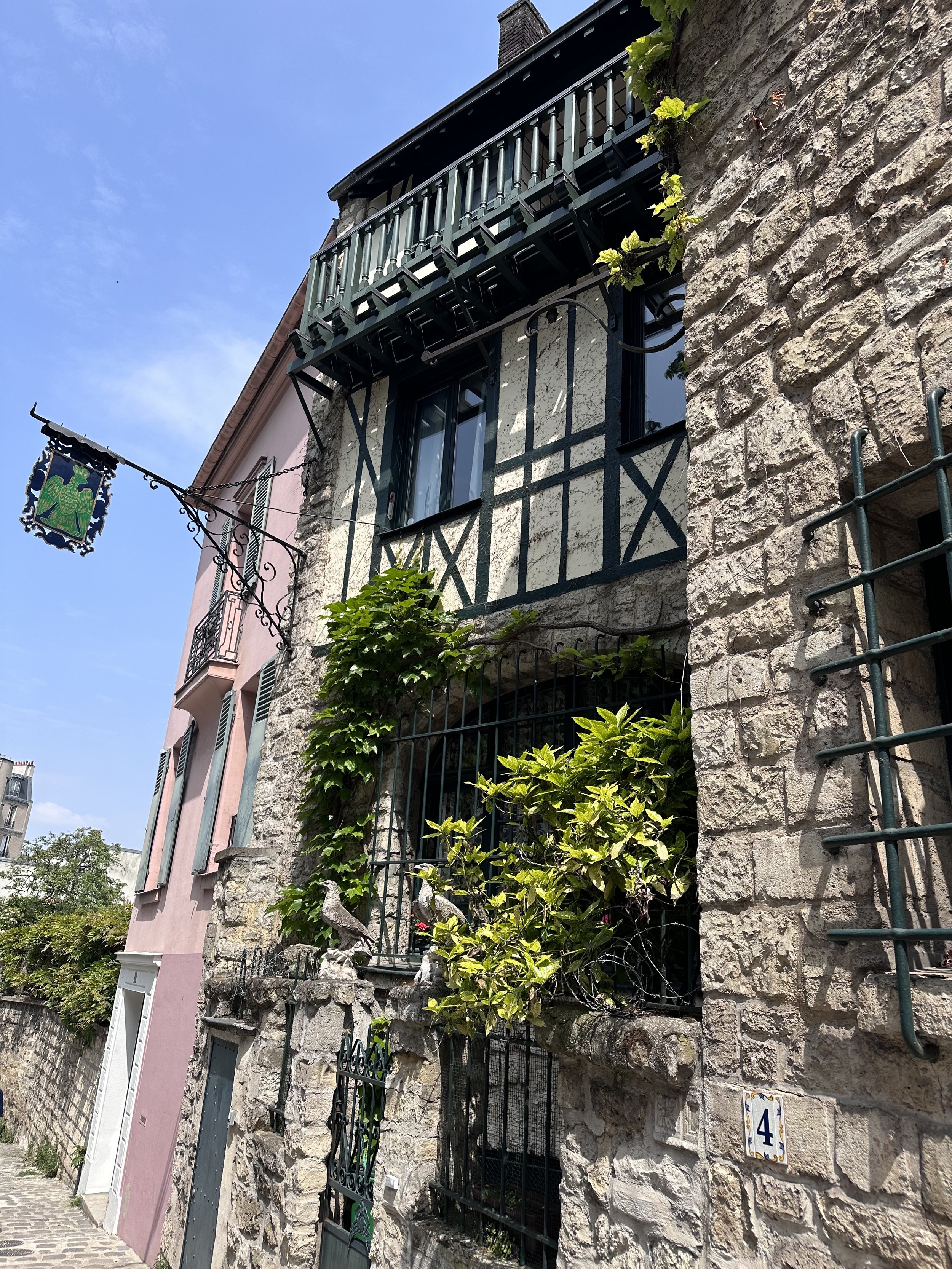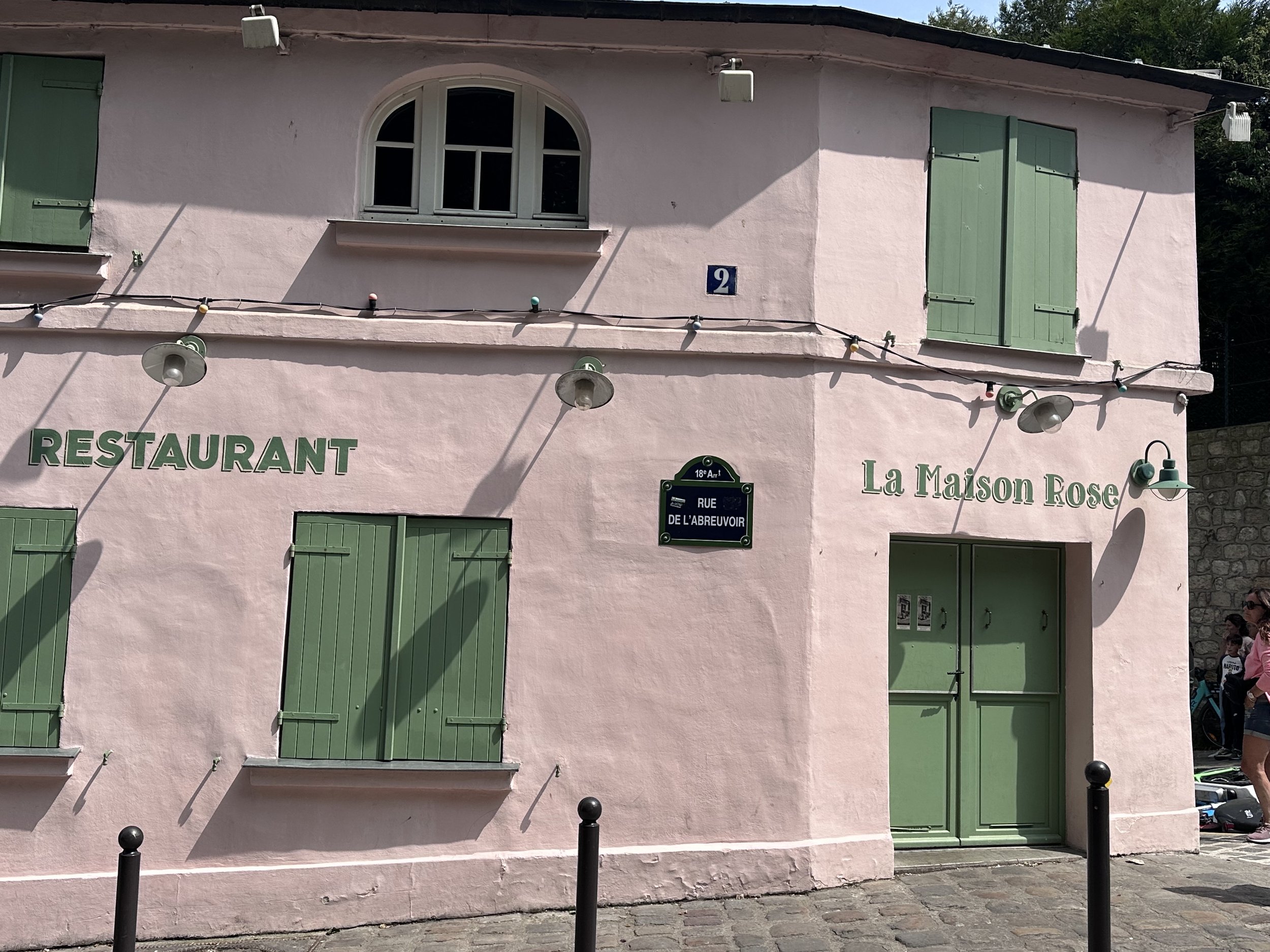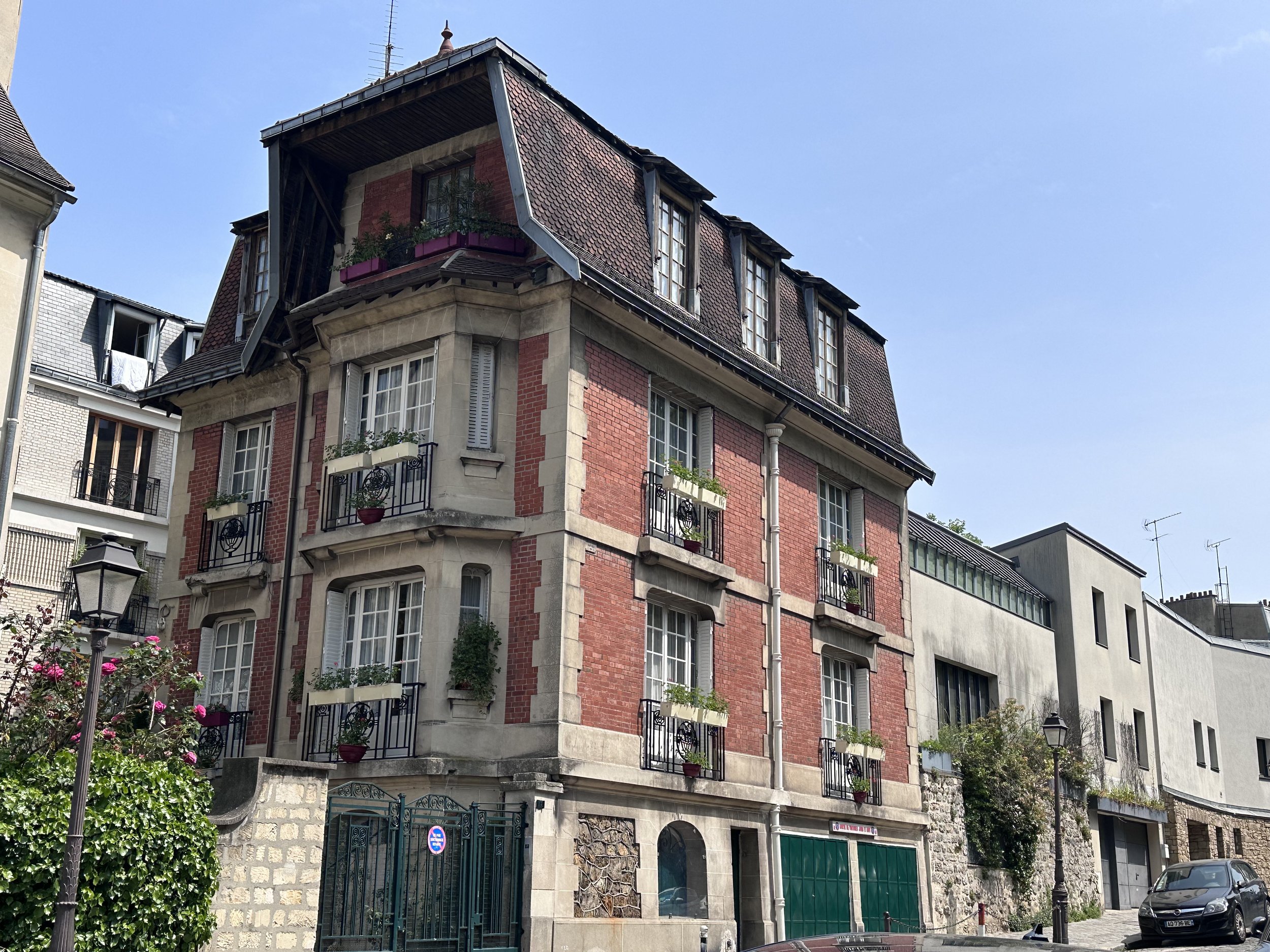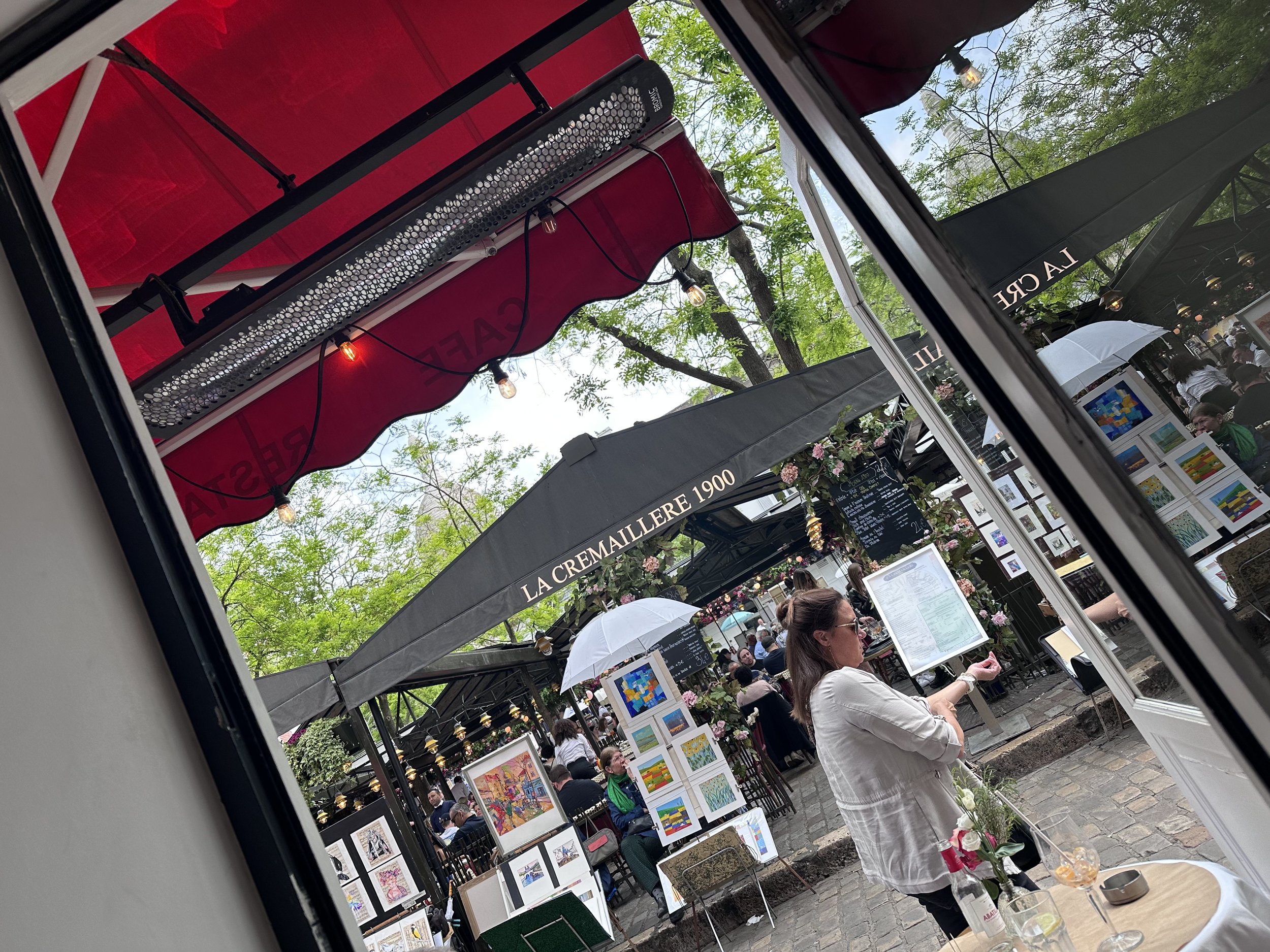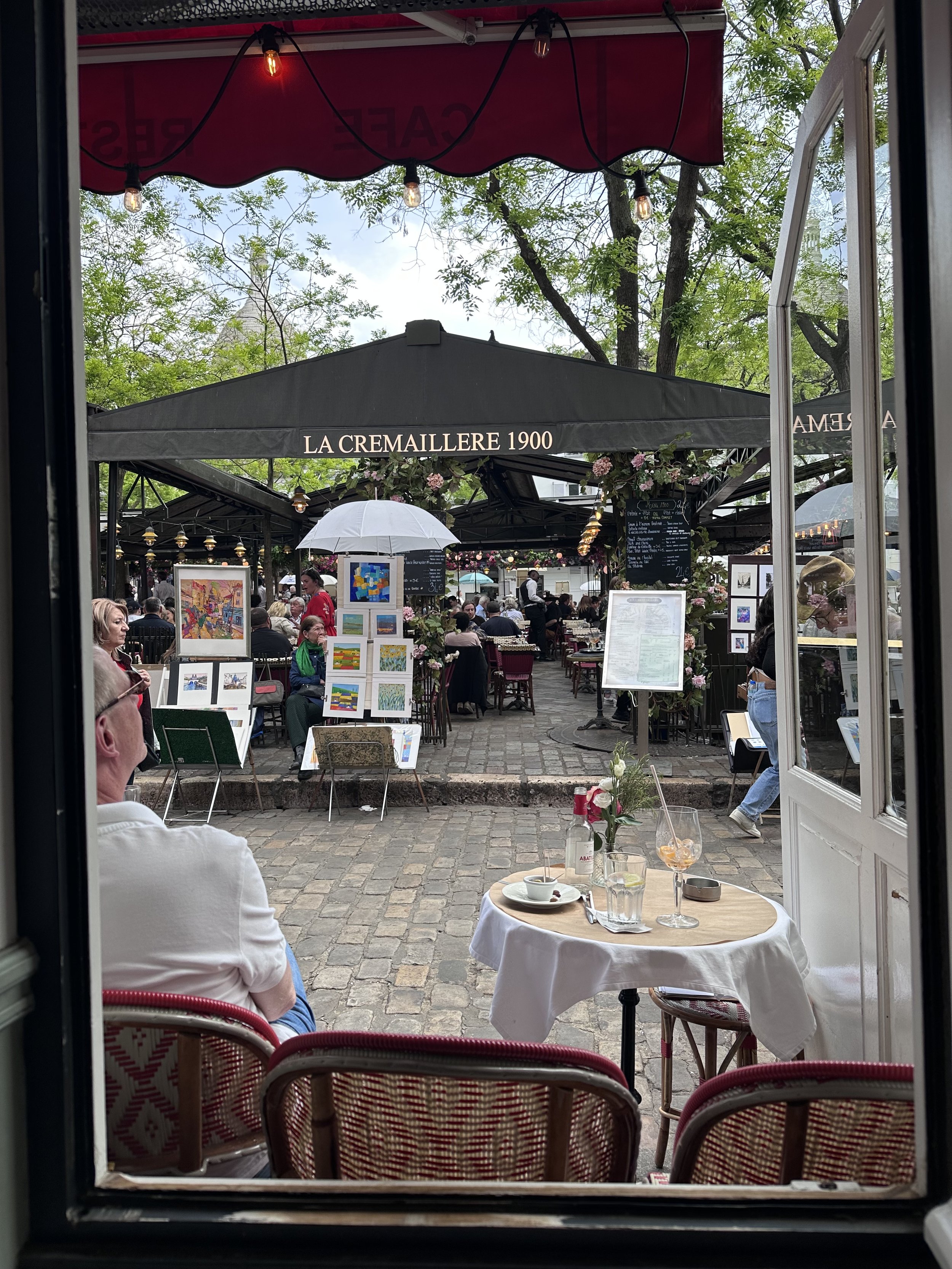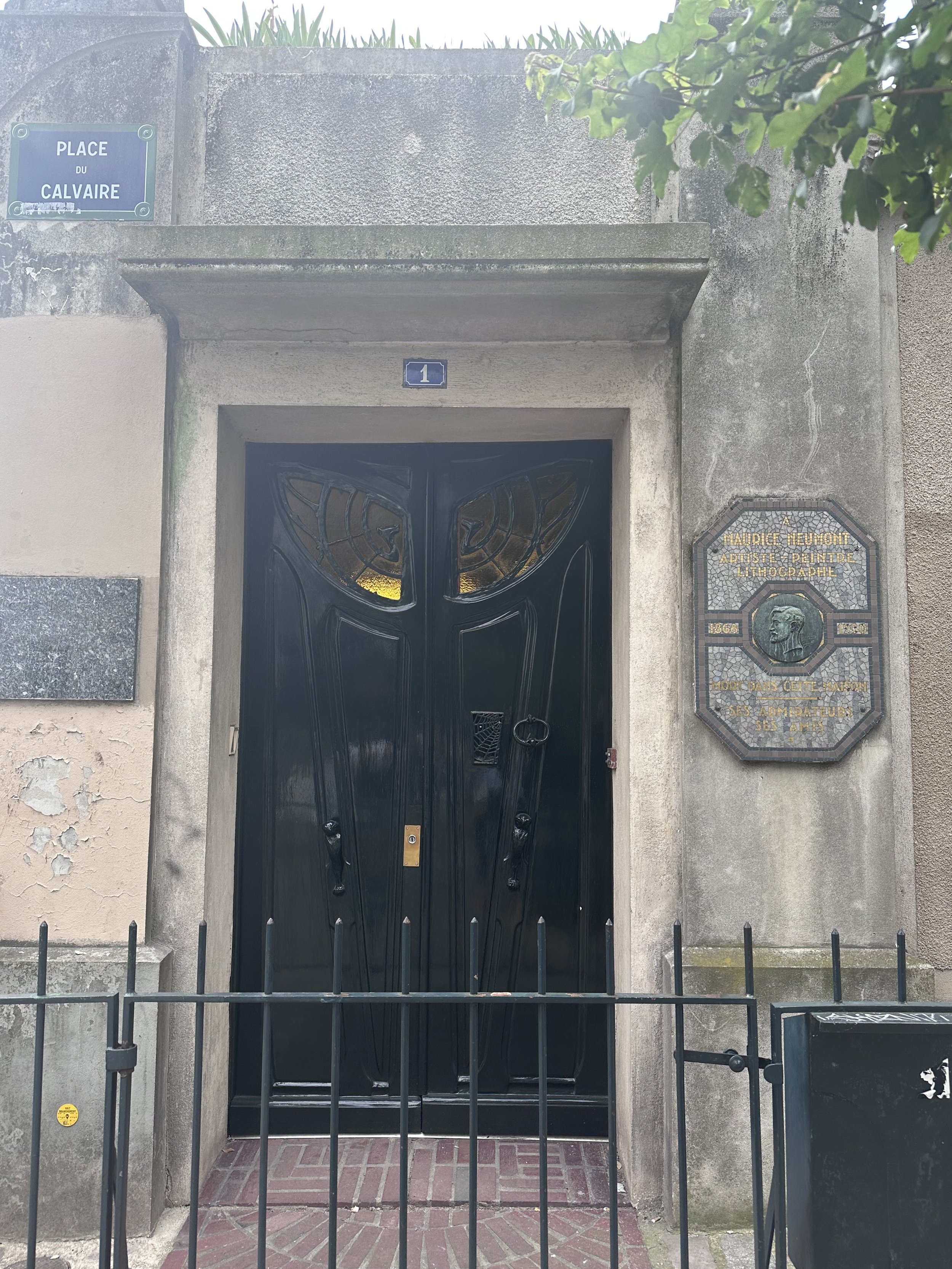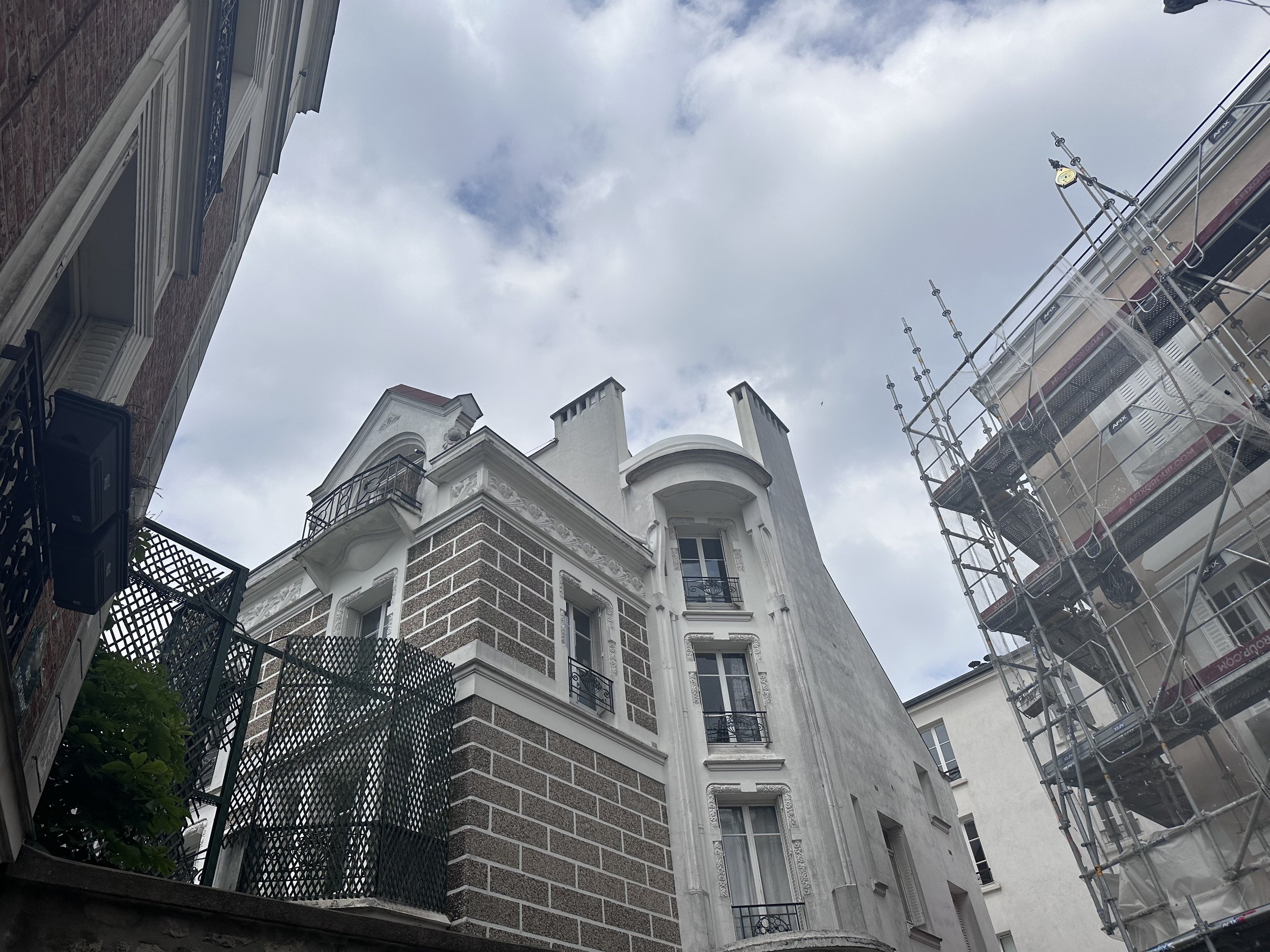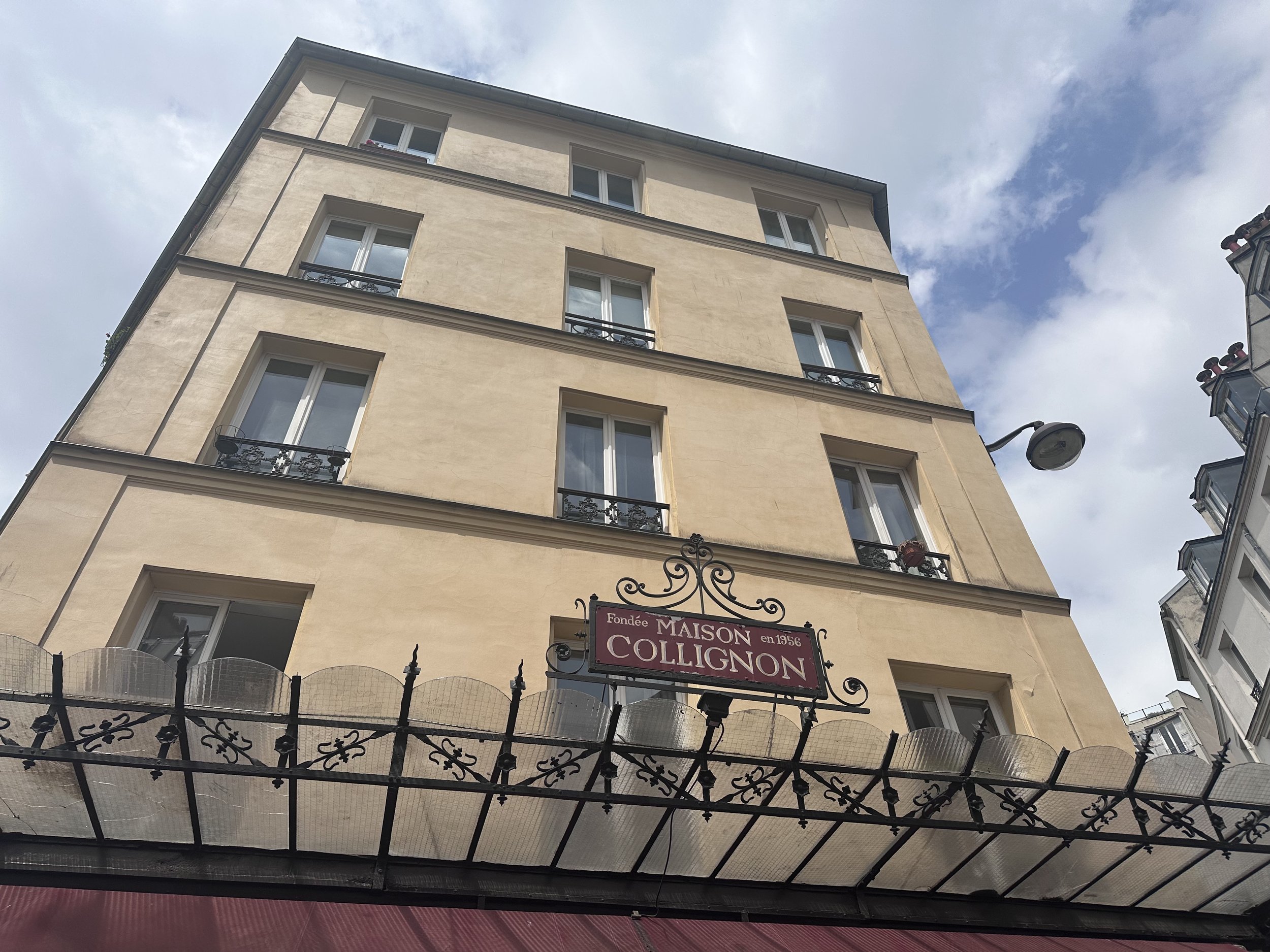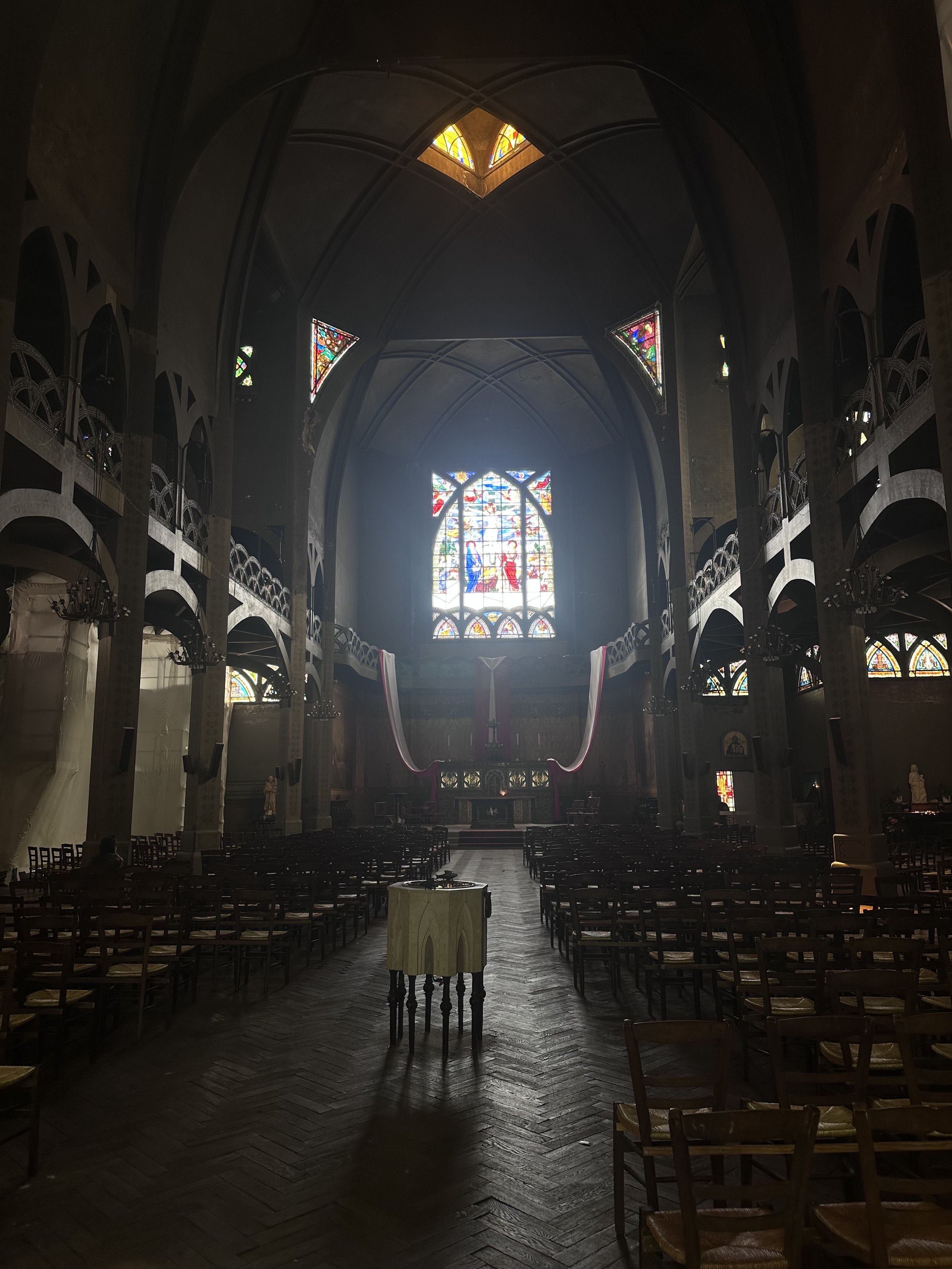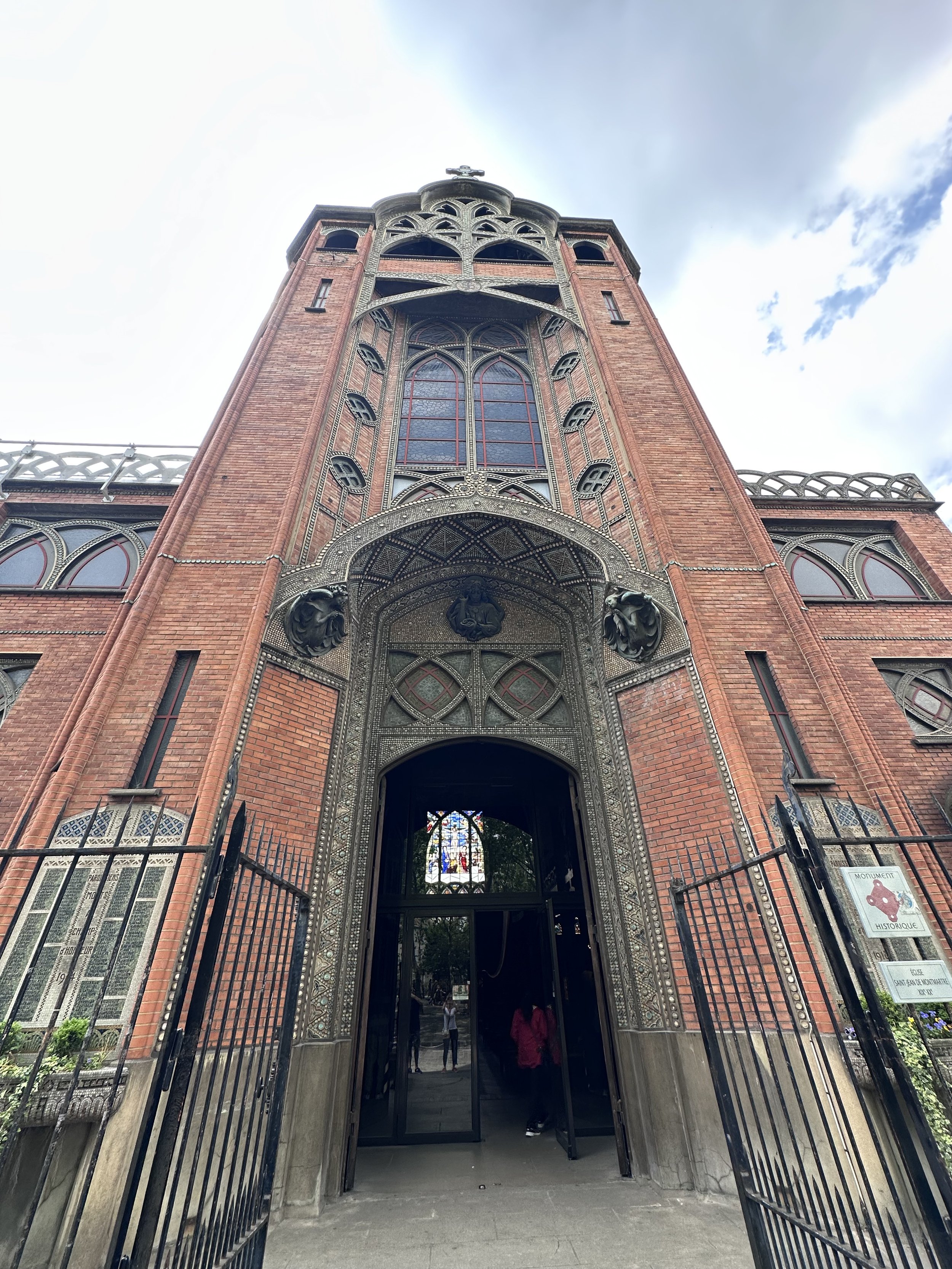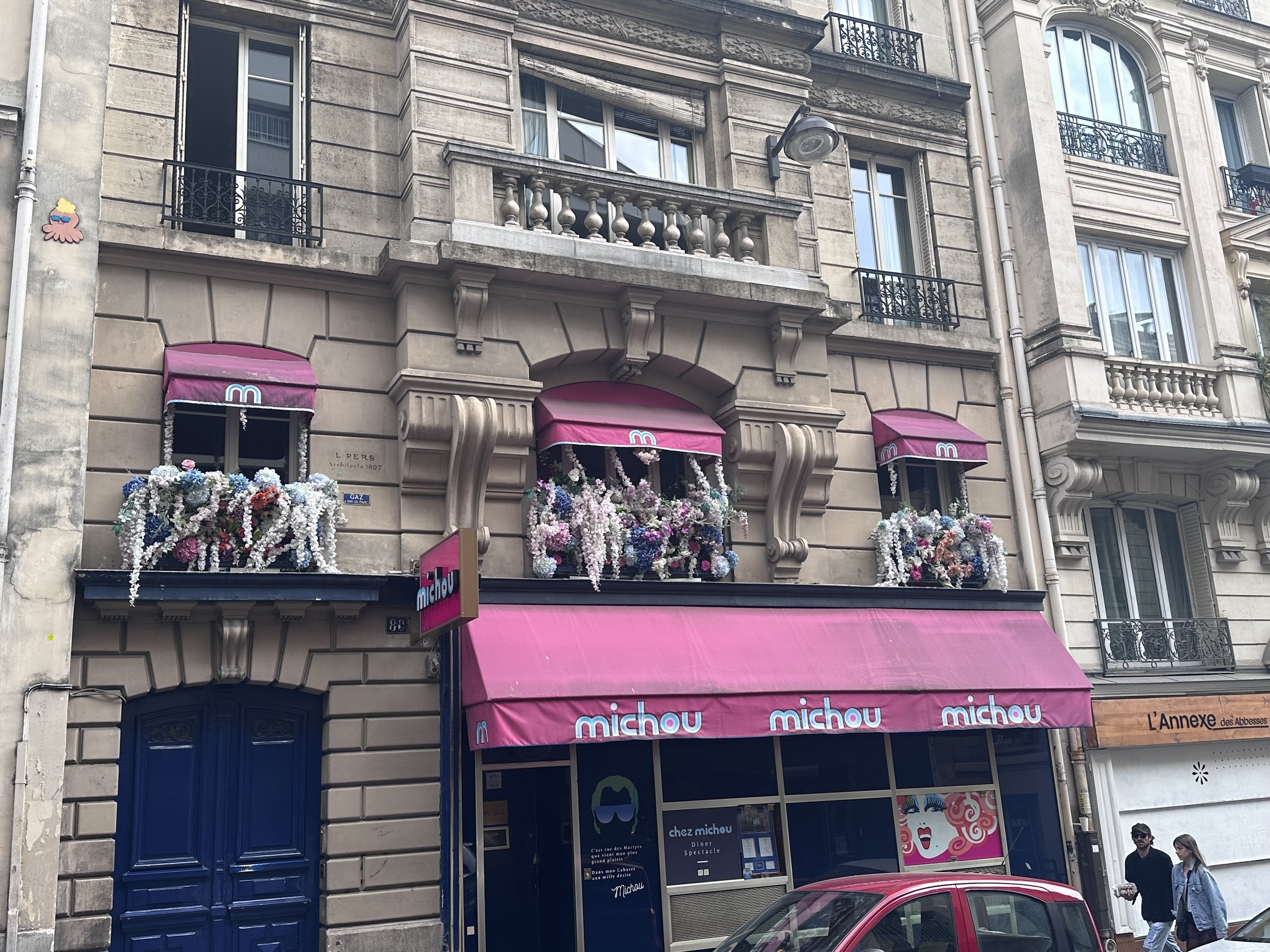Exploring Paris, France
I have a love/hate relationship with big cities and Paris is no exception. On the one hand, it has so much history, so many universally recognizable landmarks, and so much to do. On the other hand, it’s overrun with people (both inhabitants and tourists), is still dangerous (in certain areas and definitely on the metro), and is fairly expensive.
Blackbeard and I chose to stay there a week at a little boutique hotel in Montmartre as there were a lot of day trips we wanted to take that made Paris the ideal choice. However, it isn’t something we recommend doing. Instead, we suggest giving yourself three full days to see it all, then find a little French town to stay in for a couple of nights.
The below information is a complete guide of the best places to stay, the top rated places to dine and drink, and all there is to see and do. We’ve also included transportation tips, as well as a summary of the history of this expansive city!
Time needed in this city: 1 week (if you are taking day trips, which we suggest you do!)
Where to Stay
When you review the list, please note that we are only including those arrondissements that have enough available, 4.5-star options and above.
Hôtel Des Arts Montmartre
The view from the street Hotel des Arts Montmartre is on.
I’ve been to Paris a few times and each time, I choose a different area from the last. This time, we stayed at Hôtel Des Arts Montmartre, which was a great choice for the area. This small boutique hotel is very comfortable with extremely friendly service and is centrally located to everything around Montmartre. As with most inexpensive hotels in Paris, the rooms are on the smaller end, including the bathrooms. This means the largest bed you will get is a queen. Also, to keep the small hotel in wonderful condition, it’s important to know that you cannot eat or drink in your room, above and beyond the coffee and water offered in the rooms. This is something they fail to tell you… until you get caught.
On the best side of this, they give you a beautifully hand-drawn (printed) map of all the sights to see, which is great when your room isn’t quite ready to check into.
Overall, we were very happy to have chose this hotel for our long stay!
1st Arrondissement
3rd arrondissement
4th Arrondissement
5th arrondissement
7th Arrondissement
8th Arrondissement
Maison Villeroy - Top-rated!
16th Arrondissement
18th Arrondissement (Montmartre)
Hôtel Particulier - The old home of the Hermès family
Where to dine & Drink
When you review the list, please note that we are only including those arrondissements that have enough available, 4.5-star options and above.
NOTE for gluten-free and Celiac readers - This city is INCREDIBLY gluten-free friendly. They are learning that even their long-time inhabitants are finding the lifestyle of it more healthy. We’ve included some of the best options around the city for you to try!
TIP: To communicate you are gluten-free (because they take it seriously), memorize the phrase “je suis glutineux”. Make sure to mention that before you order. If you decide to purchase food, the packaging will be marked “sans gluten”.
1st arrondissement
Alfred
Serving classic French “comfort” food. They are open from 12:30pm - 3pm for lunch and 7:30pm - 12:30am for dinner.
Granite
A Michelin-starred restaurant serving local and sustainable meat, fish, and produce dishes in the form of tasting menus only. They are open from 12:15pm - 1pm for lunch and 7:30pm - 9pm for dinner.
Juveniles
A compact bistro/bar,with a large selection of European wines & a menu of unfussy French dishes. They are open from 12pm - 2pm for lunch and 7pm - 10pm for dinner.
Kei
A high-end venue serving Japanese/French fusion, with an artfully presented tasting menu & European wines. They are open from 12:30 - 1:15pm for lunch and 7:45pm - 8:45pm for dinner.
La Cordonnorie
Serving traditional French dishes in an old-world setting. They are open from 12:30pm - 2pm for lunch and 7:30pm - 10pm for dinner.
La Dame de Pic
A Michelin-starred restaurant serving tasting menus of stylishly presented haute cuisine. They are open from 12pm - 1:30pm for lunch and 7pm - 8:30pm for dinner.
Ladurée Paris Royale
World-famous for the decadent macarons, since 1862, Blackbeard and I got to have lunch there on our last full day in Paris. Walking in was like a dream - the restaurant still very much has elements of its beginning days from the antique mirrors, to the gold leafing everywhere, to the floors and paintings. The service was such a joy and the food was so fantastic (I had the fluffiest, most flavorful omelet I’ve ever had). They are open 8:30am - 7:30pm. See Blackbeard’s video review below:
Le Meurice Alain Ducasse
A two Michelin-starred restaurant, they serve a refined menu of elevated local, seasonal fare. They are open from 7pm - 9:30pm.
Le Soufflé
Serving sweet & savory soufflés with flavors like beef bourguignon & hazelnut. They are open from 12pm-4pm for lunch and 7pm-10pm for dinner.
Le Tout-Paris - Cheval Blanc
Serving gourmet fare with panoramic Seine views in the chic rooftop eatery of the Cheval Blanc Paris hotel. They are open from 7am - 1am.
Nodaiwa
Serving traditional Japanese unagi freshwater eel cooked over charcoal. They are open from 12pm - 2:30pm for lunch and 7pm - 10pm for dinner.
Palais Royal Restaurant
A two Michelin-starred restaurant serving gourmet French cuisine & wines in an upscale dining room, or at outdoor tables in palace gardens. They are open from 7:30pm-9:30pm.
Pirouette
Upscale, elegantly plated French dishes & wine at the Westfield Forum des Halles mall. They are open from 12pm - 2pm for lunch and 7pm - 10pm for dinner.
Pléntitude
A three Michelin-starred restaurant, serving a fresh new spin on classical cuisine, taking you on a voyage between Normandy and the Mediterranean. Note that the sauces are what makes these meals, which is why it earned the 3-star accreditation. They are open from 7pm - 1am.
Postiche Bistro
Serving fresh, seasonal French dishes. They are open from 12pm - 2pm for lunch and 6:30pm - 11pm for dinner.
Pur' - Jean-François Rouquette
A Michelin-starred restaurant serving imaginative local dishes from a tasting menu. They are open from 7:45pm - 9:30pm.
Restaurant Kei
High-end venue for Japanese/French fusion, with an artfully presented tasting menu & European wines. They are open from 12:30pm - 1:15pm for lunch and 7:45pm - 8:45pm for dinner.
Sur Mesure par Thierry Marx
A two Michelin-starred restaurant serving multi-course menus in a “white cocoon” feel. They are open from 7:30pm - 9:30pm.
yam'Tcha
A Michelin Star restaurant serving French-Asian food. They are open from 12pm - 1pm for lunch and 7pm - 9pm for dinner.
2nd Arrondissement
Accents Table Bourse
A Michelin-starred restaurant serving tasting menus of inventive global cuisine, with wine pairings. They are open from 12pm-2pm for lunch and 7pm - 10pm for dinner.
Clémentine
Serving traditional French bistro dishes, plus regional wines. They are open from 12pm - 2pm for lunch and 7pm - 10pm for dinner.
Da Rocco
Daroco is housed within the former HQ of Jean Paul Gaultier and boasts a beautiful architectural setting in which to feast on Italian cuisine. They are open from 8am - 9pm.
ERH
A Michelin-starred restaurant serving Japanese-French fusion tasting menus, plus sake & whiskey lists. They are open from 7:30pm - 8:30pm.
Frenchie
A Michelin-starred, rustic-chic stop for seasonal French dishes with global influences, plus chef's carte blanche menus. They are open from 6:30pm - 10:30pm.
KUCCINI
They serve authentic Italian food. They are open from 12pm - 2:30pm and 7pm - 11pm.
Le Baudelaire
A Michelin-starred restaurant serving artfully crafted dishes with a tasting menu. They are open from 12:30pm - 2pm for lunch and 7:30pm - 10pm for dinner.
Omar Dhiab
A Michelin-starred restaurant serving inventive French seafood cuisine. They are open from 12:30pm - 1:30pm for lunch and 7:30pm - 9pm for dinner.
Pizzeria Popolare
Serving authentic Italian pizzas. They are open from 11:45am - 2:15pm for lunch and 6:30pm - 10:30pm for dinner.
Restaurant Pantagruel
A Michelin-starred restaurant serving haute French cuisine, including a 7-part tasting menu at dinner. They are open from 12:15pm - 1:30pm for lunch and 7:30pm - 11pm for dinner.
Shabour
A Michelin-starred restaurant serving imaginative Jerusalem-inspired tasting menu. They are open from 12pm - 2pm for lunch and 7pm - 10:30pm for dinner.
Sushi B
A Michlein-starred restaurant serving elegantly presented sushi & omakase chef's choice menus. They are open from 12:30pm - 1:45pm for lunch and 7pm - 9:30pm for dinner.
Tamara
They specialize in upscale seafood dishes. They are open from 7pm - 10:30pm.
3rd Arrondissement
Auberge Nicolas Flamel
A Michelin-starred restaurant serving tasting menus of contemporary French dishes. They are open from 12pm - 1:45pm for lunch and 7:30pm - 9:30pm for dinner.
BigLove
Serving artisanal pasta, hearty pizza (including gluten-free), and pancakes (it’s a popular brunch spot). They are open from 12pm - 2:30pm for lunch and 6:45pm - 10:45pm for dinner.
BO&MIE
Serving Viennoiseries, bread, and other beautiful pastry creations. They are open from 7:30am - 8pm.
Elmer
Serving elevated regional menus, featuring local ingredients & wines, in a modern space with an open kitchen. They are open from 12:15pm - 2:15pm for lunch and 7:30pm - 10pm for dinner.
ISTR
Serving seasonal dishes, oysters & cocktails in a fashionable New York–style restaurant. They are open from 12pm - 2:30pm for lunch and 6pm - 2am for dinner/drinks.
L'Aller Retour Marais
Elegant contemporary steakhouse, also serving French classics like snails, with a long wine list. They are open from 7pm - 11pm.
Le Carreau
Mellow eatery offering traditional French fare in cozy surrounds, plus wines, cocktails & a terrace. They are open from 12pm - 12am.
La Crème de Paris
They offer a variety of waffles, crepes, and ice creams - all three of which can be made gluten-free! They are open from 8am - 2am everyday.
Les Enfants Rouges
Serving classic French cuisine with a Japanese flair. They are open from 12pm - 2pm for lunch and 7pm - 10pm for dinner.
SOMA Saintonge
Serving creative variations on Japanese dishes in a cool, stone-walled space with manga-style murals. They are open from 12pm - 3pm for lunch and 7:30pm - 11pm for dinner.
5th Arrondissement
Alliance
A Michelin star restaurant serving fixed-menus with seasonal, global fare. They are open 12:30pm - 2pm for lunch and 7pm - 11pm for dinner.
La Table de Colette
Serving eco-responsible, 3-to 7-course French menus & wine pairings. They are open from noon-1:30pm for lunch and 7:30pm - 9pm for dinner.
Le Verre à Pied
A typical French café and bistro (think tiled floors and chalkboard menus). They are open from 9am - 10pm.
Les Papilles
Serving sophisticated French cuisine in a pre-fixe menu. They are open from 12pm - 2pm for lunch and 6pm - 10pm for dinner.
Nossa Churrasqueira Paris 5
Serving street-style Portuguese food. They are open from 12pm - 3pm for lunch and 7pm - 10pm for dinner.
Prosper et Fortunée
Serving homestyle French cuisine. Make sure to book only as they only seat 20 people at a time. They are open from 8pm - 10:30pm.
Sola
A Michelin-starred restaurant serving refined, creative Japanese food with French influences.
Solstice
A Michelin-starred restaurant serving refined seasonal dishesThey are open from 12:15pm - 2:15pm for lunch and 7pm - 10pm for dinner.
Ze Kitchen Galerie
A Michelin-starred restaurant serving Asian cuisine with a French twist. They are open from 12:15pm - 1:45pm for lunch and 7:15pm - 9pm for dinner.
6th Arrondissement
Boutary
Serving surprise seasonal menus that can accommodate allergies. Note that they are a notable caviar company so if you don’t like seafood, this place isn’t for you. They are open from 12:30pm - 2pm for lunch and 7pm - 11:30pm for dinner.
Crêperie Little Breizh
Serving a wide array of galettes & crêpes with savory or sweet toppings. They are open from 12pm - 2:30pm for lunch and 6:40pm - 10:30pm for dinner.
ES
A Michelin-starred restaurant serving a market-driven, fixed-price menu. They are open from 7:30pm - 11pm.
Gaya par Pierre Gagnaire
A Michelin-starred restaurant serving grilled fish, lobster & seafood platters, plus artfully plated desserts. They are open from 12pm - 2:30pm for lunch and 7pm - 11pm for dinner.
Josephine Chez Dumonet
Serving foie gras, beef bourguignon, soufflés & a long regional wine list. They are open from 12:30pm - 2:30pm for lunch and 7:30pm - 10pm for dinner.
La Jacobine
Serving traditional French dishes like onion soup & coq au vin in a snug setting in a historic passageway. They are open from 12pm - 11pm.
Le Bistrot d'Henri
A traditional French bistro, they serve typical French bistro cuisine. They are open from 12pm - 3pm for lunch and 7pm - 11pm for dinner.
Moustache
Serving creative dishes from around the world. They are open from 12pm-2pm for lunch and 7pm-9:30pm for dinner.
Nakatani
A Michelin-starred restaurant serving gourmet fixed-price lunch & dinner menus, plus a robust wine list. They are open from 12:30pm - 2pm for lunch and 7:30pm - 9pm for dinner.
Noglu
They serve healthy, tasty gluten-free gourmet meals with local, organic ingredients. We made it a point to go here after our time at Musée Rodin, and Blackbeard and I had a really hard time choosing just one thing on the menu (see his video short here). We ended up choosing the ham and butter on baguette, the goat cheese and honey on a thick slice of bread, ginger/tumeric shots, and for dessert, a chocolate eclair. Had we not gone to Musée d’Orsay after, we would have stocked up on additional eats, such as their baguettes, croissants, macarons, and rolls.
Relais Louis XIII
A Michelin-starred restaurant serving an elevated tasting menus & a long wine list in a former convent, with wood beams & stained glass. They are open from 12:15pm - 2:30pm for lunch and 7:15pm - 10:30pm for dinner.
Restaurant Guy Savoy
A two Michelin-starred restaurant offering sophisticated, high-concept French for both a la carte & fixed-price menus. They are open from 12pm - 2:30pm for lunch and 7pm - 11pm for dinner.
Semilla
Serving contemporary, intricate French cuisine with Mediterranean accents. They are open from 7pm - 11pm.
Shu
Serving skewered, deep-fried meat, veggies & seafood with dipping sauces. They are open from 6:30pm - 9:30pm.
Yoshinori
A Michelin-starred restaurant serving refined, vegetable-based, graphic cuisine, presented as a seasonal menu. They are open from 12:30pm - 1:30pm for lunch and 8pm - 9:30pm for dinner.
7th Arrondissement
Auguste
A Michelin-starred restaurant serving tasting menus of contemporary French cooking. They are open from 12pm - 2pm for lunch and 7:30pm - 10:30pm for dinner.
Bistrot Belhara
They serve refined French cuisine in a cozy setting. They are open from 12pm - 2pm for lunch and 7pm - 10pm for dinner.
David Toutain
Boasting two Michelin stars and one green Michelin star, this restaurant serves French tasting menus. They are open from 12pm - 2:30pm for lunch and 8pm - 10pm for dinner.
L’Ami Jean
Relaxed, compact bistro serving elevated meat & seafood dishes made from sustainable ingredients. They open from 12pm - 2pm for lunch and 7pm - 11pm for dinner.
Lastre Sans Apostrophe
Serving a variety of all things paté. They are open from 10am - 6pm.
Le Violon d'Ingres
A Michelin-starred restaurant serving creative takes on French classics. They are open from 12pm - 2pm for lunch and 7pm - 10pm for dinner.
Les Climats
A Michelin-starred restaurant serving Burgundy wines & refined French cuisine in an ornate, art deco space with a garden. They are open from 12pm - 1:30pm for lunch and 7pm - 9:30pm for dinner.
Pertinence
A Michelin-starred restaurant serving market-fresh dishes overflowing in powerful flavours, brushing the cobwebs off French culinary tradition along the way. They are open from 12:15pm - 1pm for lunch and 7:30pm - 9pm for dinner.
Pottoka
They serve refined tapas & global dishes with Basque influences, plus special tasting menus. They are open from 12pm - 2pm for lunch and 7pm - 10pm for dinner.
Tasca
Tasca is a 100% gluten-free Italian restaurant, which we absolutely enjoyed. We recommend any of the pizzas on the menu!
Tomy & Co.
Michelin-starred restaurant serving sophisticated French bistro fare. They are open from 12:30pm - 2pm for lunch and 7pm - 11pm for dinner.
8th Arrondissement
114, Faubourg
A Michelin-starred restaurant serving elevated dishes & tasting menus. They are open from 12pm - 2pm for lunch and 7pm - 10pm for dinner.
Astrance
A Michelin-starred restaurant serving innovative cuisine with a particular predilection for Asian and plant-based dishes. They are open from 12pm - 2pm for lunch and 7:30pm - 9:30pm for dinner.
Contraste
A Michelin-starred restaurant, serving Catalonian cuisine with a southern French twist. They are open from 12pm - 2pm for lunch and 7:30pm - 10:30pm for dinner.
Don Juan II - Yachts de Paris
A Michelin-starred restaurant ON A SAILING YACHT. The Michelin Guide puts it the best, “Moored by Debilly footbridge, on the Right Bank overlooking the Eiffel Tower, the magnificent Art deco Don Juan II yacht, adorned with wainscoting and thick carpeting, awaits you. Set sail for a 2hr30min cruise while you dine on emblematic dishes (ravioli langoustines, roast venison with autumn truffles, hot chocolate soufflé). Meals are served against an ever-changing backdrop as you glide down the Seine, viewing some of the most iconic monuments of the City of Light. They are open from 12pm - 2pm for lunch and 7:30pm - 10:30pm for dinner.
Helen
A Michelin-starred restaurant, servin modern French food with a focus on seafood. They are open from 12pm - 2pm for lunch and 7:30pm - 10:15pm for dinner.
L'Arôme
A Michelin-starred restaurant, serving creative French-inspired fine dining with a tasting menu & wine pairing. They are open from 12pm - 1:45pm for lunch and 7:30pm - 9pm for dinner.
L'Écrin
A Michelin-starred restaurant where the choice of wine determines that of the food! Each diner thus enjoys a personalised experience depending on the wines and number of courses selected. They are open from 7:30pm - 10pm for dinner.
L’Orangerie
A Michelin-starred restaurant serving artfully presented plant- & fish-based dishes. They are open from 12:30pm - 2:30pm for lunch and 7pm - 11pm for dinner.
La Scène
A two Michelin-starred restaurant, they serve only food and wine pairing menus at insanely high prices. They are open from 12:30pm - 1:30pm for lunch and 7:30pm - 8:45pm for dinner.
Lasserre
A Michelin-starred restaurant, serving refined takes on classic French fare, plus tasting menus & wine pairings. They are open from 7pm - 9:30pm.
Le Cinq
A three Michelin-starred restaurant serving creatively plated French dishes in an unadulterated opulent, Regency-style dining room with a wine cellar. They are open from 7pm - 10pm.
Le Clarence
A two Michelin-starred restaurant serving elevated classics & a wine cellar in an old world setting. They are open from 12:30pm - 1:30pm for lunch and 7:30pm - 9pm for dinner.
Le Gabriel
A two Michelin-starred restaurant, they serve refined, innovative French-inspired cuisine with tasting menus, served in an opulent dining room. They are open from 12:30pm - 5pm for lunch and 7:30am - 12am for dinner.
Le George
A Michelin-starred and GREEN Michelin-starred restaurant, serving creative Italian cuisine & tasting menus. They are open from 12:30pm - 2:30 pm for lunch and 6:30pm - 11pm for dinner..
Le Mermoz
Serving fresh market fare that changes daily based on what's in season, making for an ever-changing, sometimes surprising but always inventive menu. They are open from 12pm - 2:30pm for lunch and 7pm - 11:30pm for dinner.
L'Oiseau Blanc
A two Michelin-starred restaurant in an elegant rooftop venue with Eiffel Tower views, offering gourmet seasonal dishes & a robust wine list. They are open from 12pm - 2pm for lunch and 7pm - 10pm for dinner.
Le Taillevent
A two Michelin-starred restaurant serving creative, artfully plated French dishes & a long wine list. They are open from 12pm - 1:30pm for lunch and 7:15pm - 9pm for dinner.
Les Confidences
Within the St. Regis Hotel, Les Confidences sees chef Romain Leydier showcasing the freshest vegetables (though not exclusively!) and beautiful interiors further warmed by the friendly service. They are open from 7pm - 10:30pm.
Maison Rostang
A two Michelin-starred restaurant serving innovative takes on French classics. They are open from 12:30pm - 2pm for lunch and 7:30pm - 10pm for dinner.
Maison Ruggieri
A top-rated Michelin-starred restaurant serving two menus and a particularly enticing à la carte offering. It’s possible to order a dish, an ingredient, or a recipe when you book your table. They use outstanding ingredients at the service of superlative flavors, harmonious, sometimes disconcerting assemblies (such as a dish of spinach, oysters and caviar) and flavorful recipes, often enhanced by jus (drizzled over a rib of beef, razor clams and smoked eel, for example) and mind-blowing sauces. They are open from 12:30pm - 2:30pm for lunch and 7:45pm - 11pm for dinner.
Origines
Serving seasonal menus that offer modern dishes from land and sea. They are open from 12:15pm - 1:45pm for lunch and 7:30pm - 10:45pm fo dinner.
Ōrtensia
A top-rated Michelin-starred restaurant serving a Gallic menu, sprinkled with just the right amount of Japanese accents. The cuisine changes colour with the seasons and weather. They are open from 12:30pm - 1:30pm for lunch and 7:30pm - 9pm for dinner.
Oxte
A Michelin-starred restaurant serving inventive & artfully presented Mexican-influenced French cuisine. They are open from 12:15pm - 2pm for lunch and 7:15pm - 10pm for dinner.
Pages
A Michelin-starred restaurant serving high-concept French cuisine prepared with Japanese techniques. They are open from 12pm - 1pm for lunch and 7:30pm - 8pm for dinner.
PavYllon
A two Michelin-starred restaurant, this prestigious Parisian institution is housed in an elegant building set in the Jardins des Champs-Élysées - it’s also the oldest restaurant in Paris. It serves avant-garde French cuisine and is also seen as the epitome for French atmosphere and service for dining. They are open from 7:30pm - 9:30pm.
Pierre Gagnaire
A three Michelin-starred restaurant serving French cuisine d'auteur. They are open from 12pm - 1:30pm for lunch and 7:30pm - 9:30pm for dinner.
Trente-Trois
A Michelin-starred restaurant serving premium produce that creates a concise menu, signing subtle, up-to-date, seasonal dishes.. They are open from 12pm - 3pm for lunch and 7:30pm - 10pm for dinner.
16th arrondissement
Astrance
A two Michelin-starred restaurant, they reinvent their menu on a daily basis - but getting a reservation can be a challenge! They are open from 12pm - 2pm for lunch and 7:30pm - 9:30pm for dinner.
Bellefeuille - Saint James Paris
Built in 1892, this private mansion looks like a little château surrounded by greenery in the very heart of Paris. It became a hotel in the early 1990s, and it wasn't until 2013 that its restaurant opened to outside customers - it’s still highly exclusive. It’s a Michelin-starred restaurant, serving high-quality cuisine replete with vegetables and seafood, as well as meat dishes. They are open from 7:30pm - 9:30pm.
Comice
A Michelin-starred restaurant, they serve haute French cuisine. They are open from 7:30pm - 9pm.
L'Archeste
A Michelin-starred restaurant, serving high-end cuisine with a Japanese twist. They are open from 12:30pm - 1pm for lunch and 8pm - 9pm for dinner.
La Grande Cascade
Transformed into a restaurant for the Universal Exhibition of 1900, it mingles Empire, Belle Époque and Art nouveau styles whose bewitching charm culminates in a rotunda dining room with a glazed roof that leads onto a superb terrace. This Michelin-starred restaurant serves high-end cuisine with a modern flair, including macaroni with celery root, foie gras and black truffle; seared veal sweetbreads with salted butter; and turbot cooked in seaweed salt crust. They are open from 12:30pm - 2pm for lunch and 7:30pm - 9:30pm for dinner.
Le Pré Catelan
A three Michelin-starred restaurant, they serve artistically plated haute cuisine in an opulent, light-filled venue in the Bois de Boulogne park. They are open from 12pm - 1:15pm for lunch and 7pm - 8:15pm for dinner.
Le Récepteur
A casual, old-fashioned bistro with a patio offering sophisticated entrees & a menu of regional wines. They are open from 7am - 12am.
Restaurant Alan Geaam
Serving imaginative, Lebanese-inflected French cuisine. They are open from 12pm - 2pm for lunch and 7:30pm - 9:30pm for dinner.
Restaurant Ensemble
Serving small plates with cocktails & wine. They are open from 12pm - 2pm for lunch and 7:30pm - 10pm for dinner.
Shang
A Michelin-starred restaurant, serving elevated Chinese dishes, tasting menus & wine. They are open from 12pm - 2pm for lunch and 7pm - 10pm for dinner..
18th Arrondissement (Montmartre)
ADN
They specialize in fresh global fare for all dietary needs. They also have a small grocery mart attached as well. They are open from 12pm - 3pm for lunch and 7pm - 9:30pm for dinner.
Al Caratello
Serving Italian cuisine, they are open from 12pm - 2:30pm for lunch and 7pm - 11:30pm for dinner.
Au Rendez-Vous de Montmartre
Serving Mediterranean fare, specializing in couscous bowls. They are open from 9am - 3pm for breakfast and lunch and 6pm-11pm for dinner.
Ayutthaya
Serving traditional thai food. They are open from 7pm - 11:30pm.
Bicoques
With over 300 5-star reviews, they serve homemade shellfish dishes and desserts. They are open from 7pm - 11pm.
Blackbird Coffee
A top-rated coffee shop. They are open from 9am - 6pm.
Boulangerie Chambelland
A gluten-free bakery.
Brasserie Thai
Serving Pad Thai, Tom Yum, and other Thai dishes. They are open from 12pm - 3pm for lunch and 7pm - 11pm for dinner.
Chez Eugéne
Bistro staples, plus aperitifs & a long wine list, in colorful interiors or on a bustling sidewalk. They are open from 8am - 2am.
Blackbeard and I stopped by this little cafe after visiting the extremely busy Sacre Coeur, and we were so impressed with the food options, wine list, and the service. It’s worth it even for a glass of wine and the people watching, and the art for sale along the street. Check out his video short here.
Copains
An AMAZING gluten-free bakery that DELIVERS all the French goods you can imagine. And, if you’re on a budget, note that they are all incredibly inexpensive - their baguettes are €1.90! There is not one wrong thing on this menu and we should know - Blackbeard nearly ordered them all :). Check out his YouTube short here.
Crêperie Rozell Café
Serving a variety of crepes. They are open from 12:10pm - 3:10pm for lunch and 6:10pm - 9:10pm for dinner.
Ecru Kitchen
Serving healthy, creative Asian dishes. It’s one of the top-rated restaurants in Montmartre. They are open from 12pm-3pm for lunch and 7pm-10pm for dinner.
Fric-Frac
They offer a variety of croque-monsieurs. They are open from 12pm - 4pm for lunch and 7pm-10:30pm for dinner.
Haha
Serving Japanese street food. They are open from 7pm - 10pm.
L'Annexe
Their short menu changes with the seasons and offers homemade dishes from fresh produce. The menu has both vegetarian and gluten-free choices. They are open from 12:30pm - 2pm Fridays-Sundays and 7pm - 11:30pm everyday.
This was our first dinner upon arriving to Paris and it was absolutely wonderful. This little hidden gem has incredible food and wonderful service. We highly recommend making reservations. Check out Blackbeard’s review below:
L’Arcane
A Michelin-starred restaurant serving choice seasonal tasting menus, plus wines.. They are open from 12pm - 1:45pm for lunch and 7:15pm - 10:30pm for dinner.
La Boîte aux Lettres
Creative but unpretentious French mains, salads & cakes at a cozy bistro with a robust wine list. They are open from 12pm - 2:30pm for lunch and 7pm - 10:30pm for dinner.
La Couvée Montmartre
Serving traditional French cuisine. They are open from 12pm - 2:30pm and 7pm - 10:30-pm.
La Manufacture du Sans Gluten
A gluten-free bakery.
La Risotteria de Livia
Top-rated! They serve Italian cuisine, specializing in risotto dishes. They are open from 12pm - 3pm for lunch and 7pm - 11pm for dinner.
La Taverne de Montmartre
Serving authentic French cuisine in an authentic French cafe setting. They are open from 12pm - 2pm for lunch and 6pm - 9pm for dinner.
La Travesía
A top-rated Lebanese restaurant. They are open from 12-3pm for lunch and 7pm - 11:45pm for dinner.
La Vache et le Cuisinier
A contemporary bistro serving French cuisine. They are open from 7pm - 11:30pm.
Le Cabanon de Butte
Serving traditional French, yet gluten-free-friendly cuisine. They are open from 12pm-2:30pm or lunch and 6:30pm - 10:30pm.
Le Carafon
Offering a small French cafe menu. They are open from 11am - 2:30pm for lunch and 5pm - 11:30pm for dinner.
Le Mazenay
Serving market-fresh French cuisine. They are open from 12:15pm - 2pm for lunch and 7:15pm - 10pm for dinner.
Le Poulbot
Characterful hole-in-the-wall for traditional fare like French onion soup, duck confit & snails. They are open from 12pm - 10pm.
Les 5 Marches - café cantine
They serve traditional French cafe cuisine in a cozy setting. They are open from 8:30am - 5pm.
Les Vins de Montmartre
Serving traditional French cafe cuisine. They are open from 5:30pm - 2am.
Krishna
Serving traditional Indian cuisine. They are open from 12pm - 3pm for lunch and 6pm - 11:30pm for dinner.
Mamie Colette
Serving traditional French cuisine. They are open from 12:00pm - 3pm for lunch and 6:30pm - 11pm for dinner.
Sacrée Fleur
Serving many different kinds of savory grilled meats. They are open from 6:30-10:30pm.
Salento
Traditional, cozy Italian eatery with an old-world feel, exposed-stone walls & a terrace. They are open from 12pm - 2:30pm for lunch and 7pm - 10:30pm for dinner.
Seb'on
Elegantly plated seasonal cuisine in a rustic-chic restaurant with a window into the kitchen. They are open from 7pm - 11pm.
Signature Montmartre
Sophisticated Asian fusion cuisine with Korean flair, plus wine in an elegant, intimate setting. they are open from 7pm - 11pm.
Things to see/do
Day Trips
Champagne Tasting
Discover the pleasures and history of Champagne on this full-day winery tour from Paris. In the Champagne wine region, visit the house of Nicolas Feuillatte, and meet a local producer. Learn about the growing, harvesting, and bottling process, and sample different types of Champagne. See the resting place of Dom Perignon, the monk who developed the French bubbly wine. Travel by comfortable van and come away knowing how to properly taste Champagne.
Giverny
If you click the above link, you will get an itinerary of what there is to do in this amazing little town. If you prefer a group tour, click here.
Normandy D-Day Landing Beaches
Travel back in time on a historical tour of World War II landing sites. Head to the Beach of Normandy, to see Pointe du Hoc, a promontory that was a German fortification strong point until U.S. army members invaded on June 6, 1944. Visit the American Cemetery on a bluff above Omaha Beach, and explore other significant locations such as Mulberry Harbor, built specifically to speed the unloading process of Allied troops.
Versailles
The Palace of Versailles the former royal residence of King Louis XIV located in Versailles, about 12 miles west of Paris, France. The palace is owned by the French Republic and since 1995, has been managed under the direction of the French Ministry of Culture, by the Public Establishment of the Palace, Museum and National Estate of Versailles.
Louis XIII built a simple hunting lodge on the site of the Palace of Versailles in 1623. With his passing, came Louis XIV who expanded the château into the beginnings of a palace that went through several changes and phases from 1661 - 1715. It was a favorite residence for both kings, and in 1682, Louis XIV moved the seat of his court and government to Versailles, making the palace the de facto capital of France. This state of affairs was continued by Kings Louis XV and Louis XVI, who primarily made interior alterations to the palace, but in 1789 the royal family and capital of France returned to Paris. For the rest of the French Revolution, the Palace of Versailles was largely abandoned and emptied of its contents, and the population of the surrounding city plummeted.
Napoleon I, following his coronation, used Versailles as a summer residence from 1810 - 1814, but did not restore it. Following the Bourbon Restoration, when the king was returned to the throne, he resided in Paris and it was not until the 1830s that meaningful repairs were made to the palace. A museum of French history was installed within it, replacing the apartments of the southern wing.
The palace and park were designated a World Heritage Site by UNESCO in 1979 for its importance as the center of power, art, and science in France during the 17th and 18th centuries. The French Ministry of Culture has placed the palace, its gardens, and some of its subsidiary structures on its list of culturally significant monuments.
HOW TO GET THERE: We highly recommend taking the tour, which comes with roundtrip transportation.
TIP: If you have the means, stay at Airelles Château de Versailles, Le Grand Contrôle for a night. The hotel boasts private, after-hour tours of the palace, as well as a curated Marie Antoinette–themed day, where guests experience the queen’s favorite activities, from their very own costume fittings, to attending an opera performance, and dining with a string quartet. Rates start from 1,700 euros ($2,082) a night, which includes a butler, daily tours of Versailles, and access to the palace grounds (including transport via boats and golf carts).
historical tours
Arc de Triomphe
Taken in 2012
Translating to “Triumphal Arch of the Star”, Arc de Triomphe stands in the middle of that star to “unit” 12 intersections… making it hard to drive through and harder to get out of :). It honors those who fought and died for France in the French Revolutionary and Napoleonic Wars, with the names of all French victories and generals inscribed on its inner and outer surfaces. Beneath its vault lies the Tomb of the Unknown Soldier from World War I. It was commissioned in 1806 and wasn’t completed until 30 years later. It’s rumored it cost 10,000,000 francs (equivalent to an estimated €65 million or $75 million today). Some interesting facts about the Arc:
On December 5, 1840, Napoleon's remains passed under it on their way to the Emperor's final resting place at Les Invalides.
The body of Victor Hugo was displayed under the Arc on the night of May 22, 1885.
On August 7, 1919, Charles Godefroy successfully flew his biplane under the Arc.
Conciergerie
A former courthouse and prison, located on the west of the Île de la Cité, below the Palais de Justice, the Conciergerie was originally part of the former royal palace. Two large medieval halls remain from that palace - the Hall of the Men-at-arms and the Hall of the Guards below.
The building shifted purpose in the 14th century and it’s then that prison cells were gradually added to the lower parts of the building. Its prisoners were a mixture of common criminals and political prisoners and their treatment was dependent on their wealth, status, and associates. Wealthy or influential prisoners usually got their own cells with a bed, desk and materials for reading and writing. Less well-off prisoners could afford to pay for simply furnished cells (known as pistoles), which would be equipped with a rough bed and a table. The poorest would be confined to dark, damp, vermin-infested cells known as oubliettes ("forgotten places"). In keeping with the name, they were left to live or die in conditions that were ideal for the plague and other infectious diseases, which were rife in the unsanitary conditions of the prison.
On August 3, 1792, Queen Marie-Antoinette, was arrested and first held in the Temple Prison with her family (the King was tried between December 3, 1792 and December 26, 1792, and executed January 21, 1793). She was then transferred to the Conciergerie on the night of August 1–2, 1793 and confined in a single-bed cell on the ground floor, overlooking the Women's Courtyard. She was not allowed any writing instruments, and was continually watched by two gendarmes. After several unsuccessful plots to free her were discovered, she was transferred to a different cell (where the current memorial chapel is located) and held there for 44 days. She was questioned in her cell on October 12, 1793 and was charged with three crimes: collusion with Austria, excessive expenditure, and opposing the Revolution. Two days later, her trial began in the former Great Hall of the Palace. She had two court-appointed lawyers, but they were only allowed less than a day to prepare their case. The trial lasted for two days, in which 41 witnesses testified. The trial concluded on October 16, 1793 and as expected, was sentenced to death by beheading.
TIP: Get tickets in advance - especially if you’re going in May - September. We were not willing to wait in the long line to get untimed tickets for this, so we took a pic for reference, instead.
Eiffel Tower
Named after the engineer Gustave Eiffel, whose company designed and built the tower, the Eiffel Tower was constructed from 1887 to 1889 as the centerpiece of the 1889 World's Fair. Although initially criticized by some of France's leading artists and intellectuals for its design, it has since become a global cultural icon of France and one of the most recognizable structures in the world. The tower is 1,083 ft. tall (about 81 stories high) and its square base measures 410 ft. on each side. During its construction, the Eiffel Tower surpassed the Washington Monument to become the tallest human-made structure in the world, a title it held for 41 years until the Chrysler Building in New York City was finished in 1930. It was also the first structure in the world to surpass both the 200-metre and 300-metre mark in height. Due to the addition of a broadcasting antennae at the top of the tower in 1957, it’s now taller than the Chrysler Building by 17 ft.
There are two ways you can get to the top of the tower: steps or the lift. If you choose the steps, from ground level to the first level is over 300 steps, as is the climb from the first level to the second, making the entire ascent a 600 step climb. Although there is a staircase to the top level, it is usually accessible only by lift.
Note: There is now a glass wall around the eiffel tower, along with security gates so there will be a bit of a line to get in. It’s free to access the grounds.
TIP: If you want to get to the top of the tower, you will need to purchase tickets online about three weeks in advance or, you may do so here. If you only want to go halfway up, there seem to be plenty of tickets available for that.
Maison Victor Hugo
Victor-Marie Hugo was a French Romantic writer and politician. During a literary career that spanned more than 60 years, he wrote in a variety of genres and forms, including, The Hunchback of Notre-Dame (1831) and Les Misérables (1862). In France, Hugo is renowned for his poetry collections, such as Les Contemplations (The Contemplations) and La Légende des siècles (The Legend of the Ages). Hugo was at the forefront of the Romantic literary movement with his play Cromwell and drama Hernani. Many of his works have inspired music, both during his lifetime and after his death, including the opera Rigoletto and the musicals Les Misérables and Notre-Dame de Paris. He produced more than 4,000 drawings in his lifetime, and campaigned for social causes such as the abolition of capital punishment.
Though he was a committed royalist when young, Hugo's views changed as the decades passed, and he became a passionate supporter of republicanism, serving in politics as both deputy and senator. His work touched upon most of the political and social issues and the artistic trends of his time. His opposition to absolutism and his literary stature established him as a national hero (when Napoleon III seized complete power in 1851, establishing an anti-parliamentary constitution, Hugo openly declared him a traitor to France. He moved to Brussels, then Jersey, from which he was expelled for supporting a Jersey newspaper that had criticised Queen Victoria). He finally settled with his family at Hauteville House in Saint Peter Port, Guernsey, where he would live in exile from October 1855 until 1870. He was interred in the Panthéon.
His Maison-turned-museum is in the Place des Vosges and dates from 1605 when a lot was granted to Isaac Arnauld in the south-east corner of the square. It was substantially improved by the de Rohans family, who gave the building its current name of Hôtel de Rohan-Guéménée. Victor Hugo was 30 when he moved into the house in October 1832 with his wife, Adèle. They rented a 918 sq. ft. apartment on the second floor. The now museum consists of an antechamber leading through the Chinese living room and medieval style dining room to Victor Hugo's bedroom where he died in 1885.
Musée de Montmartre
The Musée de Montmartre is located at 8-14 rue Cortot in the 18th arrondissement of Paris (Montmartre). It was founded in 1960 and was classified as a “Musée de France” in 2003. The buildings were formerly the home of several famous artists, including Pierre-Auguste Renoir and Suzanne Valadon.
The collections of the museum belong to the association Le Vieux Montmartre, created in 1886, and contains paintings, photographs, posters and manuscripts that depict the history of the neighbourhood, its effervescence, the bohème and cabarets from the nineteenth and twentieth centuries. This collection includes Le Cabaret du Chat Noir by Steinlen, Bruant au Mirliton, Le Divan Japonais or Le Moulin Rouge by Toulouse-Lautrec, La Place Pigalle by Maurice Utrillo, L’Autoportrait by Suzanne Valadon, Parce Domine by Willette, L’enseigne du Lapin Agile as well as the magnificent Théâtre d’ombres by Henri Rivière.
The gardens behind the musée have been renovated according to Renoir’s paintings. They provide a good view of the vineyard, which has existed since the Middle Ages, and was re-planted in 1933. According to the New York Times, its working vineyard is said to make the most expensive bad wine in the city.
Musée Histoire de Paris Carnavalet (The Carnavalet-History of Paris Museum)
The land on which the museum stands was purchased in 1544 by Jacques de Ligneris, the president of the Parliament of Paris, who built a townhouse, completed about 1560. In 1572, the hôtel was purchased by Madame de Kernevenoy, the widow of a member of the Court of Henry II of France, and the preceptor of the Duke of Anjou, who became Henry III of France. Her Breton name was difficult for the Parisians to pronounce, and gradually was transformed to "Carnavalet". During this period, the facade and portals were given lavish decoration of Renaissance sculpture, much of which still can be seen.
In 1654, the mansion was bought by the intendant Claude Boislève, who commissioned the architect François Mansart to make extensive renovations in the new classical style. Unfortunately, he had the misfortune of being too closely associated with Fouquet, the royal chancellor who was accused of misusing using royal funds to build his own palatial residence. The hôtel and furnishings were confiscated from Boisléve in 1662 and sold at auction. The new buyer rented the hotel in 1677 to Madame de Sévigné, famous for her letters describing the daily life and intrigues of the Parisian nobility. She lived in the Hôtel Carnavalet from 1677 until her death in 1696.
The idea of creating a museum of Paris history was launched by Baron Haussmann, who, under Napoleon III, was in the midst of his grand project of building new avenues, parks, and squares in the center of the city. In 1866, he persuaded the city of Paris to purchase the Hotel Carnavalet to house the museum, and assembled a large collection of historical objects and documents. Until the museum was completed, the collection was stored within the city archives, in the vaults of the Hotel de Ville.
In May 1871, in the last days of the Paris Commune, the Communards set fire to the Hotel de Ville, destroying the building, the city archives, and the collection. The door of the original Hotel de Ville, still charred from the fire, is on display in the museum. The collection was gradually rebuilt and in 1880, the building formally became the museum of the history of Paris.
Palais-Royal
The Palais-Royal is a former royal palace located on Rue Saint-Honoré in the 1st arrondissement. The screened entrance court faces the Place du Palais-Royal, opposite the Louvre. Originally called the Palais-Cardinal, it was built for Cardinal Richelieu from about 1633 to 1639 by architect Jacques Lemercier. Richelieu bequeathed it to Louis XIII, before Louis XIV gave it to his younger brother, the Duke of Orléans. As the succeeding Dukes of Orléans made such extensive alterations over the years, almost nothing remains of Lemercier's original design.
The Palais-Royal now serves as the seat of the Ministry of Culture, the Conseil d'État and the Constitutional Council. The central Palais-Royal Garden (Jardin du Palais-Royal) serves as a public park and its arcade houses shops.
Panthéon
Samaritaine Paris Pont-Neuf by DFS
Originally established in 1870, La Samaritaine is one of Paris’s oldest department stores. After falling into disrepair and being closed in 2005, the Art Nouveau and Art Deco landmark reopened in 2021 as a design-driven emporium that blends old-world glamor with innovation. Now owned by French luxury goods company LVMH, the retail space is a destination for those looking to shop a mix of luxury labels and emerging designers. And thanks to an $894 million renovation that has restored the building to its former glory, it’s also a magnet for architecture lovers. Inside, a grand oak staircase decorated with 16,000 gold leaves beckons shoppers to explore over three floors of light-filled retail space including a 36,600-square-foot beauty department—the largest of its kind in Europe.
Shakespeare and Company
In 1951, American ex-serviceman George Whitman opened an English-language bookstore on Paris's Left Bank under the name of "Le Mistral". Its premises, the site of a 16th-century monastery, are at 37 rue de la Bûcherie, near Place Saint-Michel, just steps from the Seine, Notre Dame and the Île de la Cité.
Much like Sylvia Beach's historic Shakespeare and Company bookstore, which had closed in 1941, Whitman's store quickly became the focal point of literary culture in bohemian Paris with many notable literary scholars frequenting it.
Interestingly, in 1958, while dining with Whitman at a party for James Jones, who had newly arrived in Paris, Beach announced that she was handing the name to him for his bookshop. In 1964, after Sylvia Beach's death and on the 400th anniversary of William Shakespeare's birth, Whitman renamed his store "Shakespeare and Company," which, as he described it, "a novel in three words”.
Fun fact: The shop has beds tucked among the shelves of books where aspiring writers are invited to sleep for free in exchange for helping around the bookshop. They also agree to read a book a day, as well as write a one-page autobiography for the shop's archives. These guests are called "Tumbleweeds" - after the plants that "blow in and out on the winds of chance", as Whitman described. An estimated 30,000 people have stayed at the shop since it opened in 1951.
Whitman's only child, Sylvia Whitman, named after Sylvia Beach, began helping her father with the management of the bookstore in 2003. She now runs the store with her partner, David Delannet, in the same manner as her father did, including regular activities, such as the Sunday Tea Party, writers' workshops, and weekly events that have included famous writers.
In 2006, George Whitman was awarded the Officier de l’Ordre des Arts et des Lettres - one of France's highest cultural honor. He died at the age of 98 on December 14, 2011, in his apartment above the bookstore. His daughter, Syliva, now runs the store.
The Catacombs
The Catacombs of Paris are underground ossuaries, which hold the remains of more than six million people in a small part of a tunnel network built to consolidate Paris's ancient stone quarries. Extending south from the Barrière d'Enfer ("Gate of Hell"), this ossuary was created as part of the effort to eliminate the city's overflowing cemeteries. Preparation work began shortly after a series of basement wall collapses around the Holy Innocents' Cemetery in 1774, added a sense of urgency to the cemetery-eliminating measure, and from 1786, nightly processions of covered wagons transferred remains from most of Paris's cemeteries to a mine shaft opened near the Rue de la Tombe-Issoire.
The ossuary remained largely forgotten until it became a novelty-place for concerts and other private events in the early 19th century. Although the ossuary comprises only a small section of the underground mines of Paris, Parisians often refer to the entire tunnel network as the catacombs.
TIP: To book a semi-private guide, click here.
religious tours
Cathédrale Notre-Dame de Paris
The construction is around the clock to rebuild, repair, and restore the cathedral.
Construction of the cathedral began in 1163 under Bishop Maurice de Sully and was largely completed by 1260, though it was modified in succeeding centuries. In the 1790s, during the French Revolution, Notre-Dame suffered extensive destruction with much of its religious imagery damaged or destroyed. In the 19th century, the coronation of Napoleon I and the funerals of many of the French Republic's presidents took place at the cathedral, and in 1831, Victor Hugo's novel Notre-Dame de Paris (in English: The Hunchback of Notre-Dame) inspired interest to restore the cathedral, which took place between 1844 and 1864. On August 26, 1944, the Liberation of Paris from German occupation was celebrated in Notre-Dame with the singing of the Magnificat. Beginning in 1963, the cathedral's façade was cleaned of centuries of soot and grime with another cleaning taking place between 1991 and 2000. On April 15, 2019, while the cathedral was undergoing additional renovation and restoration, its roof caught fire and burned for 15 hours, causing serious damage. The flèche (the timber spirelet over the crossing) was destroyed, as was most of the lead-covered wooden roof above the stone vaulted ceiling, which cause some contamination on site and in the surrounding areas. The task of stabilizing the building against potential collapse was completed in November 2020, and reconstruction began in 2021. The government of France had said it hoped the reconstruction could be completed by Spring 2024, in time for the opening of the 2024 Summer Olympics in Paris however, they are now estimating December of 2024.
… this was one of the most shocking things to see in person - just how badly the fire ravaged it.
Sacré-Cœur
Located at the summit of the butte of Montmartre (656 feet above the city), The Basilica of Sacré Coeur de Montmartre (Sacred Heart of Montmartre) is a Roman Catholic church and minor basilica dedicated to the Sacred Heart of Jesus. It was formally approved as a national historic monument by the National Commission of Patrimony and Architecture on December 8, 2022.
The basilica was first proposed by the Bishop of Nantes, in 1870, after the defeat of France and the capture of Napoleon III at the Battle of Sedan in the Franco-Prussian War. He attributed the defeat of France to the moral decline of the country, since the French Revolution, and proposed a new Parisian church dedicated to the Sacred Heart of Jesus.
Construction began in 1875 and continued for nearly 40 years under five different architects. Completed in 1914, the basilica was formally consecrated in 1919 after World War I.
NOTE: It gets extremely crowded in there and while there is security to get in, pick-pocketers are always possible so make sure to hang on tight to your belongings there.
Sainte-Chapelle
The Sainte-Chapelle is a royal chapel, within the medieval Palais de la Cité - the residence of the Kings of France until the 14th century.
Construction began sometime after 1238 and the chapel was consecrated on April 26, 1248. It was commissioned by King Louis IX of France to house his collection of Passion relics, including Christ's Crown of Thorns – one of the most important relics in medieval Christendom. This was later held in the nearby Notre-Dame Cathedral until the 2019 fire, which it survived.
Along with the Conciergerie, Sainte-Chapelle is one of the earliest surviving buildings of the Capetian royal palace on the Île de la Cité. Although damaged during the French Revolution and restored in the 19th century, it has one of the most extensive 13th-century stained glass collections anywhere in the world.
Saint-Étienne-du-Mont
During the Gallo-Roman era, the Parisii tribe of Lutetia gradually settled a hill on the left bank of the Seine, called Mount Lucotecius as it was less marshy than their earlier settlement by the river - it became the site of a theatre, baths, and villas.
In the 6th century, Clovis, the King of the Franks, built a basilica at the top of the hill, dedicated to the Apostles Peter and Paul. Clovis was buried there, along with his wife, Clotilde, several kings of the Merovingian dynasty, and Saint Genevieve - the patron saint of the city.
As more colleges were founded and the neighborhood continued to grow, the church authorities decided to construct an entirely new and larger church. In 1492, the nearby Génovéfain monks donated a portion of their land for the site, though the work proceeded very slowly. The architect, Stephen Viguier, planned the apse and the bell tower in 1494, and the first two bells were cast in 1500. The choir of was completed in 1537, and the altars of the apse chapels were blessed in 1541. but as the work continued, styles also changed. In the same year, contracts were awarded to artisans to complete the windows and sculpture, which were now to be in the new Renaissance style. The nave, also in the Renaissance style, was not finished until 1584. The construction of the facade did not begin until 1610, with the first stone placed by Marguerite de Valois. The church was finally consecrated on February 25, 1626 by Jean-François de Gondi, first archbishop of Paris, The ornate carved pulpit was installed in 1651.
During the French Revolution, the church was first closed and then turned into a "Temple of Filial Piety." The sculpture, decoration, and stained glass suffered extensive damage, and many church treasures and relics disappeared. Catholic worship was finally restored in 1803.
Under the Second Empire of Napoleon III, the church was extensively restored by the Paris city architect Victor Baltard, between 1865 and 1868.
NOTE: If you’ve seen Midnight in Paris, then you know about the stairs Owen Wilson’s character sits on every night, waiting to go back in time. These stairs face the Pantheon and you can’t miss them!
See below for me sitting not too far from where he did:
The equestrian statue of Joan of Arc, located on the Place des Pyramides in the 1st arrondissement, is one of the most famous in Paris. A statue, that since its creation in the 19th century, has always been a political symbol, but whose history is unknown as it’s no longer the original statue that we can see today. In 1870, after the defeat of the country in the Franco-Prussian War, the Third Republic wanted to restore pride and hope, and commissioned a statue of Joan of Arc. The decision was made to raise an equestrian statue a few meters from the place where she was wounded in 1429. The statue was inaugurated in 1874.
The Arts & Sciences
Dalí Paris
The Espace Dalí is a permanent exhibition in France devoted to Salvador Dalí consisting mainly of 300 original works of art, including mainly three-dimensional sculptures of Dalí's best known surrealist paintings.
I read Dalí’s autobiography, “The Secret Life of Salvador Dalí” and could spend hours unpacking what was going on in his mind. Yes, to most, he was a weird artist but what’s fascinating is, everything was created out of intention and inspiration with a level of detail no one could come close to. If you read his book then visit one of the museums filled with his work, you will better understand it. For example, the Lobster phone cracked me up when I saw it in real life (if you’ve read the book you’ll understand why).
Fondation Louis Vuitton
In 2001, Bernard Arnault, CEO of LVMH, met architect Frank Gehry. He told him of plans for a new building for the Louis Vuitton Foundation for Creation on the edge of the Bois de Boulogne. The building project was first presented in 2006 with costs estimated at €100 million ($127 million) with a plan to open between late 2009 and early 2010. Suzanne Pagé, then director of the Musée d'Art Moderne de la Ville de Paris, was named the foundation's artistic director in charge of developing the museum's program.
The city of Paris granted a building permit in 2007 though with some legal hurdles, it didn’t open until October 20, 2014. It was reported that the final sum spent was nearly €790 million ($860 million). It contains galleries, immersive art, concerts, family programs, and more.
Institut du Monde Arabe
Founded in Paris, in 1980, The Institut du Monde Arabe (Arab World Institute) is an organization with 18 Arab countries, researching and disseminating information about the Arab world and its cultural and spiritual values. The Institute was established as a result of a perceived lack of representation for the Arab world in France, and seeks to provide a secular location for the promotion of Arab civilization, art, knowledge, and aesthetics. Housed within the institution are a museum, library, auditorium, restaurant, offices and meeting rooms.
La Galerie Dior
The House of Dior’s space for rotating Dior exhibits.
Le Passe-Muraille
In 1941, Marcel Aymé published a short story about a man that could pass through walls. It was so beloved that a sculpture was created on the intersection of rue Norvins and rue Girardon in Montmartre.
The story: A man named Dutilleul lived in Montmartre in 1943. In his 43rd year, he discovered that he possessed the ability to pass effortlessly through walls. In search of a cure, he consulted a doctor who prescribed intensive work and a medicine. Dutilleul made no change to his rather inactive life and a year later, still retained his ability, though had no inclination to use it. However, a new manager arrived at his office and began to make his job unbearable. Dutilleul began using his power to annoy his manager who went mad and was taken away to an asylum. Dutilleul then began to use his ability to rob banks and jewelry shops. Each time, he would sign a pseudonym "The Lone Wolf" in red chalk at the crime scene, which soon made him the talk of the town. In order to claim the prestige and celebrity status "The Lone Wolf" had gained, Dutilleul allowed himself to be caught in the act. He was put in prison, but used his ability to frustrate his jailers and repeatedly escape.
He then fell in love with a married woman whose husband went out every night and left her locked in her bedroom. Dutilleul used his power to enter her bedroom and spend the night with her while her husband was away. One morning, Dutilleul had a headache and took two pills he found in the bottom of his drawer. His headache went away, but later that night, as he was leaving his lover's house, he noticed a feeling of resistance as he was passing through the walls. The pills Dutilleul had thought were aspirin were, in fact, the medicine his doctor had prescribed for him a year earlier. As he was passing through the final outer wall of the property, he noticed he was no longer able to move. He realized his mistake too late. The medicine suddenly took effect, and Dutilleul ended up trapped in the wall, where he remains to this day.
Musée National Picasso-Paris
The Musée Picasso is an art gallery located in the Hôtel Salé in rue de Thorigny, in the Marais district of Paris. It’s dedicated to the work of Pablo Picasso and includes more than 5,000 works of art (paintings, sculptures, drawings, ceramics, prints, engravings and notebooks) and tens of thousands of archived pieces from Picasso’s personal repository, including the artist's photographic archive, personal papers, correspondence, and author manuscripts. A large portion of items were donated by Picasso’s family after his death, in accord with the wishes of the artist, who lived in France from 1905 to 1973.
Interestingly, the hotel itself was built between 1656 and 1659 for Pierre Aubert, seigneur de Fontenay, a tax farmer who became rich collecting the gabelle or salt tax (the name of the building means "salted"), and is considered to be one of the finest historic houses in the Marais.
The mansion has changed hands several times by sale or inheritance although the occupants have included the Embassy of the Republic of Venice (1671), then François de Neufville, duc de Villeroi; in 1815, it became a school; it housed the municipal École des Métiers d'Art; was acquired by the City of Paris in 1964; and was granted historical monument status in 1968.
As for how the collection came to be - In 1968, France created a law that permitted heirs to pay inheritance taxes with works of art instead of money, as long as the art is considered an important contribution to the French cultural heritage. This is known as a dation, and it is allowable only in exceptional circumstances. Dominique Bozo, a curator of national museums, selected those works that were to become the dation Picasso. This selection was reviewed by Jean Leymarie and ratified in 1979. It contained work by Picasso in all techniques and from all periods, and is especially rare in terms of its excellent collection of sculptures. Upon Jacqueline Picasso's death in 1986, her daughter offered to pay inheritance taxes by a new dation. The collection has also acquired a number of works through purchases and gifts.
TIP: Get there early or go in the off season. While school is still in session, the museums are filled with art students and field trips. Otherwise, it was so amazing to see so much of his art work we had never seen before!
Musée d'Orsay
The Musée d'Orsay building was originally a railway station, Gare d'Orsay, located next to the Seine river. Built on the site of the Palais d'Orsay, its central location was convenient for commuting travelers. The station was constructed for the Chemin de Fer de Paris à Orléans and finished in time for the 1900 Exposition Universelle. The Gare d'Orsay design was considered to be an "anachronism." Since trains were such a modern innovation for the time, architects and designers alike expected a building that would embody the modern traits of this new mode of transportation. Gare d'Orsay instead gained inspiration from the past, for the concept of the facade, to the point of masking the cutting-edge technology within. It was the terminus for the railways of southwestern France until 1939. Then, the station's short platforms had become unsuitable for the longer trains that had come into use for mainline services, so it was used for suburban services instead (and also part of it became a mailing centre during World War II and also a set for many movies). In the 1970s work began on building a 1 km-long tunnel under the station as part of the creation of line C of the Réseau Express Régional with a new station under the old station. In 1970, permission was granted to demolish the station but Jacques Duhamel, Minister for Cultural Affairs, ruled against this and instead, put it on the supplementary list of Historic Monuments, finally formally listed in 1978. The suggestion to turn the station into a museum came from the Directorate of the Museum of France. The idea was to build a museum that would bridge the gap between the Louvre and the National Museum of Modern Art at the Georges Pompidou Centre. The plan was accepted by Georges Pompidou and a study was commissioned in 1974.
In July 1986, the museum was ready to receive its exhibits. It took 6 months to install the 2000 or so paintings, 600 sculptures, and other works. The museum officially opened in December 1986 by then-president François Mitterrand. Since then, about 3,000 art pieces are on display, at any time. Fun fact: Within the museum is a 1:100 scale model of an aerial view of Paris Opera and surrounding area, encapsulated underneath glass flooring that viewers walk on as they proceed through the museum. This installation allows the viewers to understand the city planning of Paris at the time, which has made this attraction one of the most popular within the museum.
TIP: Get the combo Musée Rodin and Musée d’Orsay combo ticket - no timed entry is necessary.
Musée de l'Orangerie
Napoleon III had the Orangerie built in 1852 to store the citrus trees of the Tuileries garden, from the cold, in the winter. The building was built by architect Firmin Bourgeois, who built the Orangerie out of glass on the (south) Seine side to allow light to the trees, with the opposite (north) side almost completely windowless to protect the citrus trees from the cold winds. Before the Orangerie was built, the trees were stored in the Grande Galerie of the Louvre. After the Fall of the Empire in 1870, as well as the fire at the Tuileries Palace in 1871, the Orangerie became a property of the State, which continued to use the Orangerie in its original function, as well as for public events such as music concerts, art expositions, contests and dog shows until 1922.
After WWI, changes came to the Orangerie. In 1921, the State gave the building to the Under-Secretariat of State for Fine Arts along with another building, the Jeu de Paume. The goal for these two buildings was to provide a space for living artists to display their works. At the time, Claude Monet was painting a series of Water Lillies (Nymphéas) paintings for the State that were destined for another museum, the Rodin. The President of the Council, Georges Clemenceau, wanted the paintings placed in the Orangerie instead.
The Water Lillies donation to the Orangerie was finalized in 1922. Monet helped architect Camille Lefèvre with the architectural design in which eight panels, each two metres high and spanning 91 metres in length, are arranged in two oval rooms which form the infinity symbol. Monet also required skylights for observing the paintings in natural light. Due to the east-to-west orientation of the building, the rooms are in the path of the Sun, which stretches along the same axis as the Arc de Triomphe to the Louvre. Originally, the museum was inaugurated on May 17, 1927 as the Musée Claude Monet, a few months after the artist’s death. It was then annexed into the Musée du Luxembourg and formally renamed the Musée National de l’Orangerie des Tuileries.
Musée du Louvre
The Louvre is a national art museum located on the Right Bank of the Seine in the city's 1st arrondissement and home to some of the most canonical works of Western art, including the Mona Lisa and the Venus de Milo. The museum is housed in the Louvre Palace, originally built in the late 12th to 13th century under Philip II. Remnants of the Medieval Louvre fortress are visible in the basement of the museum. Due to urban expansion, the fortress eventually lost its defensive function and in 1546, Francis I converted it into the primary residence of the French Kings.
In 1682, Louis XIV chose the Palace of Versailles for his household, leaving the Louvre primarily as a place to display the royal collection, including a collection of ancient Greek and Roman sculptures. In 1692, the building was occupied by the Académie des Inscriptions et Belles-Lettres and the Académie Royale de Peinture et de Sculpture, which in 1699, held the first of a series of salons. The Académie remained at the Louvre for 100 years until the French Revolution when the National Assembly decreed that the Louvre should be used as a museum to display the nation's masterpieces.
The museum opened on August 10, 1793 with an exhibition of 537 paintings - the majority of the works being royal and confiscated church property. Because of structural problems with the building, the museum was closed from 1796-1801. The collection was increased under Napoleon and the museum was renamed Musée Napoléon, but after Napoleon's abdication, many works seized by his armies were returned to their original owners. The collection was further increased during the reigns of Louis XVIII and Charles X, and during the Second French Empire the museum gained 20,000 pieces.
The Musée du Louvre contains more than 380,000 objects and displays 35,000 works of art in eight curatorial departments with more than 652,000 sq. ft. dedicated to the permanent collection. The Louvre exhibits sculptures, objets d'art, paintings, drawings, and archaeological finds. At any given point in time, approximately 38,000 objects from prehistory to the 21st century are being exhibited over an area of 782,910 square feet.
TIP: To skip the line and see the most famous highlights, click here.
Musée Rodin
Hôtel Biron location
Opened in 1919, the Musée Rodin is an art museum, primarily dedicated to the works of the French sculptor Auguste Rodin. It has two sites: The Hôtel Biron and surrounding grounds in central Paris, as well as just outside Paris at Rodin's old home - the Villa des Brillants at Meudon, Hauts-de-Seine. The collection includes 6,600 sculptures, 8,000 drawings, 8,000 old photographs, and 7,000 objets d'art.
While living in the Villa des Brillants, Rodin used the Hôtel Biron as his workshop from 1908, and subsequently donated his entire collection of sculptures – along with paintings by Vincent van Gogh, Claude Monet, and Pierre-Auguste Renoir that he had acquired… on the condition the French State turn the buildings into a museum dedicated to his works. The Musée Rodin contains most of Rodin's significant creations, including The Thinker, The Kiss, and The Gates of Hell. Many of his sculptures are displayed in the museum's extensive garden. The museum includes a room dedicated to the works of Camille Claudel and one of the two castings of The Mature Age.
Hôtel Biron, Paris
First opened to the public on August 4, 1919, the Musée Rodin was housed in a mansion, formerly called the Hôtel Peyrenc de Moras, built between 1727 and 1732. From 1788, the Hôtel was occupied by a series of owners and tenants, and in 1820, the Duchess of Charost sold the entire property to three nuns belonging to a religious congregation - the Society of the Sacred Heart of Jesus - to open a boarding school for girls. Between 1820 and 1904, several buildings were constructed on the estate, the Chapel in particular.
Due to the 'religious orders' law involving the separation of church and state, which prohibited religious orders from teaching, the Society was dissolved in 1904. The sisters were evicted and the estate was put up for sale. Awaiting a buyer, tenants were allowed to occupy the building: Jean Cocteau, Henri Matisse, Isadora Duncan, and Rainer Maria Rilke (whose future wife Clara Westhoff was living in the Hôtel and was the first to tell Rodin about the estate). In 1908, the sculptor rented four ground-floor rooms to use as his studios. In 1911, Rodin officially announced his intention to donate all his works to the French state, as well as his drawings and his collection of antiquities, in the condition that the State keeps all these collections at the Hôtel Biron, which will become the Musée Rodin, in exchange of the right to reside there all his life. In 1916, the French Assembly passed a law permitting the State to accept the donations and allocated the mansion and its garden to a museum.
NOTE: His work is fascinating to see, though it gets crowded. The entry price is worth it for the gardens alone.
Musée Rodin in Meudon
On December 19, 1895, Rodin purchased a Louis XIII-style house in brick and stone, built on the heights of Meudon and called it "La Villa des Brillants". In 1900, almost 50 people, including sculptor's assistants, workers, and casters, were employed there by Rodin and although he continued to go to his Paris studios daily, his major creative work was done in Meudon. The place soon became a major place of attraction for friends, admirers, and celebrities from France or abroad. It is also in Meudon that Rodin and his wife, Rose Beuret, have chosen to be buried.
After the death of Rodin, the villa and the studio also became a museum, open three days per week. Visitors can discover the atmosphere of the studio and the place where Rodin liked to live and work. Inaugurated in 1948, the museum also allows visitors to view numerous plasters, including casts for Rodin's monumental works, such as the Burghers of Calais and the Gates of Hell which allow to discover the different steps of the creative process.
TIP: By the combo ticket that includes Musée d’Orsay. Note that there is no timed entry necessary.
Musée Yves Saint Laurent Paris
Over 15 years after the haute couture house closed, the Musée Yves Saint Laurent Paris opened on October 3, 2017 and is located in the legendary hôtel particulier at 5 avenue Marceau where Yves Saint Laurent spent nearly 30 years designing his collections from 1974 to 2002. The same building serves as the headquarters of the Fondation Pierre Bergé – Yves Saint Laurent. Across 1500 sq. ft., an ever-changing rotation of retrospective displays and temporary thematic exhibitions present the Fondation’s rich and unique collection.
The Musée Yves Saint Laurent Paris focuses both on the couturier’s creative genius and the process of designing a haute couture collection. Beyond its monographic ambitions, the museum seeks to address the history of the 20th century and the haute couture traditions that accompanied a way of life that no longer exists.
Palais de Tokyo
Designed in 1937 for the Exposition internationale, the building referred to as the “Palais de Tokyo” was built on what was then called the Quai de Tokio (the present-day Avenue de New York), after which it was named. Right from the start, it was designed to house two separate museums: the Musée d’art moderne de la Ville de Paris and the Musée national d’art moderne. Even though the Musée d’art moderne de la Ville de Paris has been located in the east wing of the building since that era, the west wing has hosted a number of different institutions and events in its time - the latter being known as Palais de Tokyo - a site for contemporary art.
Palais Garnier
The Palais Garnier, also known as “Opéra Garnier”, is a 1,979-seat opera house at the Place de l'Opéra in the 9th arrondissement of Paris. It was built for the Paris Opera from 1861 - 1875 at the behest of Emperor Napoleon III. Initially referred to as le nouvel Opéra de Paris (the new Paris Opera), it soon became known as the Palais Garnier "in acknowledgment of its extraordinary opulence". It was the primary theatre of the Paris Opera and its associated Paris Opera Ballet until 1989, when a new opera house, the Opéra Bastille, opened at the Place de la Bastille. The company now uses the Palais Garnier mainly for ballet and has been “monument historique” of France since 1923.
But, what makes this opera house even more famous is that it is the setting for Gaston Leroux's 1910 novel, The Phantom of the Opera.
“Fun facts”:
The Palais Garnier also houses the Bibliothèque-Musée de l'Opéra de Paris (Paris Opera Library-Museum) and is included in unaccompanied tours of the Palais Garnier.
Absolutely every detail of the Palais Garnier has meaning. Click here to learn more about each detail.
unique experiences
Carrousel de Saint-Pierre
At the foot of the Sacre Coeur is an Italian-made (decorated in a Venetian theme), double-decker carousel, filled with bobbing horses, carriages, a spinning teacup, and even wooden benches to sit on. It’s the oldest carousel in Paris.
“Fun fact”: Carousels were actually born from tragedy: A jousting accident killed King Henri II, Catherine de Medici’s husband, in 1559, driving knights to practice a safer alternative to these tournaments, such as spearing suspended rings with their lances. For the birth of the Dauphin, Louis XVI held a carousel festival in 1662 in front of the Tuileries. In true Sun King fashion, it was all pomp and fanfare: 15,000 guests watched knights on their horses participate in jeu de bagues compétitions. The celebration which took three months to organise lasted only three days, but the Sun King did himself proud because the memory of this grandiose fête still lives on: the location where it was held is known today as Place du Carrousel.
I have always wanted to ride the carousel, ever since I saw it for the first time back in 1998. It was so much fun to finally do it and FUN FACT - it’s FREE! Not many people know you can walk right up and hop on!
Christian Louboutin Jean Jacques Rousseau Homme
Christian Louboutin grew up in Paris. As he spent his time sketching shoes rather than studying, he was reportedly expelled from three schools and although not formally trained, he attended Académie d'Art Roederer to study drawing and decorative arts. In his teens. he had run away to Egypt and India, though returned to Paris years later with a portfolio filled with sketches of fantastical heels. After approaching all of the major couture houses with his portfolio, Louboutin started his career at Charles Jourdan, one of Paris’ and the world’s most respected shoemakers. He eventually left there to be a freelance designer, working for Chanel, Yves Saint Laurent and Roger Vivier. He opened his first store in 1992 at number 19 on the rue Jean-Jacques Rousseau, which was renovated in 2022 to bring it back to a version of its original design, including the iconic red carpet which references the signature scarlet soles of its high heels, as well as the ornamental cubbies inspired by the architecture of the Véro-Dodat covered arcade. Louboutin also brought back the cozy, living room-esque feel and invited two artists to decorate the boutique: Elisabeth Garouste who worked on the furniture and Louis Barthélemy who made a ‘khayamiya’ - a round textile appliqué piece, 6 1/2 feet in diameter, featuring designs of characters from ancient Egypt and the brand’s footwear.
Walking in there was a dream! It’s three floors of artfully displayed shoes, handbags, and their accessories and beauty lines. I had the best time and well, see how much I walked away with, below.
TIP: It is MUCH cheaper to purchase his shoes in Paris - especially when you get the VAT tax back!
Mad Golf
If you’re a habitual reader of this blog, then you know Blackbeard and I are obsessed with mini golf around the world (so much so that we have a trophy that gets passed to the winner at the end of every game). Opened in 2022, Mad Golf more than satisfied our need for me to defend my current “Global Champion” title, as they had two courses to choose from: “Flashback” - Childhood memories from the 80's and 90's, and “Sunset” - a “trip” to California.
Blackbeard and I chose the “Flashback” course and each hole was a barrel of fun. Whenever someone gets the ball into the hole, the sensors on that hole play a song or a sound and light up (as you saw in the video above). I managed to reclaim my mini golf title on this round :). But, it’s well worth it to go and experience it for yourself - it’s the best course we’ve played in the world, so far!
Moulin Rouge
On October 6, 1889, the Moulin Rouge opened as the Jardin de Paris - an outdoor garden café-conçert at the foot of the Montmartre hill. Its creator, Joseph Oller, and his Manager, Charles Zidler, were formidable businessmen who understood the public's tastes. The aim was to allow the very rich to come and 'slum it' in a fashionable district - particularly in the garden that was adorned with a gigantic elephant. Workers, local residents, artists, the middle classes, businessmen, elegant women, and foreigners passing through Paris rubbed shoulders there. A quick history:
The early years of the Moulin Rouge are marked by extravagant shows, inspired by the circus, and attractions that are still famous, such as Pétomane.
1886–1910: Footit and Chocolat - a comic act of a white, authoritarian clown and a black, long-suffering Auguste, are very popular and often appear on the Moulin Rouge poster.
October 26, 1890: The Prince of Wales (the future Edward VII), who on a private visit to Paris, booked a table to see this quadrille whose reputation had already crossed the Channel. Recognizing him, La Goulue, with her leg in the air and her head in her skirts, spontaneously called out "Hey, Wales, the champagne's on you!".
1891: La Goulue: Toulouse-Lautrec's first poster for the Moulin Rouge was printed.
1893: The "Bal des Quat'z'Arts" caused a scandal with its procession of a nude Cleopatra surrounded by young naked women.
November 12, 1897: The Moulin Rouge closed its doors for the first time for the funeral of its manager and cofounder, Charles Zidler. Yvette Guilbert paid him homage by saying, "You have the knack of creating popular pleasure, in the finest sense of the word, of entertaining crowds with subtlety, according to the status of those to be entertained".
1900: Visitors from around the world, attracted by the Universal Exhibition, flock to the "Moulin Rouge". This gave Paris a reputation as a city of decadent pleasure.
January 1903: The Moulin Rouge reopened after renovation and improvement work carried out by Édouard Niermans - the most "Parisian" architect of the Belle Époque.
January 3, 1907: During the show le Rêve d'Egypte, Colette exchanged kisses that showed her links with the Duchess of Morny. Deemed to be scandalous, the show was banned.
July 29, 1907: The first appearance of Mistinguett on stage at the Moulin Rouge in the Revue de la Femme. Her talent was immediately obvious. The following year, she had a huge success with Max Dearly in la Valse chaloupée.
April 9, 1910: A former lady-in-waiting to the Empress Eugénie attended a showing of the Revue Amoureuse at the Moulin Rouge. She was so enchanted by the faithful recreation of the ceremony, for the return of the troops from Italy, that she could not stop herself from calling out "Long Live the Empress!"
February 27, 1915: The Moulin Rouge was destroyed by fire.
1925: The rebuilt Moulin Rouge reopened.
1927: An incident occurred during a show when female dancers were meant to pop out of huge multi-tiered artificial cakes covered in real frosting. When the girls descended to the stage, the combination of the frosting and the soles of their high heels proved extremely slippery and caused them to constantly slip and fall on stage, ruining the whole show.
1929: Mistinguett retires from the stage and leaves the Moulin Rouge, which shortly after, the ballroom is transformed into the most ultra-modern Night Club of the time.
June 22, 1951: Georges France, (“Jo France”), founder of the Balajo (rue de Lappe, Paris), acquires the Moulin Rouge and starts major renovation work. He gives architects Pierre Devinoy, Bernard de La Tour d’Auvergne and Marion Tournon-Branly the task of improving and fitting out the new auditorium. The décor envisaged by Jo France and largely realized by Henri Mahé, one of the most fashionable designers of the day, has lasted and is still in place.
1962: Jacki Clérico, son of Joseph Clérico, takes control of the Moulin Rouge, making it the start of a new era: Enlargement of the auditorium, installation of a giant aquarium, and the first aquatic ballet.
November 23, 1981: The Moulin Rouge closes for one evening to present its show to Her Majesty Queen Elizabeth II.
1982 - 1984: Liza Minnelli, Frank Sinatra, and Dean Martin perform there in one-off shows.
December 1, 1986: the world's most famous classical dancer, Mikhail Baryshnikov, created an original ballet by Maurice Béjart at the Moulin Rouge.
1988 - 2009: Many a gala were held at Moulin Rouge, and also started to take requested shows “on the road” around the world.
January 13, 2013: Moulin Rouge owner Jacki Clérico dies.
October 6, 2014: Moulin Rouge celebrates its 125th anniversary.
This was probably one of the most iconic experiences we could have had and it was so much fun! For two hours, we were dazzled by the costumes, stage sets, and dancing (including the can-can). We had chosen the VIP with champagne and macarons, though we wish we would have done the VIP dinner instead - it would have put us a lot closer to the stage.
NOTE: This is a topless show so if you are offended by that level of nudity, then this is not the show for you. Also, there are no pictures allowed during the show, so this was the most I could get!
walking tours
Jardin des Tuileries
The Tuileries Gardens take their name from the tile factories which previously stood on the site where Queen Catherine de Medici built the Palais des Tuileries in 1564. André Le Nôtre, the famous gardener of King Louis XIV, re-landscaped the gardens in 1664 to give them their current French formal garden style. The gardens, which separate the Louvre from the Place de la Concorde, are a pleasant place for walking for Parisians and tourists. The Musée de l’Orangerie, where visitors can admire the works of Monet, is in the south-west part of the Tuileries.
Parc des Buttes-Chaumont
The park took its name from the bleak hill which occupied the site, which, because of the chemical composition of its soil, was almost bare of vegetation. The area, just outside the limits of Paris until the mid-19th century, had a sinister reputation - it was the site of the Gibbet of Montfaucon, the notorious place where from the 13th century until 1760, the bodies of hanged criminals were displayed after their executions. Then, after the 1789 Revolution, it became a refuse dump, and then a place for cutting up horse carcasses and a depository for sewage. The director of public works of Paris and builder of the Park, Jean-Charles Adolphe Alphand, reported that "the site spread infectious emanations not only to the neighboring areas, but, following the direction of the wind, over the entire city."
The work on the park began in 1864, under the direction of Alphand, who used all the experience and lessons he had learned in making the Bois de Boulogne and the Bois de Vincennes. Two years were required to terrace the land. Then, a railroad track was laid to bring in cars carrying 656,000 sq. ft. of topsoil. In addition, 1,000 workers remade the landscape, digging a lake and shaping the lawns and hillsides. Explosives were used to sculpt the buttes themselves and the former quarry into a picturesque mountain 164 ft. high with cliffs, an interior grotto, pinnacles, and arches. Hydraulic pumps were installed to lift the water from the canal of the Ourcq River up the highest point on the promontory, to create a dramatic waterfall. From there, the chief gardener of Paris, horticulturist Jean-Pierre Barillet-Deschamps, planted thousands of trees, shrubs and flowers, along with creating sloping lawns. At the same time, the city's chief architect, Gabriel Davioud, designed the miniature Roman temple on the top of the promontory, modeled after that at Tivoli near Rome, as well as belvederes, restaurants modeled after Swiss chalets, and gatehouses like rustic cottages, completing the imaginary landscape. The park opened on April 1, 1867, coinciding with the opening of the Paris Universal Exposition.
Père Lachaise Cemetery
The cemetery of Père Lachaise opened in 1804 and takes its name from the confessor to Louis XIV, Père François de la Chaise, who lived in the Jesuit house rebuilt during 1682, on the site of the chapel. The property, situated on the hillside from which the king watched skirmishing between the armies of the Condé and Turenne during the Fronde, was bought by the city in 1804. Established as a cemetery by Napoleon during that year, he said, "Every citizen has the right to be buried regardless of race or religion".
After the closing of the Holy Innocents' Cemetery on December 1, 1780, and as the city graveyards of Paris filled, several new, large cemeteries, outside the precincts of the capital, replaced them: Montmartre Cemetery in the north, Père Lachaise in the east, Montparnasse Cemetery in the south, and Passy Cemetery in the middle.
The French officials approved the transformation of 17 hectares of Mont-Louis into the Cemetery of the East in 1803 and the work was given to neoclassical architect Alexandre-Theodore Brongniart. He used English-style gardens as inspiration, designing the cemetery with uneven paths adorned with diverse trees and plants, and lined with carved graves. He anticipated various funerary monuments but only one was finally built - the grave of the Greffulhe family, in a refined neo-Gothic style.
At the time of its opening, the cemetery was considered to be situated too far from the city and attracted few funerals. Moreover, many Roman Catholics refused to have their graves in a place that had not been blessed by the Church. In 1804, the Père Lachaise contained only 13 graves. The next year, there were 44 burials, with 49 during 1806, 62 during 1807, and 833 during 1812. In 1817, the purported remains of Pierre Abélard and Héloïse d'Argenteuil were transferred to the cemetery along with their monument's canopy made from fragments of the abbey of Nogent-sur-Seine (by tradition, lovers or lovelorn singles leave letters at the crypt in tribute to the couple or in hope of finding true love). As a result, people began clamoring to be buried among the famous citizens. Records show that the Père Lachaise contained more than 33,000 graves in 1830.
Père Lachaise was expanded five times: in 1824, 1829, 1832, 1842 and 1850. Presently, there are more than 1 million bodies buried there, and many more in the columbarium, which holds the remains of those who had requested cremation.
It is the final resting place of many notable people, including Émile Waldteufel, Édith Piaf, Marcel Proust, Georges Méliès, Marcel Marceau, Sarah Bernhardt, Oscar Wilde, Thierry Fortineau, J.R.D. Tata, Gertrude Stein, Jim Morrison, and Sir Richard Wallace.
Place des Vosges
Originally known as Place Royale, Place des Vosges was built by Henri IV from 1605 to 1612. A true square, it is the oldest planned square in Paris. It was built on the site of the Hôtel des Tournelles and its gardens and was inaugurated in 1612 with a grand carrousel to celebrate the engagement of Louis XIII and Anne of Austria. Naturally, it was a fashionable and expensive square to live in during the 17th and 18th centuries, and one of the main reasons for the chic nature of Le Marais among the Parisian nobility.
The square was renamed after the French Revolution in tribute to the north-east region of Vosges, bordering Germany and Luxembourg, which was the first to pay taxes imposed by the new government.
The composition of the Place des Vosges epitomizes the classic French style and is a unique example of 17th century architecture. Originally, the terrace was covered with sand to allow aristocrats to indulge in equestrian exercises. A statue of Louis XIII was erected in the square, then destroyed in 1792 after the fall of the monarchy (it was replaced by an octagonal fountain). It took until the early 19th century for the royal equestrian statues, as well as that of Louis XIII, destroyed during the Revolution, to once again be rebuilt.
Wander Around Paris
This is something that Blackbeard and I have come to love to do. There are so many things you miss if you don’t - little details, charming alleyways, things that inspire. Check out some of them below:
Getting Around, Safety, & Other Notes
As with any big city, Paris can have it's transportation and safety issues. Below is quick guide of do’s and don’ts for a smooth trip:
Metro - I’ve been to Paris a few times now and I can say that without a doubt, the metro is the worst possible thing a tourist can take. I don’t think there’s one time where I didn’t hear of a tourist getting beaten and mugged, including this last time when a poor elderly couple were worse for wear in our hotel. Our suggestion - walk or take a rideshare.
Taxis vs. ride shares - These are going to be expensive regardless however, taxis are far more. Uber works very well and they are very responsive.
Renting a car - The short answer is don’t. The traffic and the lawlessness of how people drive is downright unnerving.
Train stations - Those are fine, easy to use, and certainly the best way to get from town to town or city to city. We took them several times by booking through Rail Europe and it was a very comfortable experience every time.
Don’t carry all of your Euros and credit cards, your passport, or other visible valuables - In case you run into a situation with an “unsavory” person/people, you don’t want all of your valuables on you. Instead, carry no more than 100 euros at any time, only one credit card, and a copy of your passport. Some women think Paris is a place to display luxury goods - quite the opposite unless you’re planning on only staying on the wealthier side of town.
Every place accepts credit cards - And they prefer it, too.
Almost every single person speaks English - If they don’t (which is rare), they do their best to communicate, so don’t worry!
A History Summary
259 BC - The history of Paris dates back to approximately 259 BC with the Parisii - a Celtic tribe settled on the banks of the Seine.
52 BC - The fishermen village was conquered by the Romans, founding a Gallo-Roman town called Lutetia.
4th century - The city changed its name to “Paris” during this century. And it was also during this period that the city was threatened by Attila the Hun and his army, and according to the legend, the inhabitants of Paris resisted the attacks thanks to the providential intervention of Saint Geneviève (patron saint of the city).
508 - The first king of the Franks, Clovis I, made Paris the capital of his empire.
987 - The Capetian dynasty came to power until 1328.
11th century - Paris gradually became more prosperous thanks to its trade in silver, and because it was also a strategic route for pilgrims and traders.
12th century - At the beginning of this century, the first university in France was founded thanks to the uprisings of students and professors. Louis IX appointed the chaplain, Robert de Sorbon, to establish the College, which was later named after him, the Sorbonne.
1328 - The city was struck by the Bubonic plague, killing thousands of Parisians.
1358 - 1413 - Three insurrections took place during the 14th century in Paris: 1. In 1358, when Étienne Marcel led a merchant revolt; 2. The second was a tax riot known as “the Maillot uprising” in 1382; and 3. The Cabochien revolt in 1413. These riots were part of the Hundred Years’ War.
1431 - 1436 - In 1431, Henry VI of England was crowned King of France and the English did not leave until 1436.
1528 - King Francis I returned the royal residence to Paris and the city became the largest in Western Europe.
1572 - The royal council decided to assassinate the leaders of the Protestants (Hugonotes), which lead to Catholic mobs butchering protestants in Paris. This was known as the St. Bartholomew’s Day Massacre, and it spread from Paris to the rest of the country during the following months.
1588 - The French Catholics forced Henry III to flee on the so-called “Day of the Barricades” and killed him a year later. He was succeeded by Henry of Navarre, becoming King Henry IV. A decade later, Henry IV decided to convert to Catholicism and was crowned King of France in 1594.
1648-1662 - The second “Day of the Barricades” took place when the Parisians opposed the King due to the deplorable level of poverty. This was the beginning of a long uprising called the “Fronde Parlementaire” - a series of civil wars that took place in France between 1648 and 1662.
1677 - King Louis XVI moved the royal residence to Versailles.
1789 - The Parisians stormed the Bastille.
1791 - The first written Constitution was created and approved by King Louis XVI.
1792-1795 - The Parisians attacked the Tuileries Palace and the National Assembly, suspending the King’s constitutional rights. The new parliament abolished the monarchy and proclaimed the Republic. As a consequence, a new constitution was approved giving the executive power to a Directory in 1795
1799 - 1814 - The army was unable to crush the coup d’état led by Napoleon Bonaparte, which overthrew the Directory and replaced it by the Consulate - Napoleon being First Consul. During the following fifteen years, Napoleon enlarged the Place du Carrousel, built two Arcs de Triomphe, a column, several markets, the Paris bourse, and a few slaughter houses.
1815 - After Napoleon had been defeated at the Battle of Waterloo, the second Treaty of Paris was signed.
1851 - Napoleon’s nephew organized a coup d’état and became Emperor Napoleon III. During the following seventeen years, Napoleon III promoted the city’s urban development.
1871-1889 - Paris was conquered by the Prussian troops and a few years later, at the end of the 1800s, the Third Republic was proclaimed. With the new government, an era of economic growth began for the city, promoting the construction of the Eiffel Tower - a worldwide symbol of Paris.
1940 - 1944 - Paris was occupied by the Nazis, although the Parisians resisted and freed the capital on August 25, 1944.
1968 - A series of protests took place in the capital of France, known as “May 68”. This was the largest student protest in the history of France and, possibly, the rest of Western Europe.
2006 - One of the last riots to take place in Paris was when students poured out onto the streets and protested against the labor market reform.
2015 - Paris witnessed several terrorist attacks hit the city and the suburbs of Saint-Denis, killing 137 people and injuring 415.





